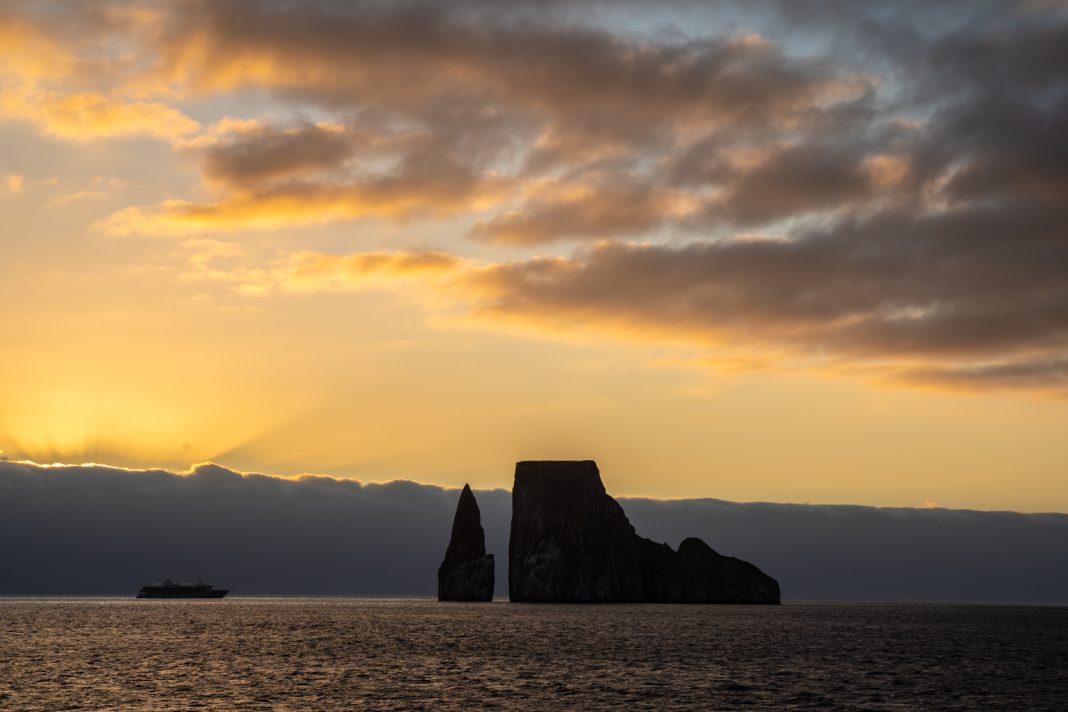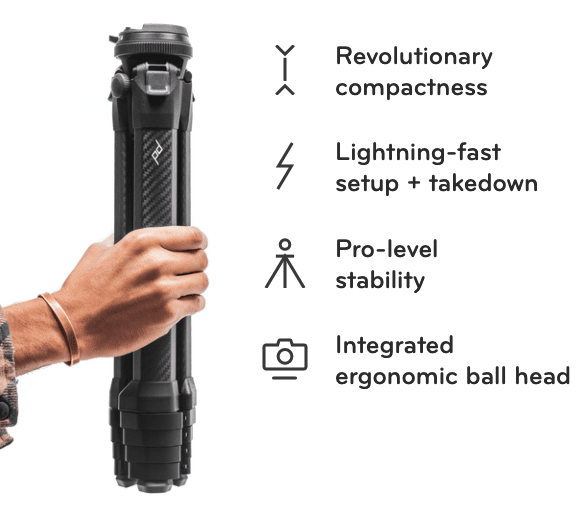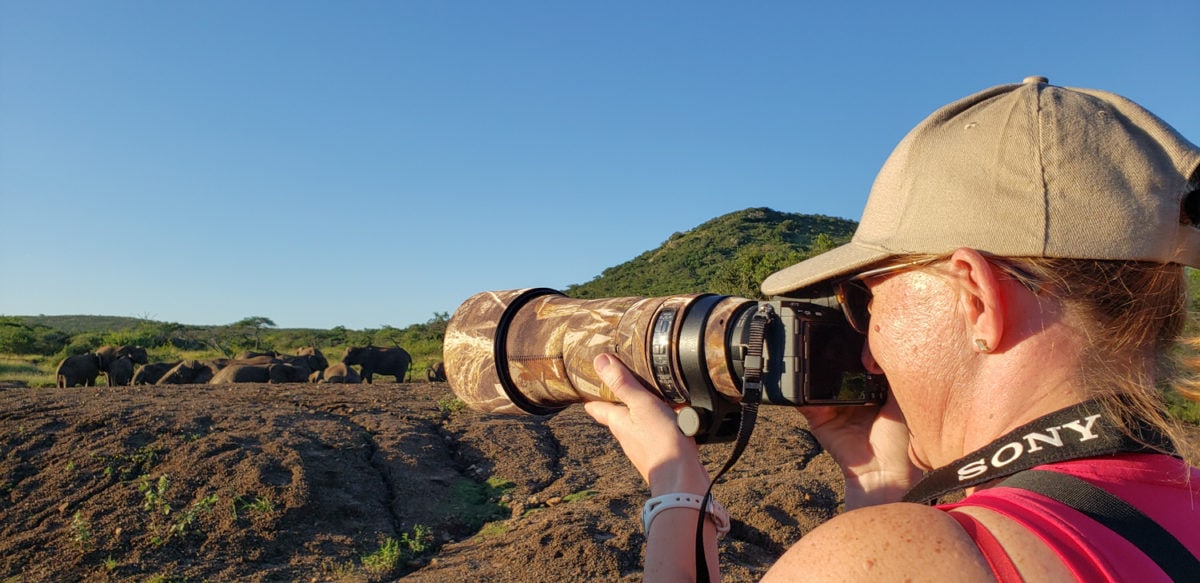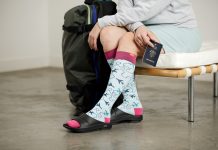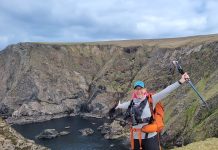I stepped from the zodiac raft to the cement jetty on the small Island of Plaza Sur; I had finally made it to the Galapagos Islands. I stood there for a moment soaking it in, looking around at the sea lions and iguanas unphased by my presence. Birds circled us overhead. The sun was low in the sky and the barren island was glowing in a soft buttery yellow light. In the distance I stared at the silhouettes of unusual looking cactus. My first thought was, this is my kind of place; remote, natural, unique…so why did I wait so long to finally come on a Galapagos cruise?
But at the same time – I’m also sort of happy I went when I did – a time when Galapagos tourism is really needed.
Galapagos Tourism and Conservation – It Needs Us
Tourism in the Galapagos has taken a hit due to Covid. Unlike other destinations, tourism is really all this archipelago has; 85% of the local economy is dependent on tourism, not to mention that the conservation of this unique archipelago depends on tourism too.
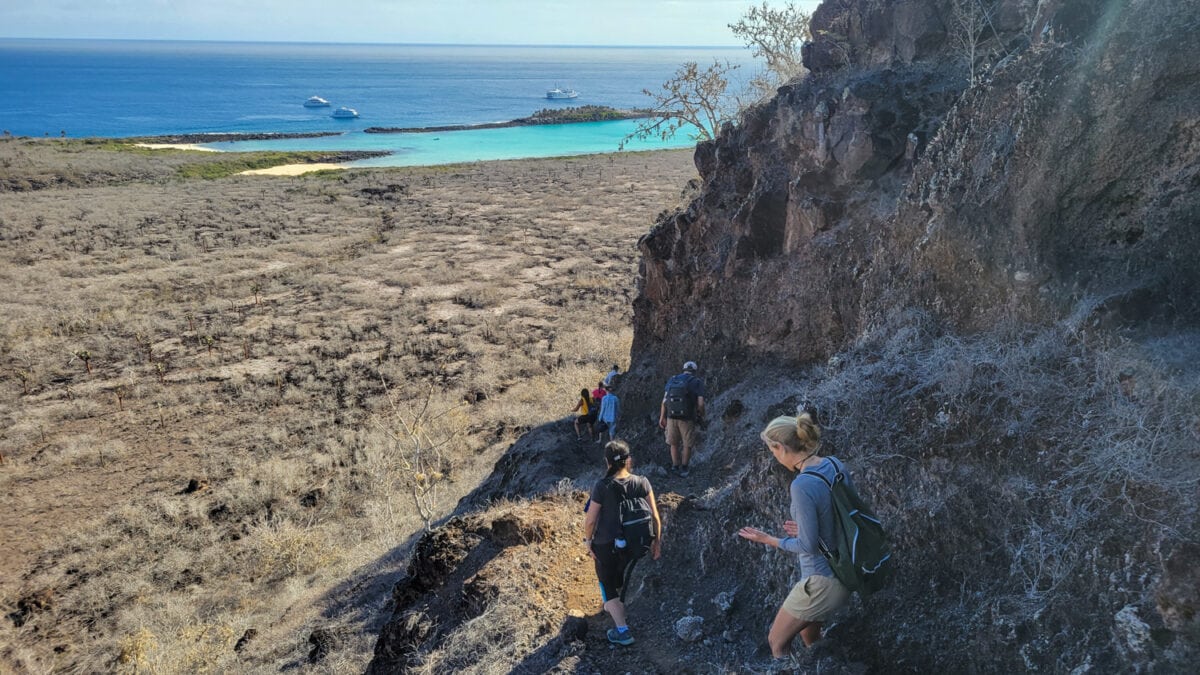
Without tourism, conservation wouldn’t exist and conversely, without conservation, tourism wouldn’t exist. In the Galapagos, they are deeply knitted together like family. Tourism dollars are needed and conservation dollars from the government are also needed; that’s the basics of sustainability.
With the pandemic’s airport closures and travel restrictions, tourism dropped by 75 percent compared to the 271,000 visitors in 2019. A four-month lockdown starting in February 2020 after Covid-19 was first detected in the region resulted in a total halt of tourism and near complete shutdown of scientific research.
This is the Time to Get Galapagos Cruise Deals
The good news for travelers is that as travel starts to ramp up again (YAY!), that means that there are some great deals to be had on Galapagos cruises to the islands.
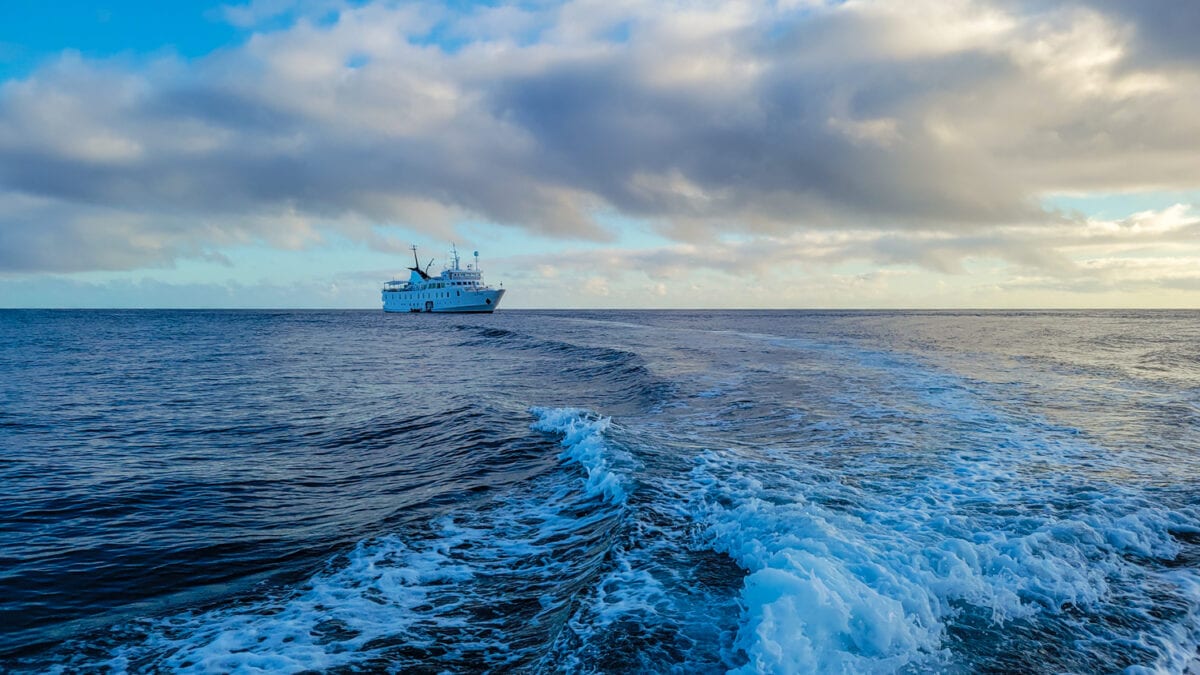
I went with Metropolitan Touring who has a very long history with the islands and is owned by a native Ecuadorian. They have so many options when it comes to a Galapagos Islands vacation starting with multiple ship options. The company operates three vessels in the islands: Santa Cruz II with 50 cabins and space for 90 guests; Yacht La Pinta with 24 cabins for 48 guests; and Yacht Isabela II with 20 cabins for 40 guests. The company also operates Finch Bay Galapagos Hotel on Santa Cruz Island if you want to do more land-based adventures.
Because Metropolitan Touring has all of these options, they can normally offer some pretty good deals that go along with stops at their other award-winning properties in Ecuador; Mashpi Eco Lodge and Casa Gangotena historic hotel in Quito.
My best advice on how to learn of their current Galapagos Islands cruise deals is to follow them on social media as they announce all of their Ecuador deals and sales there first!
Metropolitan Touring Facebook | Metropolitan Touring Instagram
Now that you have found a great deal to travel to the Galapagos it’s time to start the fun part…the trip!
Choose a Galapagos Cruise Itinerary that is Right for You
The Galapagos has 13 main islands and 7 small islands. Most people only have a week to spend on a Galapagos vacation, so that means you’ll have to specifically choose which islands you want to visit. Cruises in the Galapagos normally have a few different routes; eastern and western are the most popular that cover specific islands in 5 to 7 days. Metropolitan Touring also has a northern route.
And since each island is different, you’ll want to choose your route carefully based on what wildlife you want to see and what activities you want to do. I’ve compiled a way to help you make this choice by sharing 13 things to know before you book your Galapagos vacation. Make sure you read this as it’ll help you understand which islands you may want to go to. Once armed with that knowledge, you can choose a route; eastern, western, or even northern.
My Eastern Islands Galapagos Itinerary on La Pinta Yacht
I chose the Eastern Islands cruise on Metropolitan’s La Pinta Yacht. This gave me the chance to see and photograph 11 of the ‘Big 15 Galapagos Animals’, and do a good amount of hiking and snorkeling. I didn’t really care too much about the towns, my goal was to be more remote.
We boarded the La Pinta from Baltra Island, settled into our cabins, and off we went!
South Plaza Island: Best Galapagos Landscapes and Sunset
We arrived at Plaza Sur before sunset, and everyone was excited for our first landing. I love that feeling of anticipation of experiencing the reality of your expectations – it’s exhilarating. And that’s exactly how I felt as I stepped off the zodiac and onto the island.
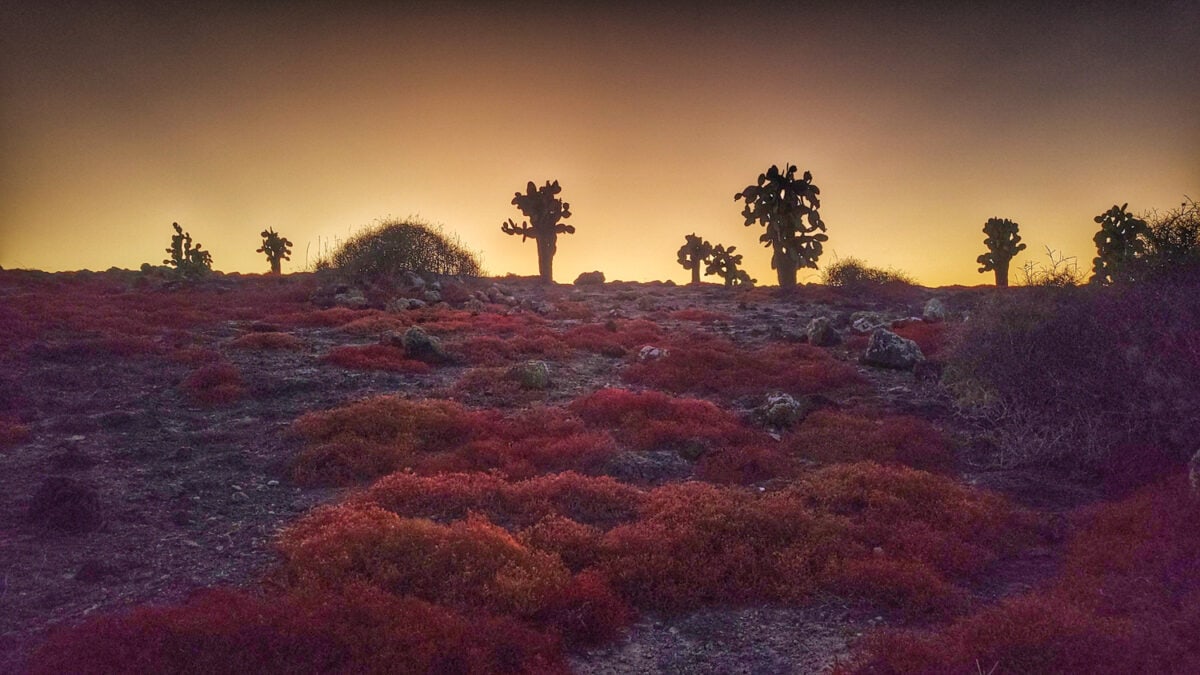
My first impression of the island was that it was really barren, but what it lacks in actual trees, it makes up for in spectacular vegetation. The island glowed with color. A dense carpet of vibrant red and purple Sesuvium combined with unusual prickly pear cacti wowed me upon first look.
Our guide told us that during the hot season (Feb to May) the carpet is lush green. But in the dry season (June to January) the colors change to spectacular red, orange and purple tones; which is what we were experiencing now.
We hiked around the entire island (it’s pretty small), fought the wind, and enjoyed our first look at sea lions, iguanas, birds, and the funky looking Opuntia cactus that were as big as trees. Endemic to Galapagos, the Opuntia cactus is the most widely distributed and numerous plant found in the Archipelago. The Opuntia, also known as prickly pear cactus, and has six different species on Galapagos. They made the landscape seem other-worldly!
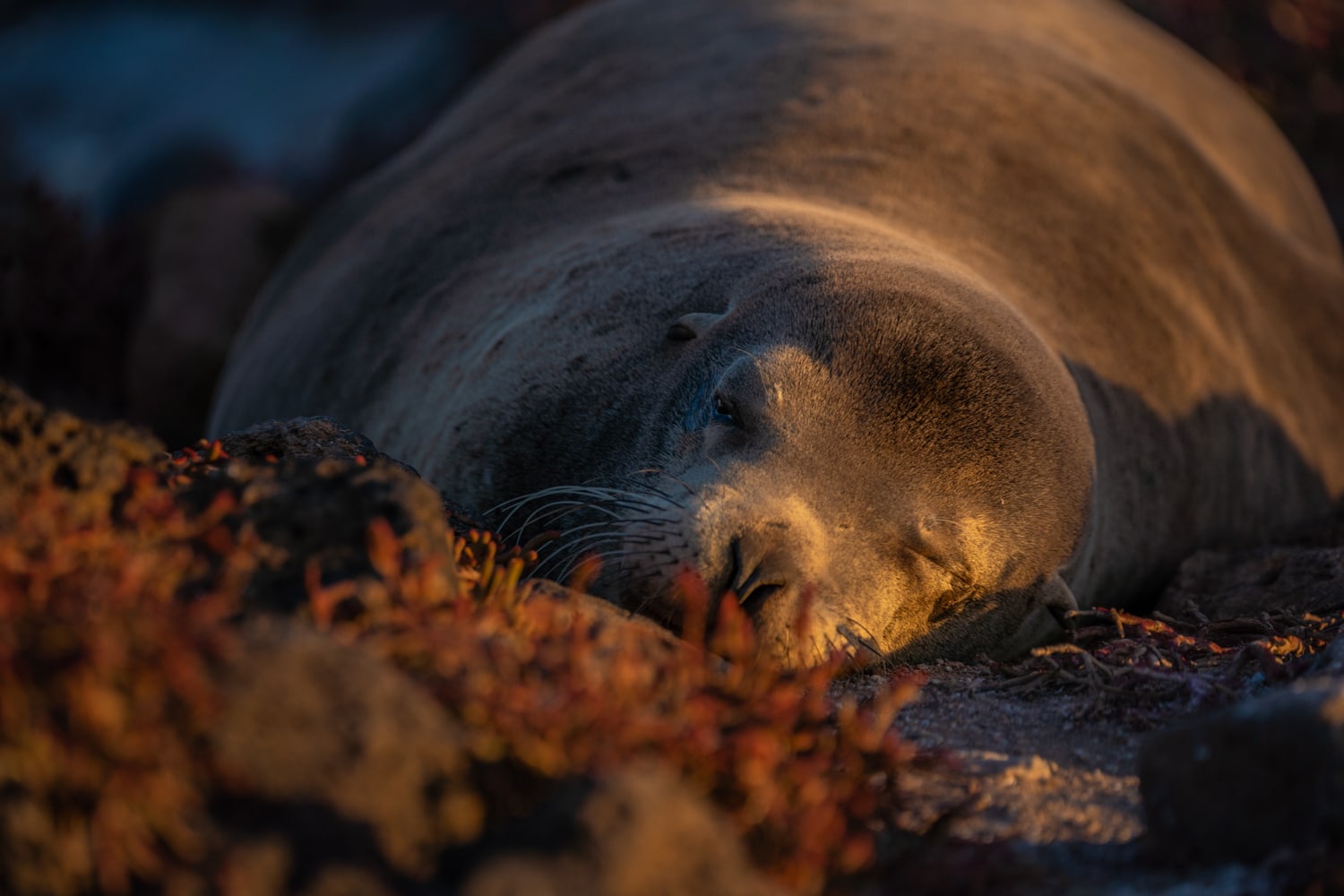
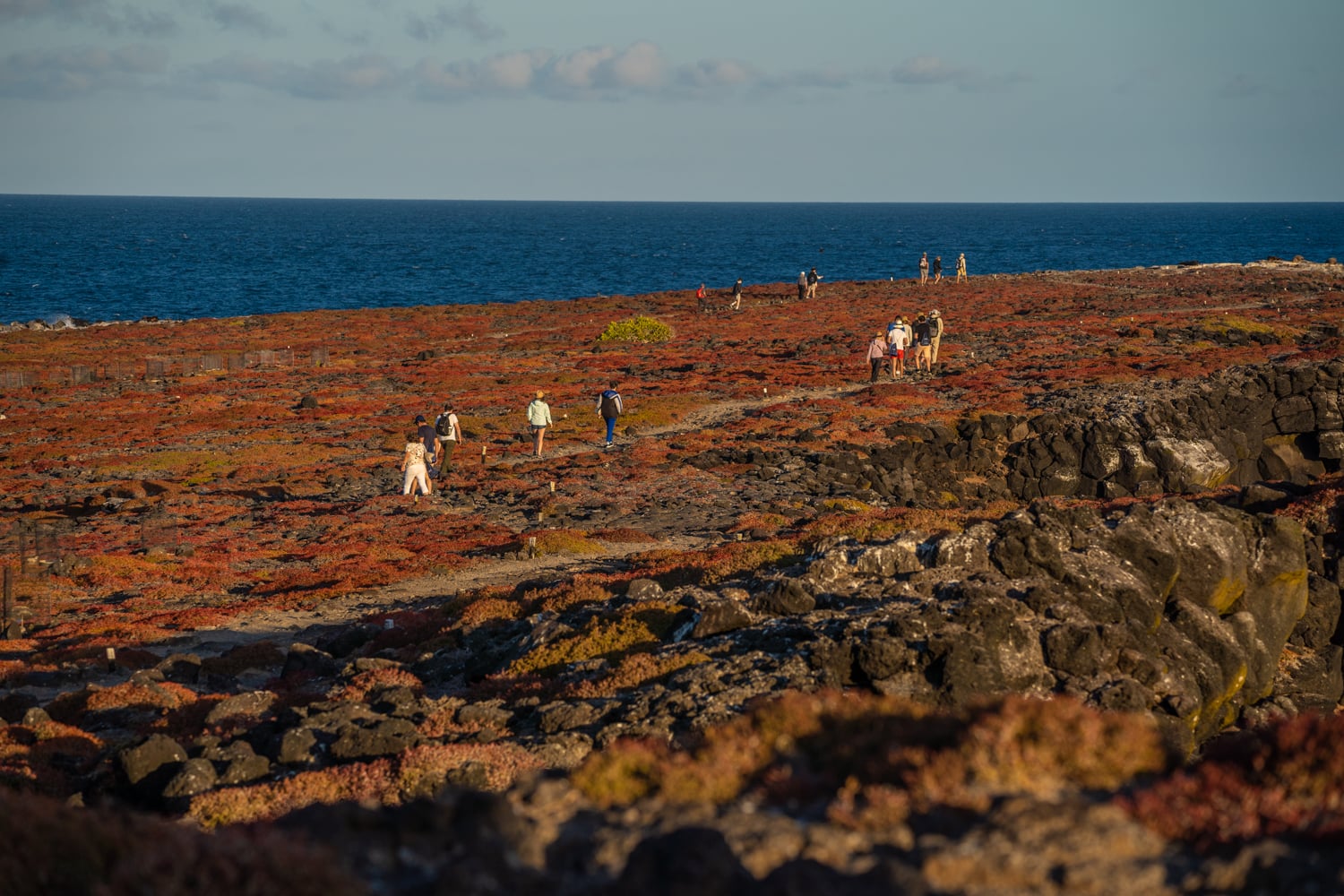
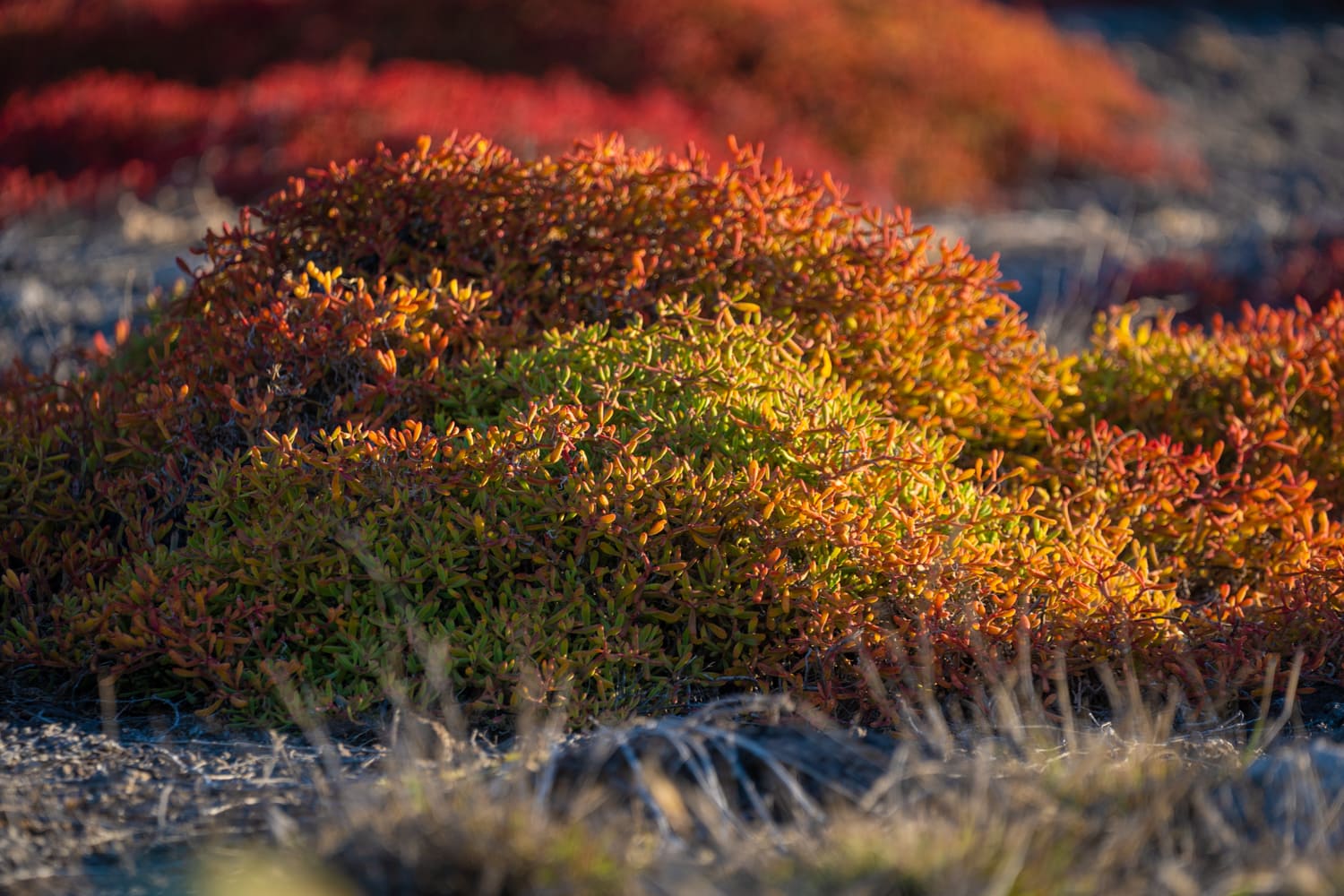
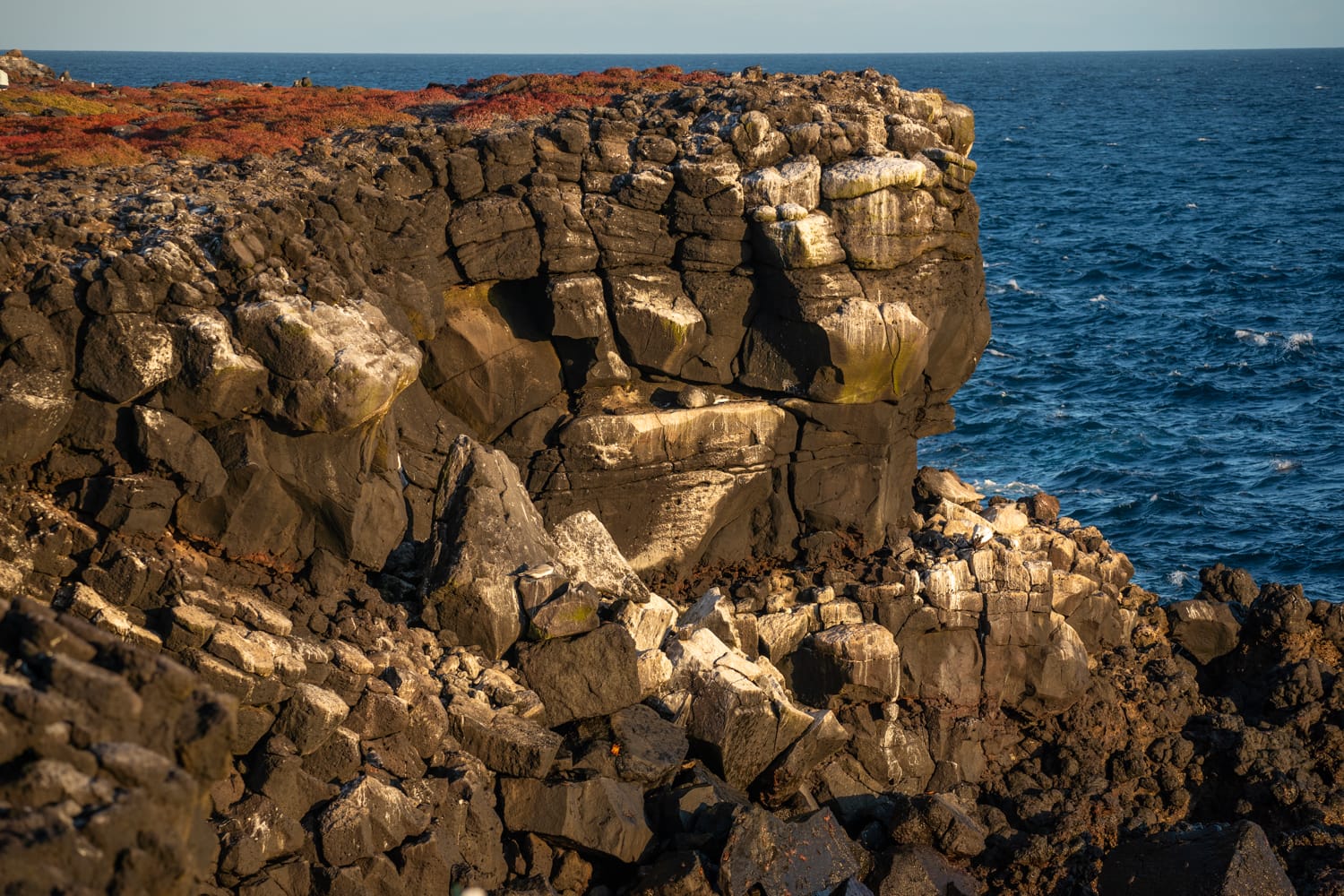
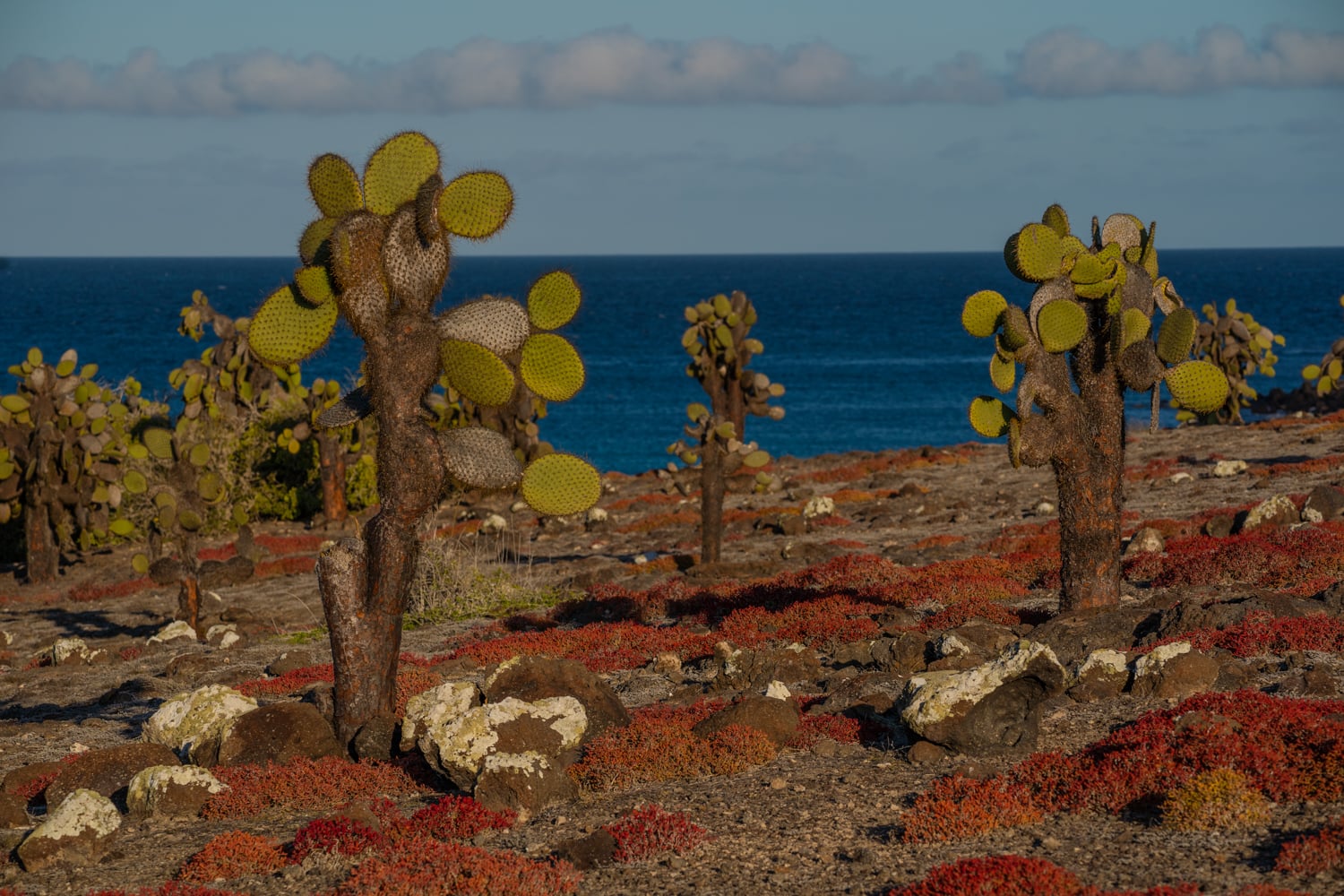
Plaza Sur is also known as the iguana island because it’s a location where the territory and breeding season of the Galapagos land iguana overlap with those of the marine iguana, giving rise to a unique population of hybrid iguanas. Iguanas that can survive on both land and sea…umm…so cool. And it’s only found on Plaza Sur.
On one side of the island were high sea cliffs that we could look out over and see nesting sea birds. And we learned pretty quickly that you had to be careful where you stepped as sea lions and iguanas were plopped right in the middle of our path.
We were also blessed with a full moon that night rising up over the ocean creating an even more spectacular scene. What a way to start our Galapagos cruise!
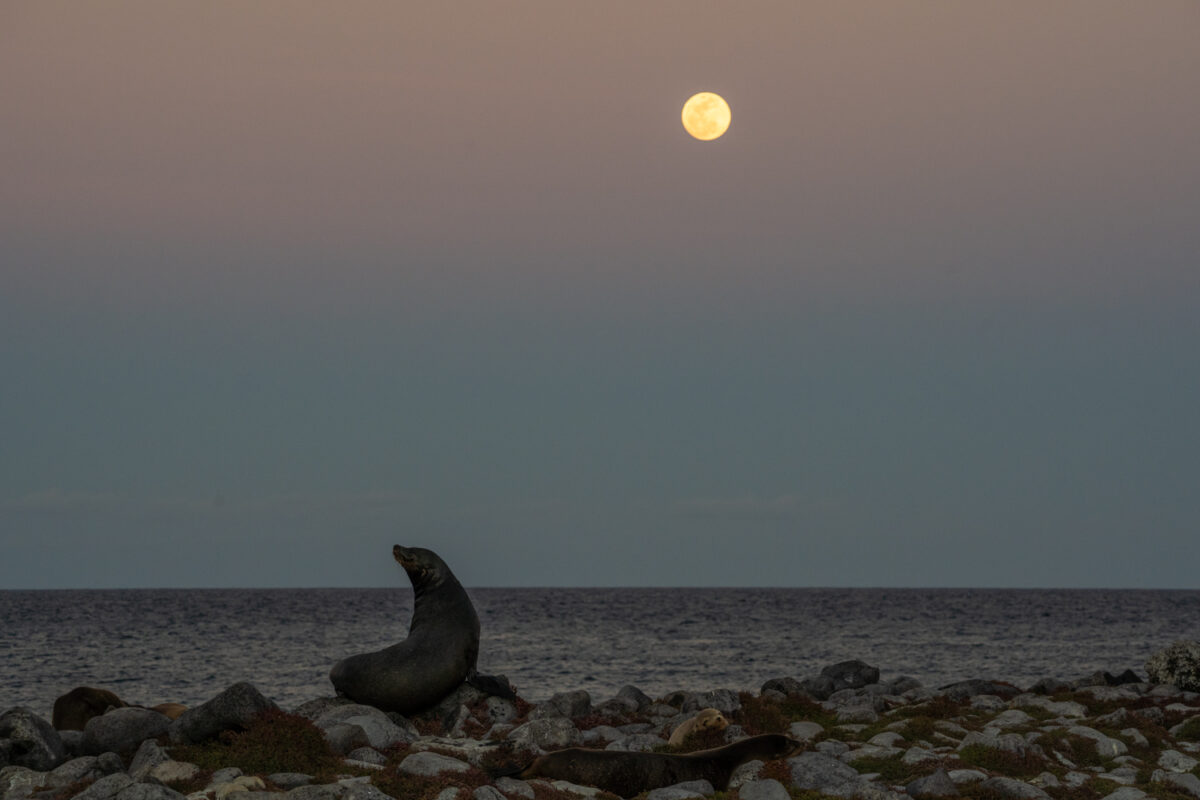
Santa Fe Island: Galapagos Hiking and Snorkeling
We went ashore onto Santa Fe Island early in the morning. It was a bit cloudy when we landed, but it was perfect hiking weather – which is what I was excited to do there. We split up into groups; a strenuous hiking group and a ‘strolling’ group – you can guess which one I went on. Being able to split into hiking difficulty groups is something you can really only do on a larger expedition ship like La Pinta.
Our hike had us climbing some pretty steep terrain. I worked up a sweat, but getting to the top was worth it; the views of the bay and the beach were eye popping. As we hiked our guides taught us about the wildlife on the island and also the trees.
Santa Fe Island Trees
I was pretty enamored by the white trees we passed called Palo Santo trees. Palo Santo is a sacred tree and grows in select parts of South America. Translated from Spanish, Palo Santo means Sacred Wood. You often find the wood used by Shamans. However, I loved these trees for their beautiful color and photogenic. The tree bark is white and silvery – but a yellow lichen tends to grow on them – making them this vibrant tree among a fairly desolate landscape on Santa Fe Island.
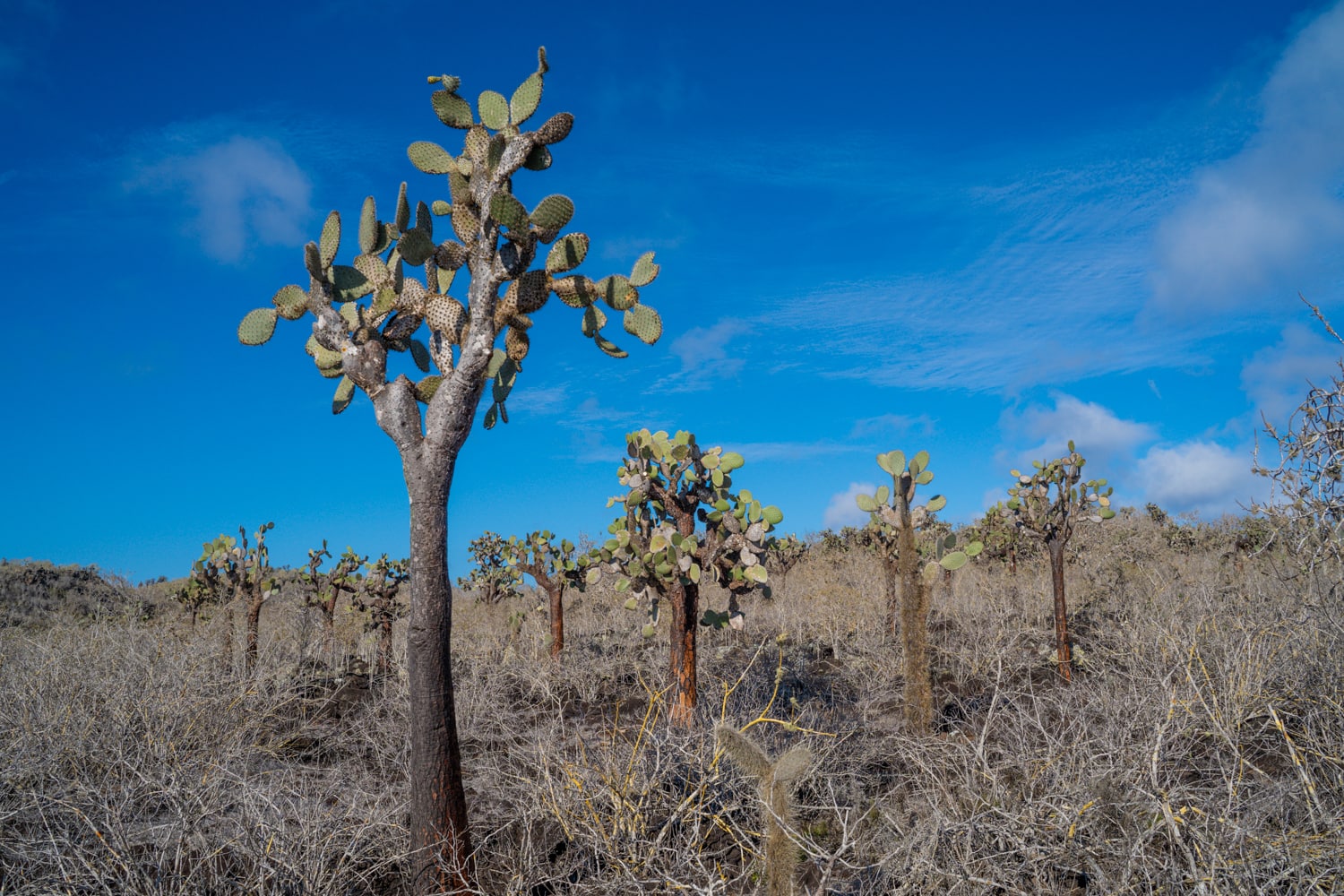
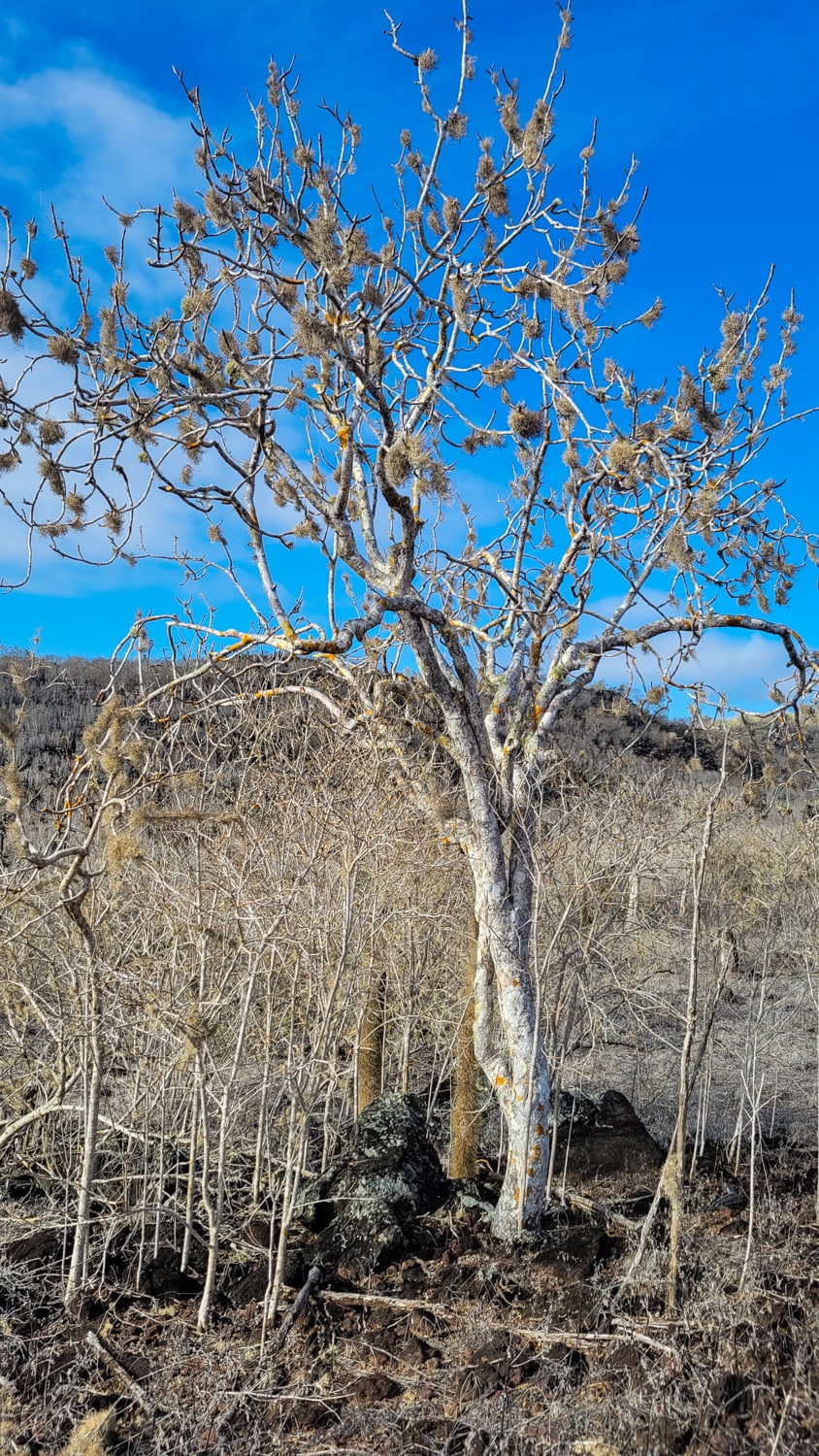
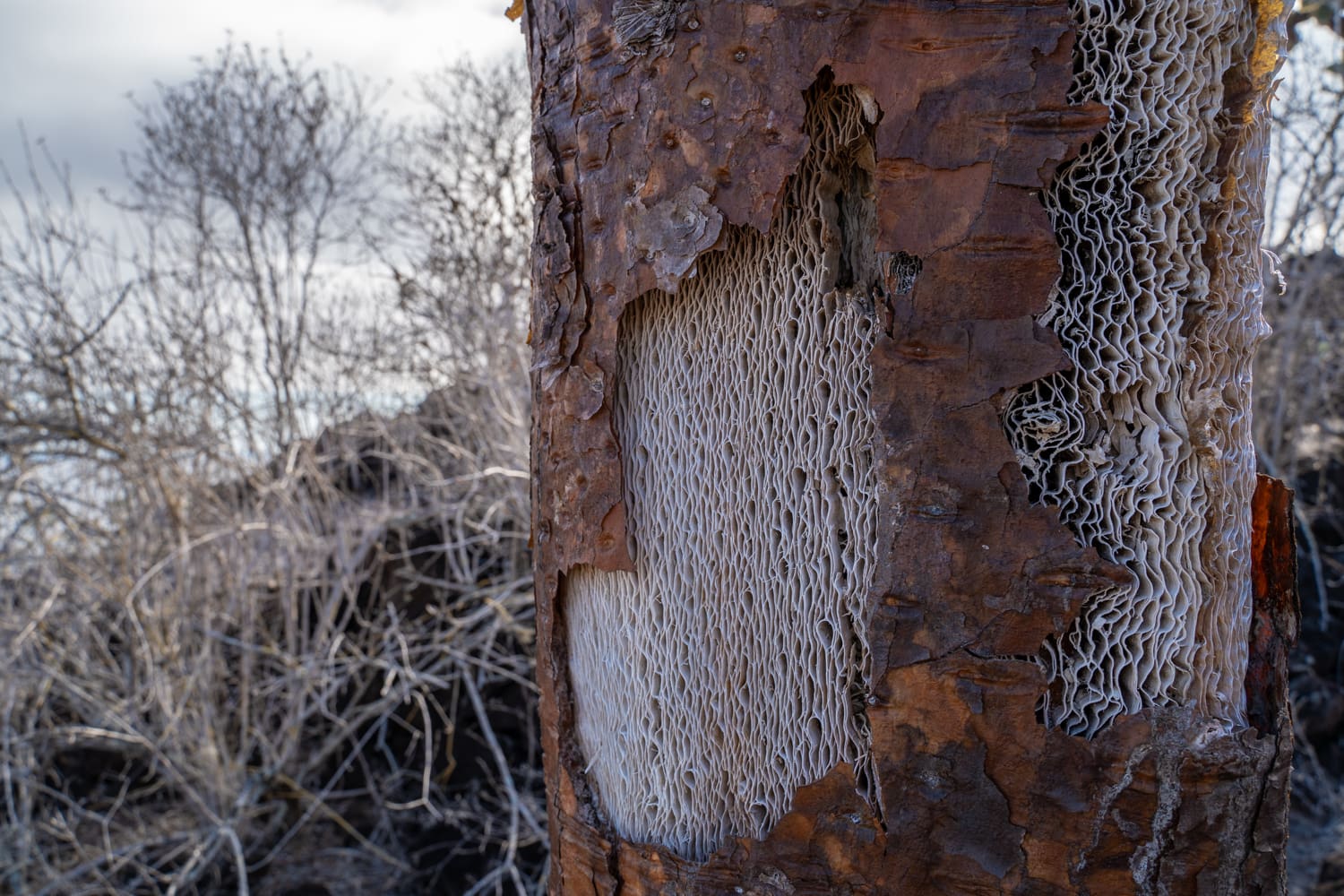
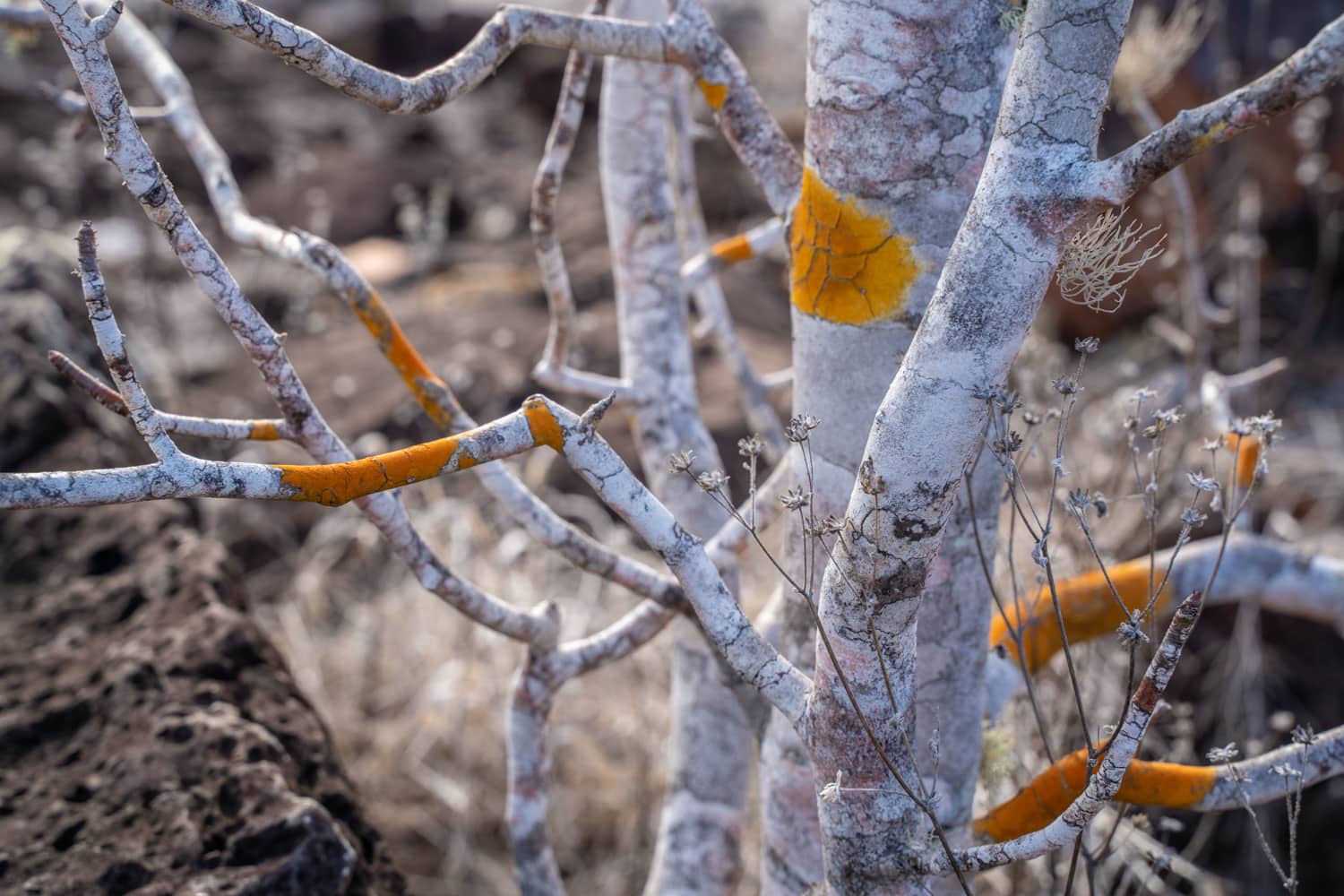
It was here where we could get up close to the Prickly Pear Giant Cactus trees too. They had an interesting way to camouflage and protect themselves. What appeared like bark on the trunk of a tree was really only a paper-thin covering hiding the spongelike layers inside that house the water the cactus preserves.
Snorkeling at Sant Fe Island
Santa Fe is also where we did our first snorkeling adventure! La Pinta furnishes all of your needed snorkeling gear including a short sleeve wetsuit that is a must at this time of year when the water temps are a little cooler.
As I jumped in the water, it didn’t take me long to find a friendly Sea lion. I gingerly swam towards it, and suddenly it spotted me and came swimming right for me in an upside-down position. I squealed in delight as it would swim at me and then duck under me right at the last minute. The sea lions loved to be around people, twisting, dodging, and what I can only describe as playing with us in the beautiful Galapagos underworld.
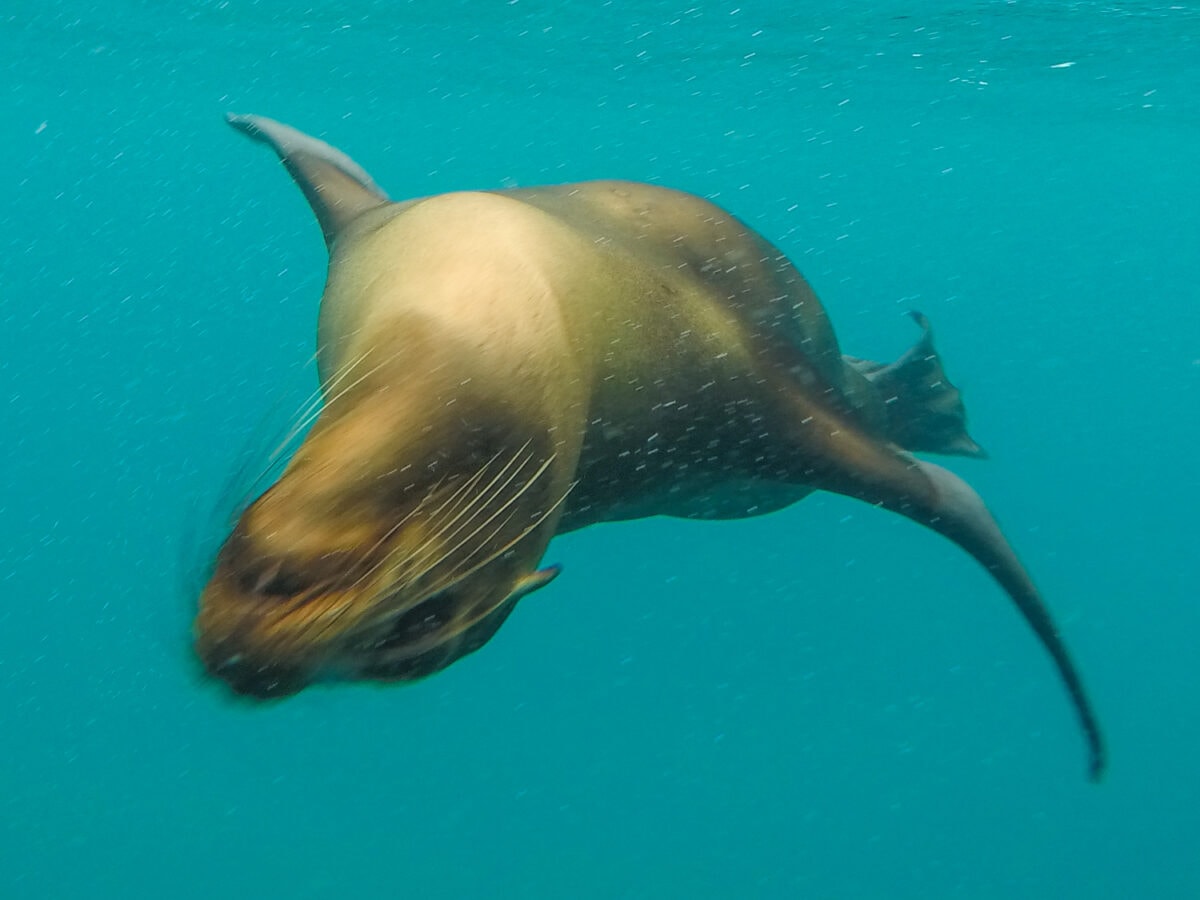
Our guides also led us to sea turtles, schools of fish and pointed out rays on the sandy bottom. But the sea lions – they were my joy. After that I knew I would take every opportunity to snorkel that they offered during my time in the Galapagos – it was epic!
San Cristobal Island: Galapagos Diversity
San Cristobal has a little bit of everything – even human life!
Puerto Baquerizo Moreno
We stopped in one of the most populated parts of the Galapagos – Puerto Baquerizo Moreno – the capital of Ecuador′s Galápagos Province. About 6000 people live in the town but it was by far the most ‘urban’ (that’s a stretch) site we stopped at. At the port where most people entered the city you could get a feel for tourism offerings as there were tourism shops, restaurants, and hostels. There was also a healthy population of sea lions that apparently thought they were just one of the local people. You’d find them on boats, beaches, picnic tables, and even waiting on park benches.
I think one of my favorite things I saw while walking around town was the playground with a sea lion slide – it’s something where you won’t find anywhere else…it just made me smile.
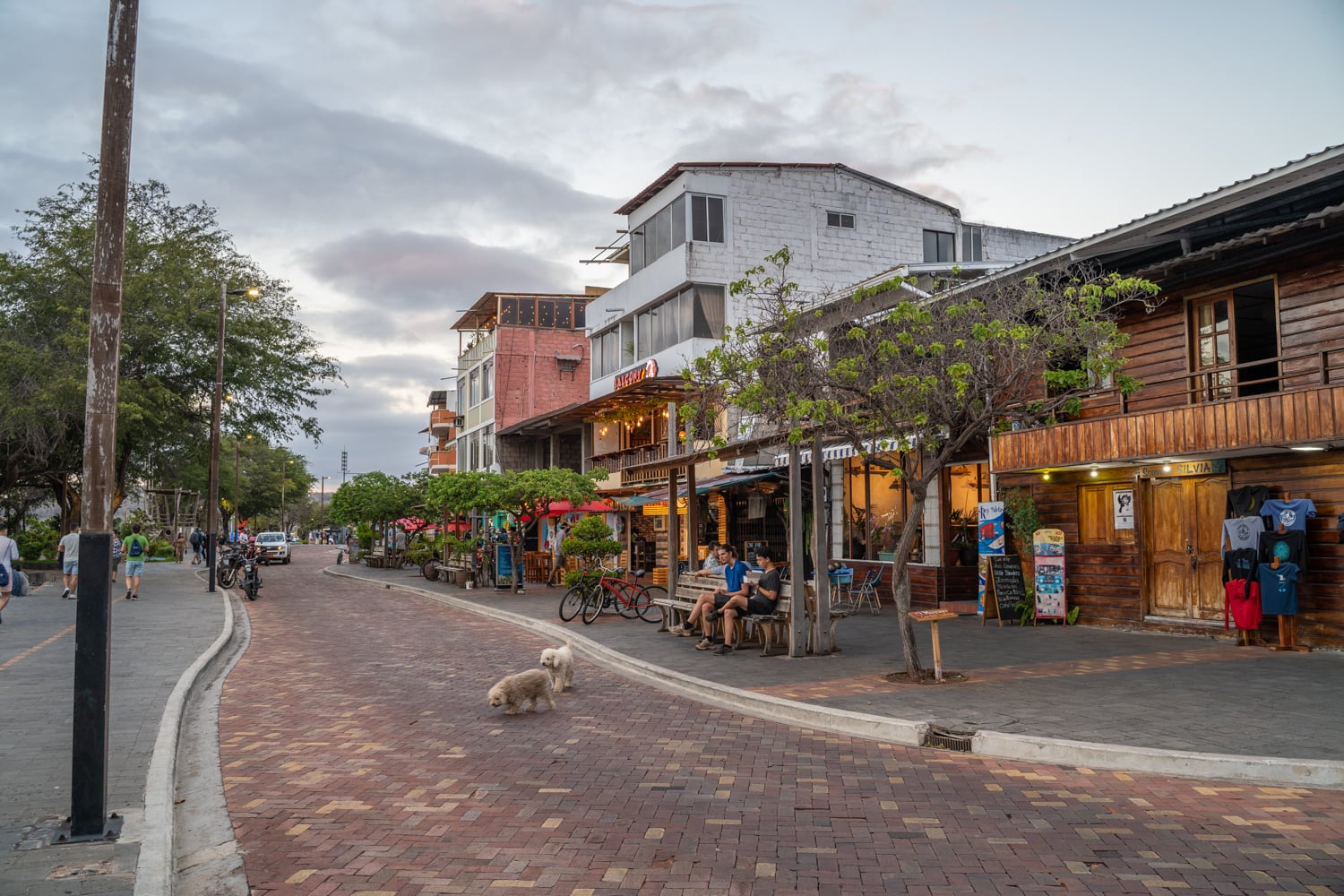
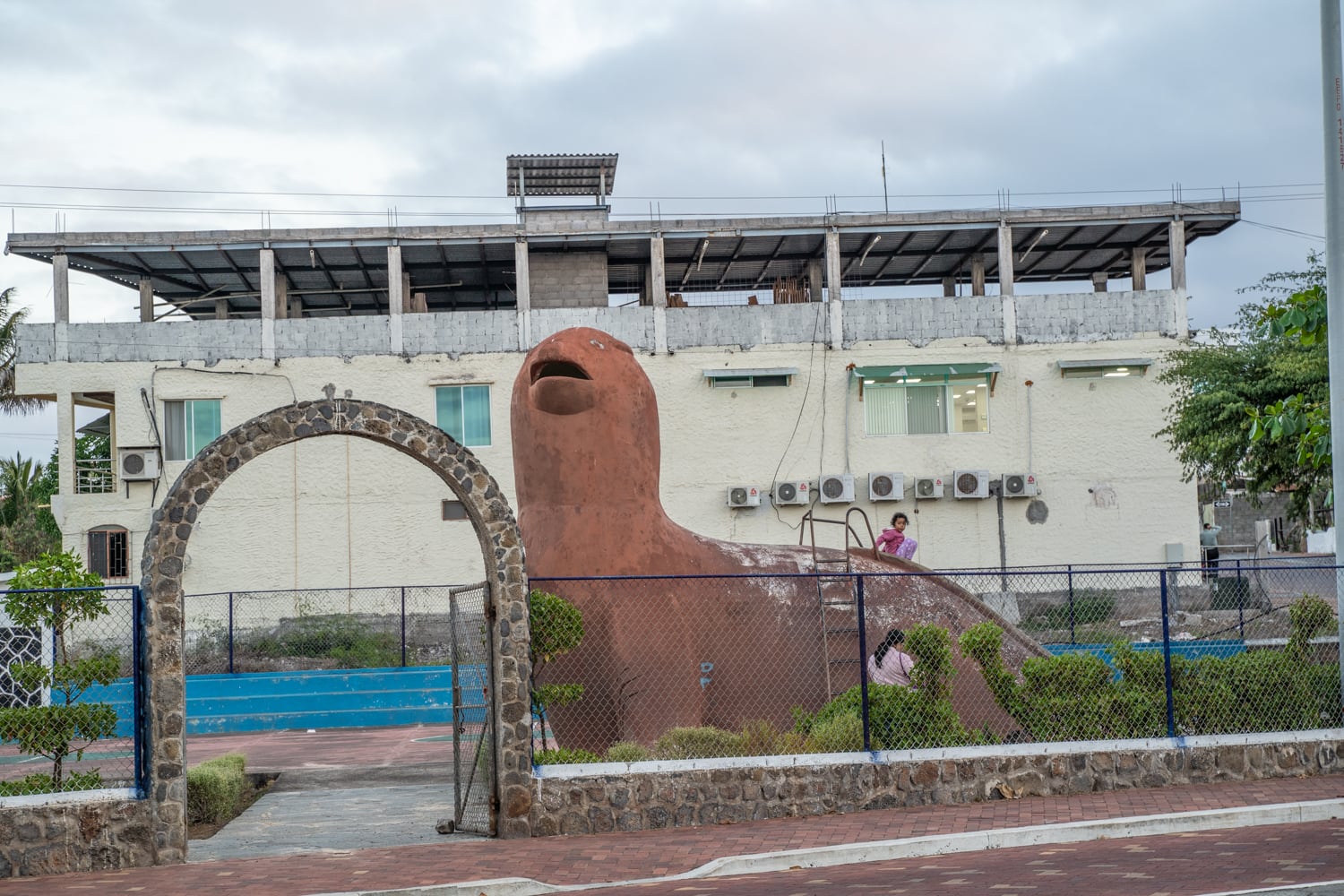
Cerro Colorado Giant Tortoise Refuge
The main reason we stopped in the town was to visit Cerro Colorado – a Giant Tortoise Refuge and breeding center. I knew about the giant tortoises on the Galapagos – but I don’t think I was prepared for just how big and prehistoric they were!
Years ago, the main victims of the human presence in the Galapagos were the tortoises. Now there are several centers that assist in the breeding process on the islands. This one on San Cristobol Island repatriate’s tortoise from other parts of the island to this protected area where they have quite a large area to roam. When eggs are found by researchers, they are taken to be cared for by the refuge for their first 5 years of life so that they can get off to the ‘right start’. This ensures that the species is safely repopulating and will continue for years to come.
Although the islands were once thought to be home to at least 250,000 tortoises, only about 15,000 remain in the wild today.⠀
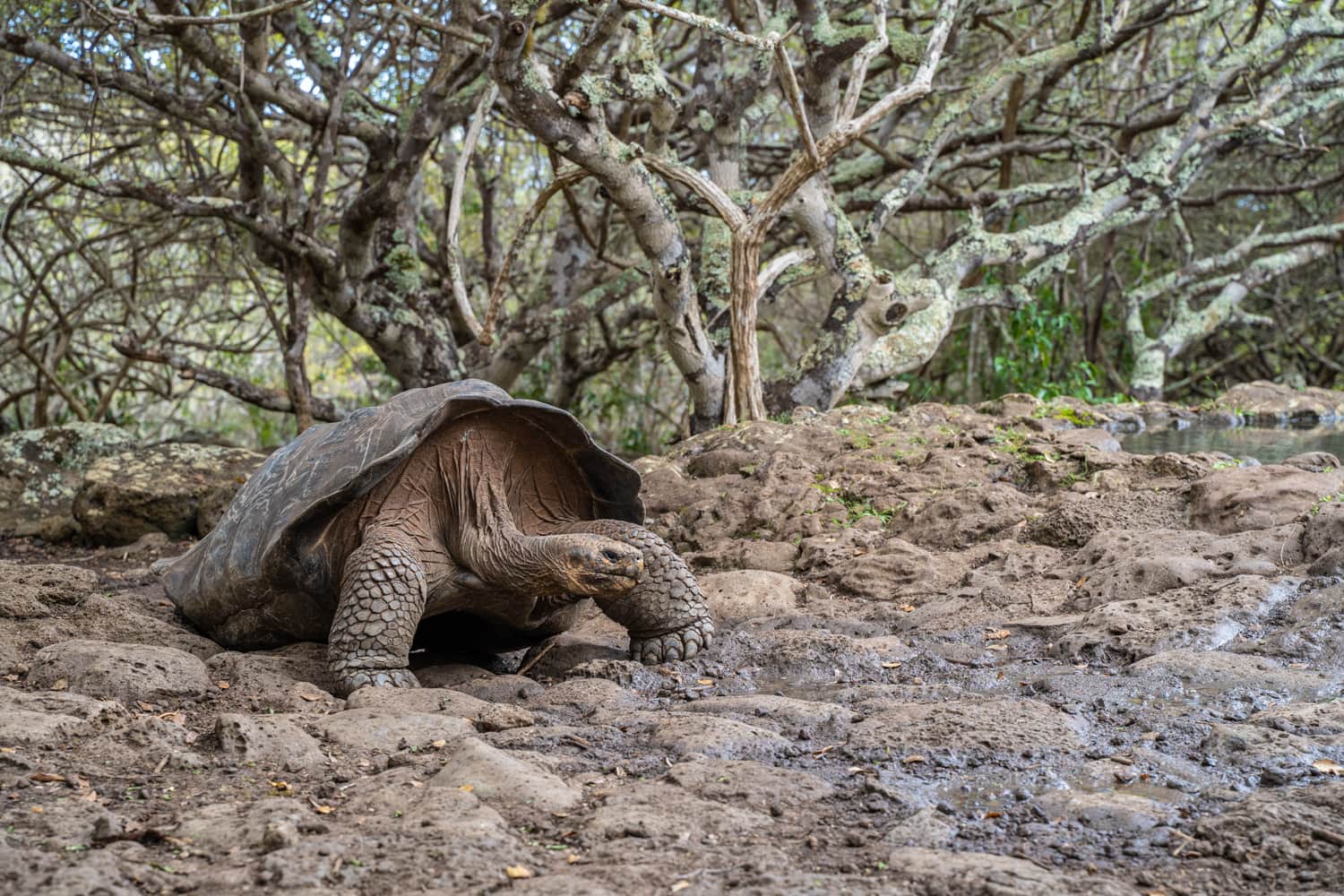
The adults were incredible to watch move around at their slow pace. They were around 125 years old and 300 to 500 lbs. Their giant size has been linked to the absence of predatory mammals on islands, but researchers have also proposed that tortoises were already giants when they reached the remote archipelagos millions of years ago.⠀
Punta Pitt – Bring on the Boobies!
The Blue Footed Booby is probably the best known of the 3 types of Boobies in the Galapagos, but did you know there is also a red footed one (that has a blue beak!) and one that wears a ‘mask’ – the Nazca. And just how did these birds get their distinctive name? The term was taken from the Spanish word “bobo”, which translates to clumsy. This was because it referred to the comical way that boobies walk.
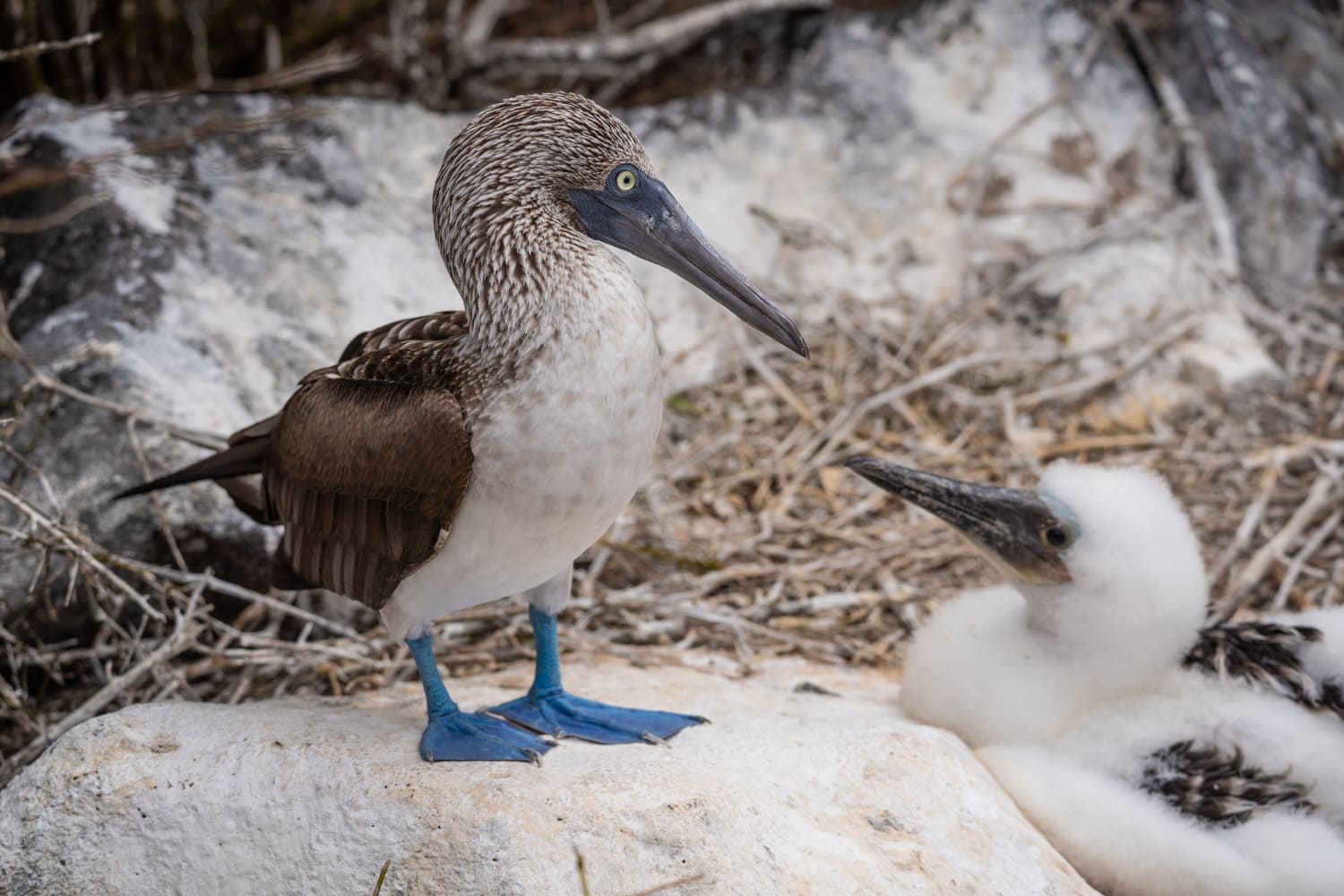
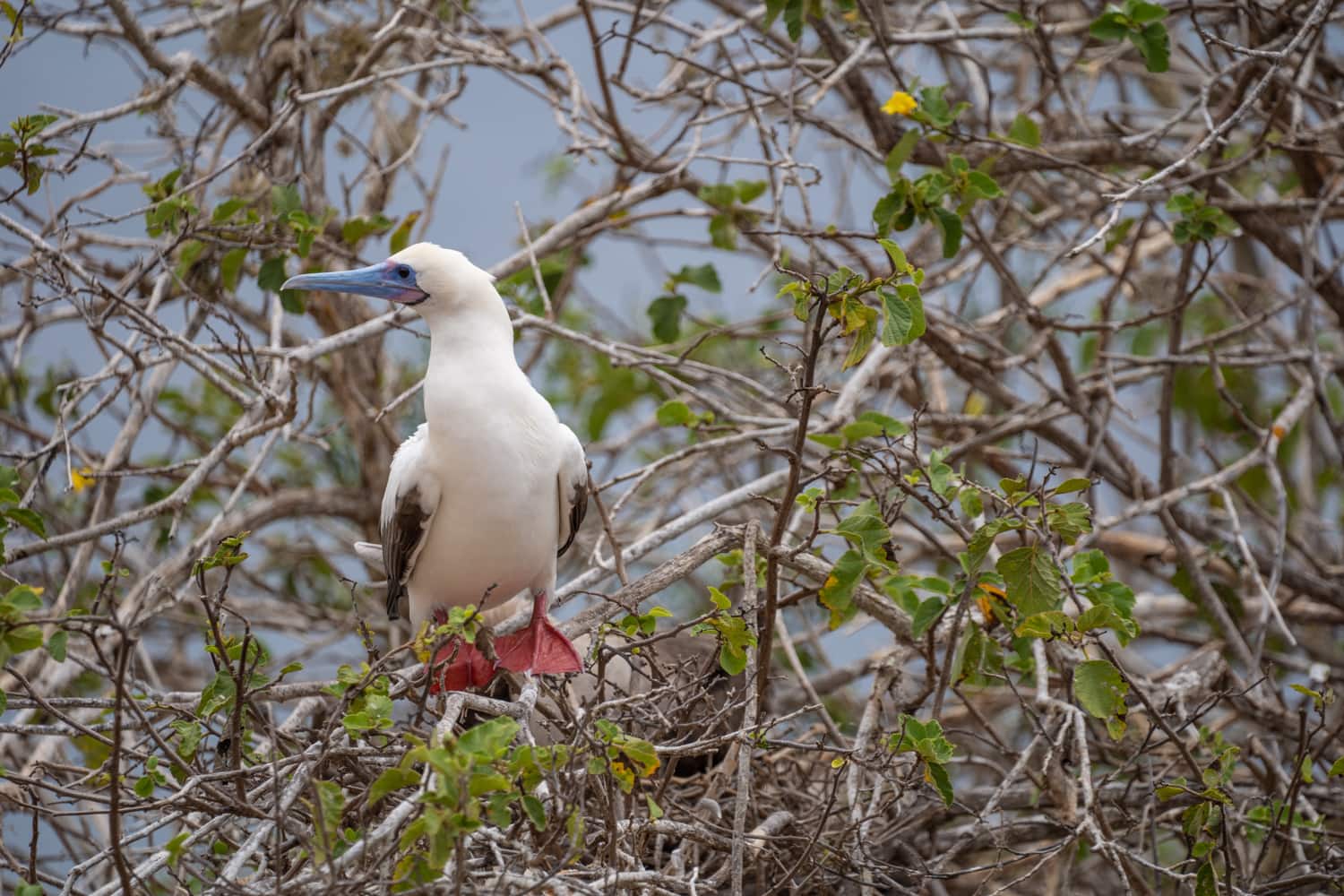
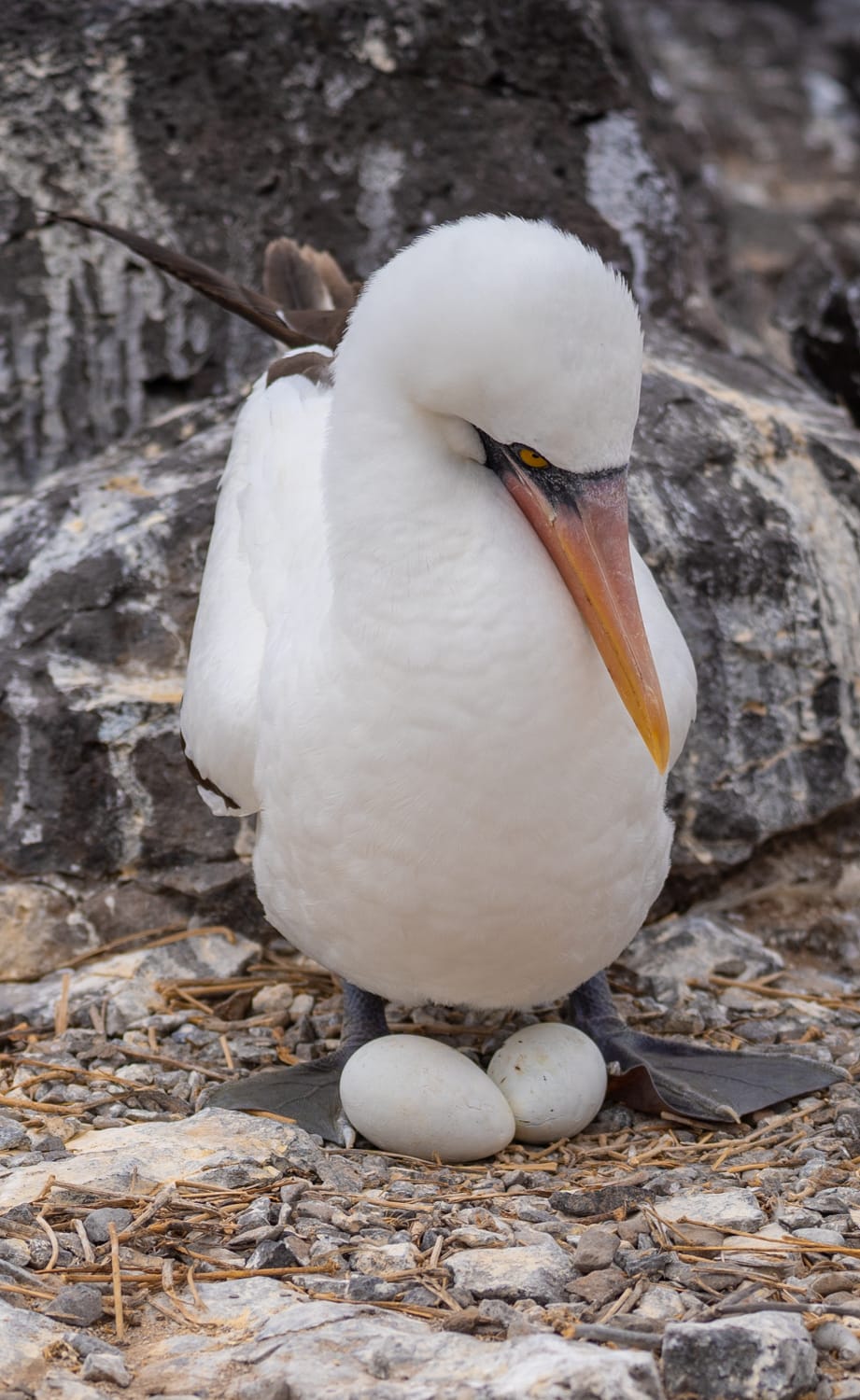
Punta Pitt was our first chance at Boobie sightings. It is home to one of the largest populations of Red Footed Boobies. We landed on the beach and broke up into hiking groups to head up, up, up to the bird cliffs. Every day we were able to hike in the Galapagos – this is how we were able to get out and see all of those incredible animals. An expedition leader came with us on every landing to provide us context to what we were seeing and experiencing. The hikes weren’t necessarily hard – however it’s always great to get off the ship to stretch the legs!
I thought this hike was really beautiful, we hiked through some narrow areas surrounded by rocks and suddenly popped out on top of cliffs. This is where we started to see our first Boobies. The Red Footed Boobies were staring at us from the trees, sort of blending in except for their red feet. Many of them were sitting on eggs. However, I think I was most stunned about how calm they all were with us just hiking a few feet from them.
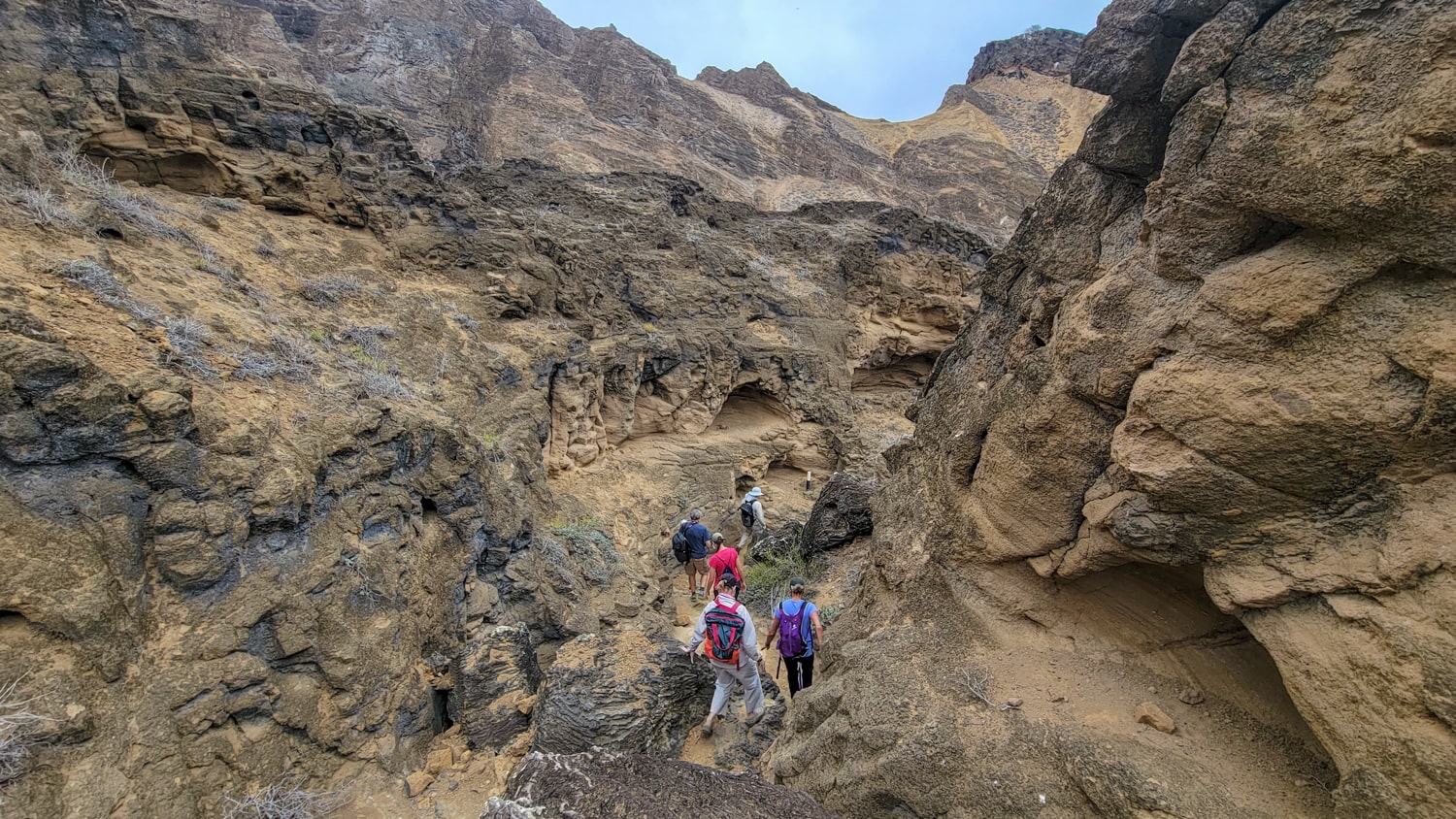
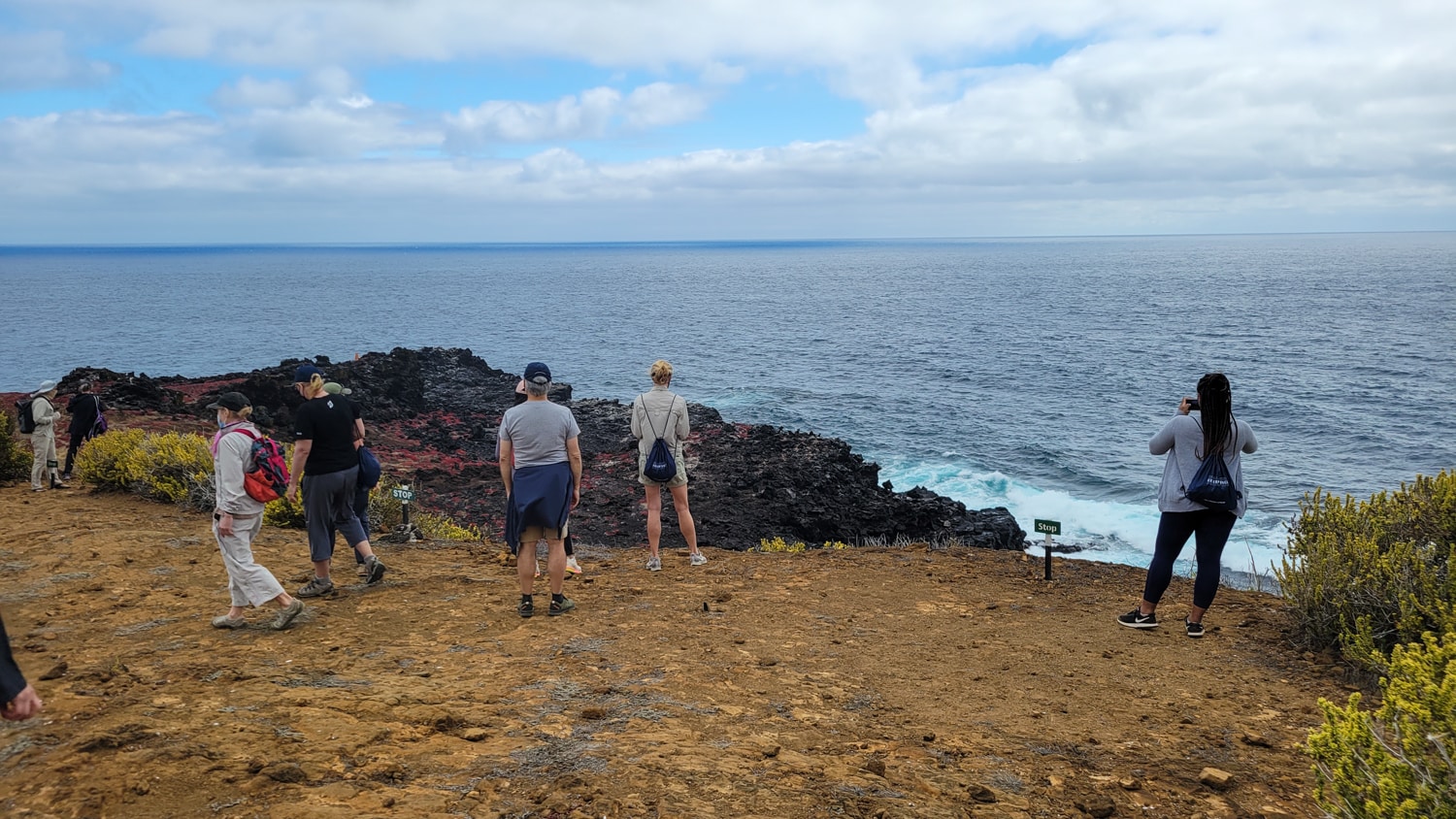
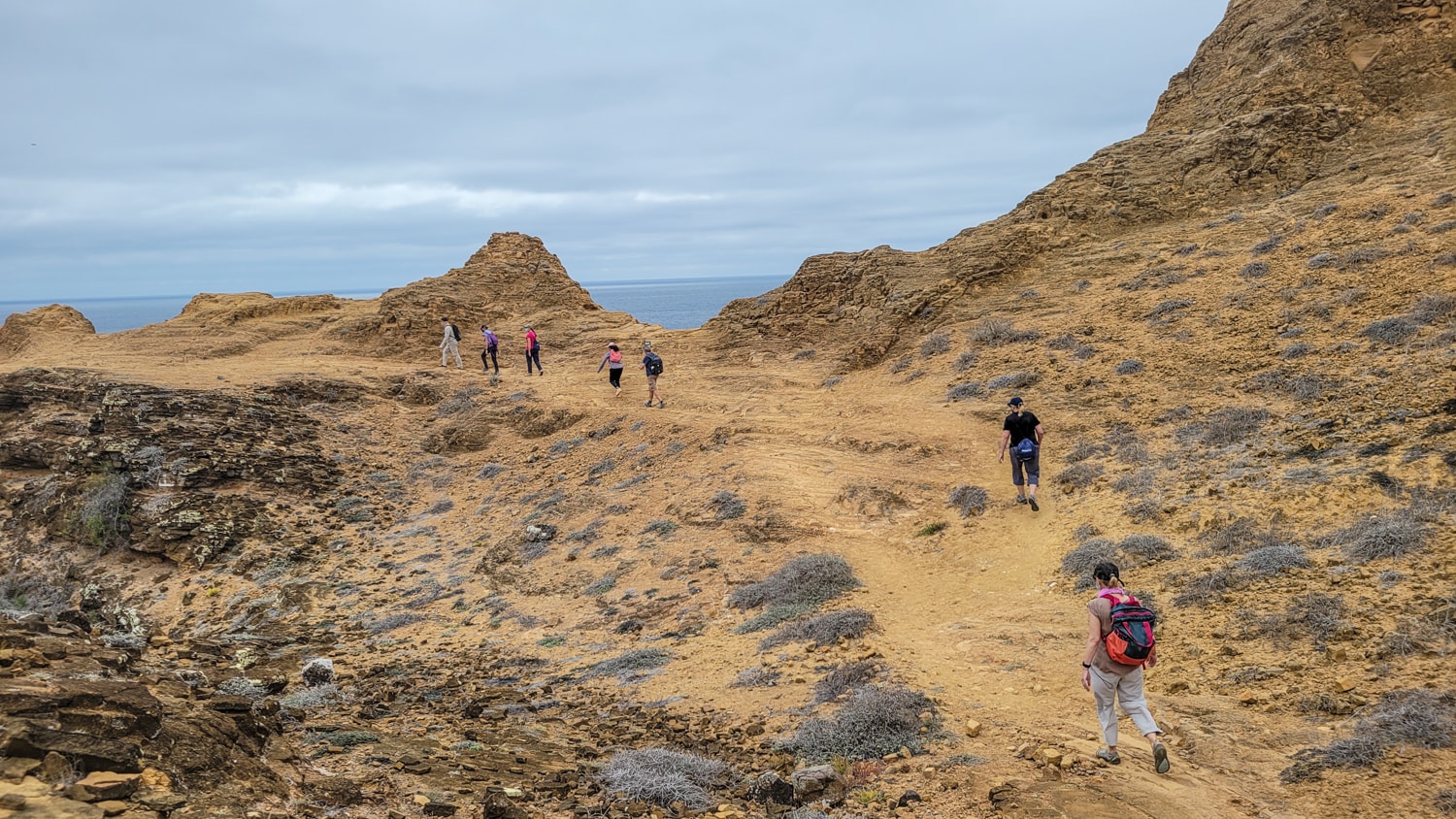
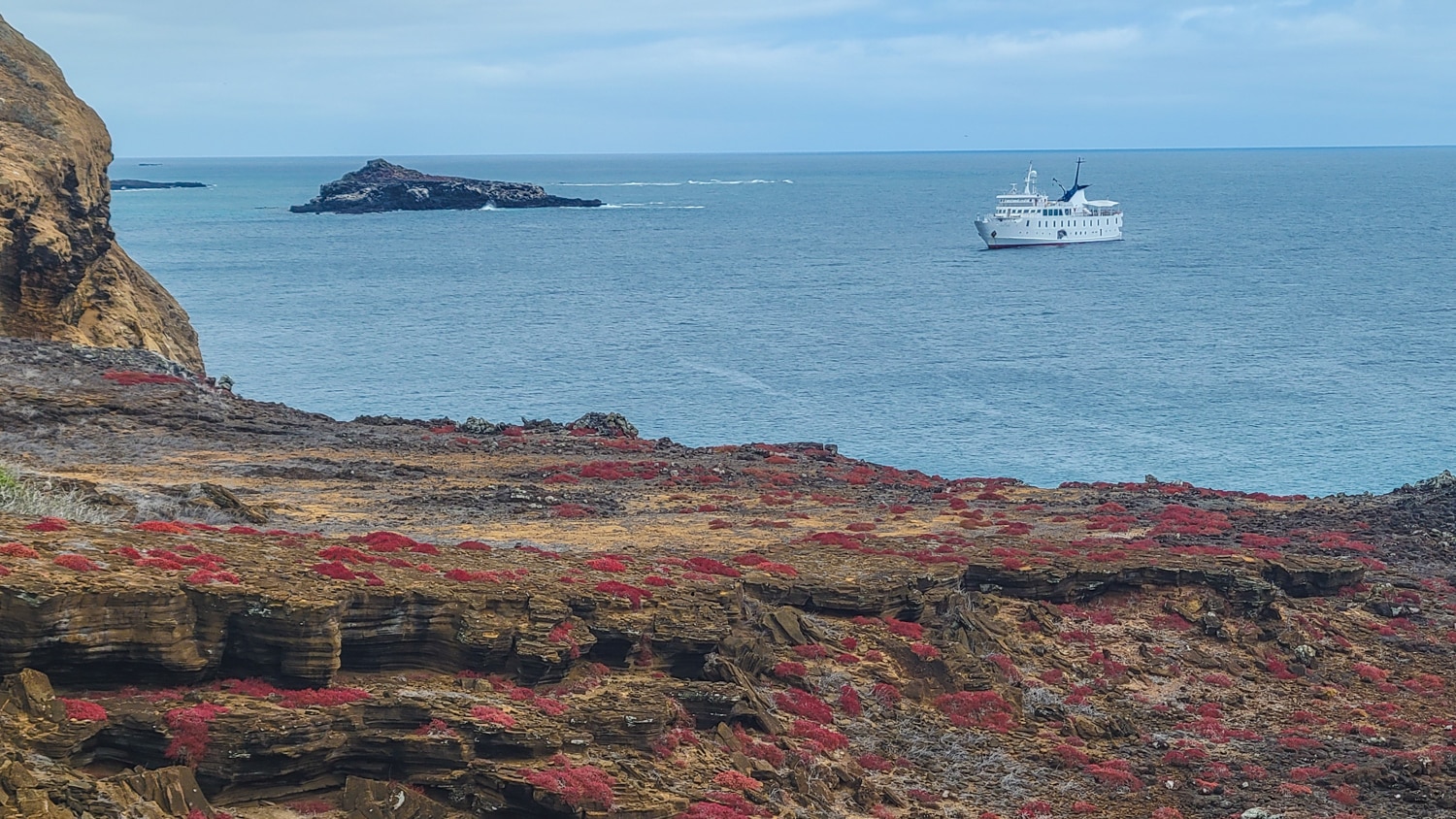
With no land mammals and predators on the island, the birds had no fear of us. And this is exactly what makes the Galapagos wildlife so unique. Many of the Boobies constructed nests right on our trail…they were that unafraid. We (humans) were just part of their ecology by simply passing by day after day not disturbing them; they have learned not to be fearful of us.
It’s a special combination of continuous human contact in a protected archipelago – and that’s why the Galapagos Islands are so special. It’s conservation and tourism at its best.
We finished our morning at Punta Pitt with an incredible snorkeling experience. Even though it was a bit overcast and windy – it was incredible under the water! The sea lions were playful, and there were even more schools of colorful fish on this snorkel outing. Plus – I even had a run in with a shark – don’t worry – it was tiny!
Cueva del Brujo Cliffs
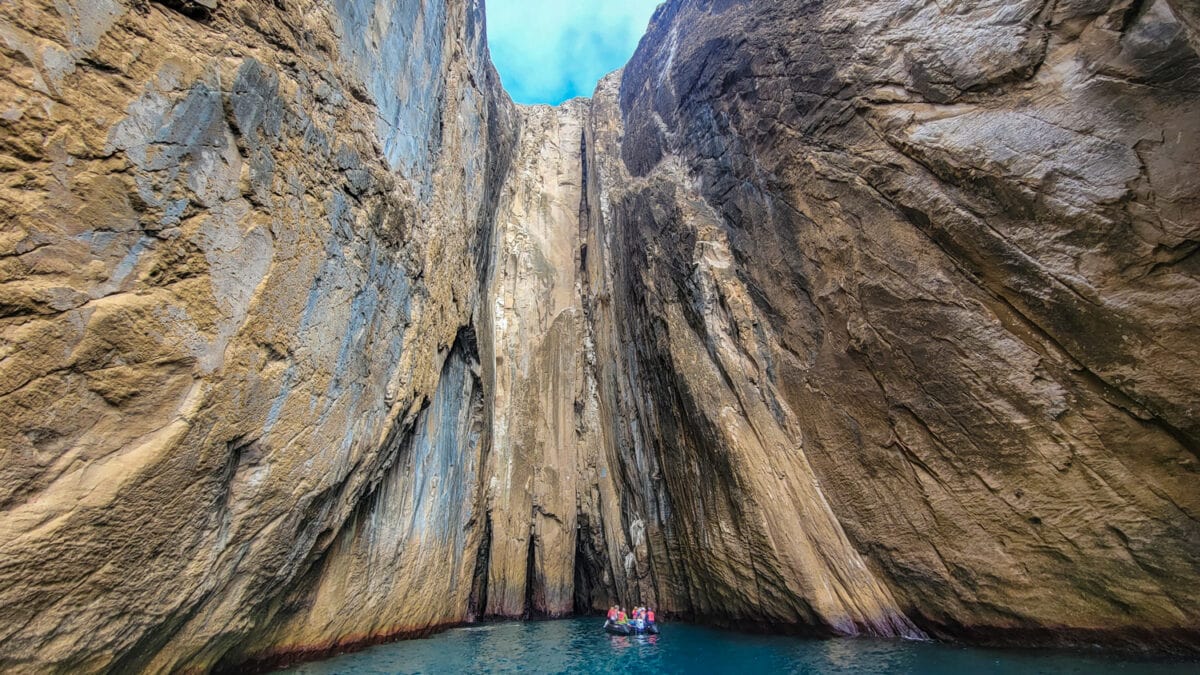
This afternoon it was all about the Galapagos landscape. We took a panga (raft) ride along the cliffs and ventured into little areas surrounded by high cliff walls. The Cueva del Brujo Cliffs on San Cristobol Island were absolutely stunning. The panga took us through stone arches and into narrow cliff openings where it felt as if the cliff walls were closing in on you!
However, any outing in the Galapagos also includes wildlife. We were able to see pelicans, crabs, and marine iguanas too. I loved to see the crabs scurry up the cliff walls when the big waves came in. Marine iguanas lounged on the rocks at the cliff base. I loved this day…it was the perfect mix of wildlife and landscape!
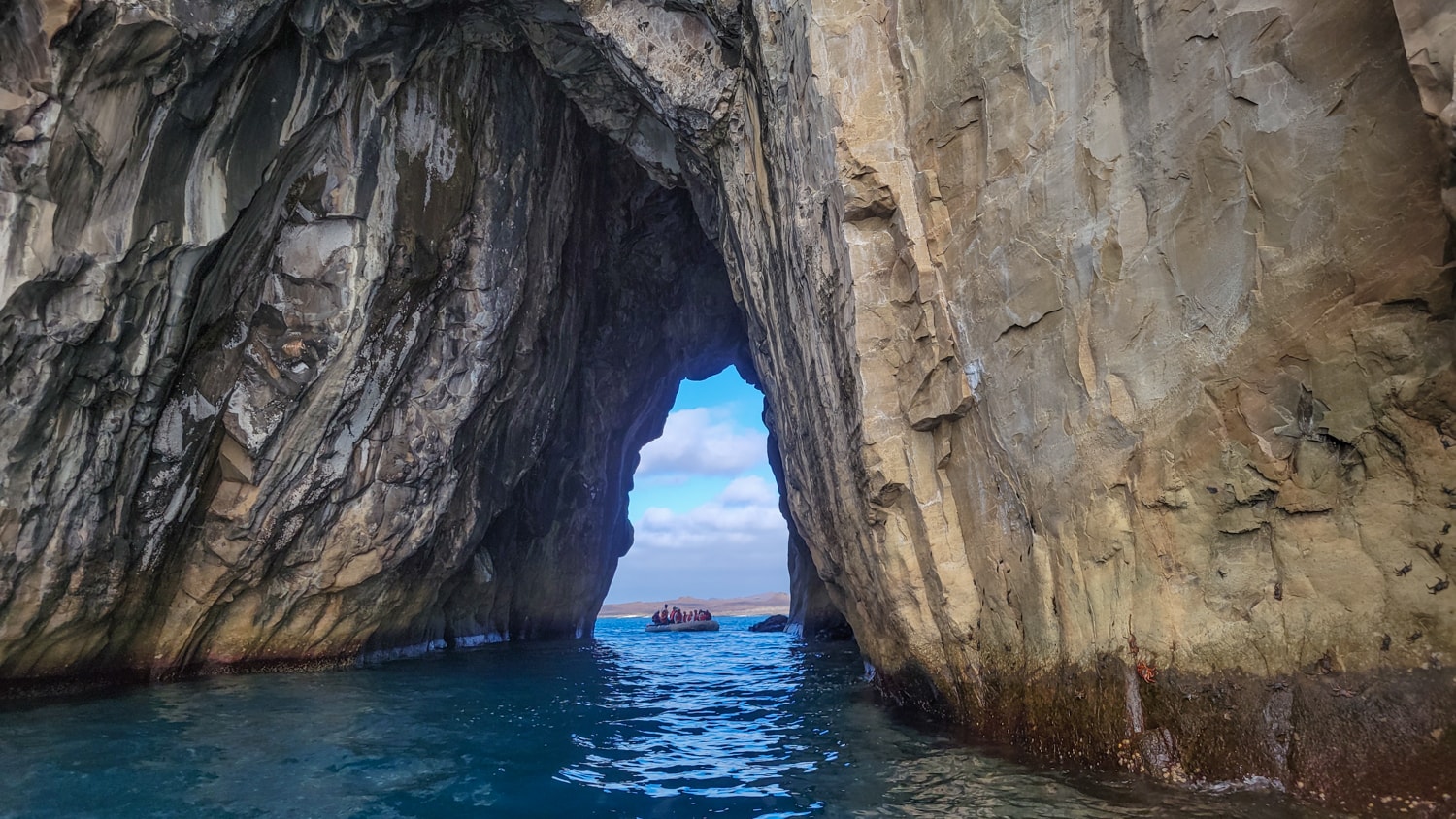
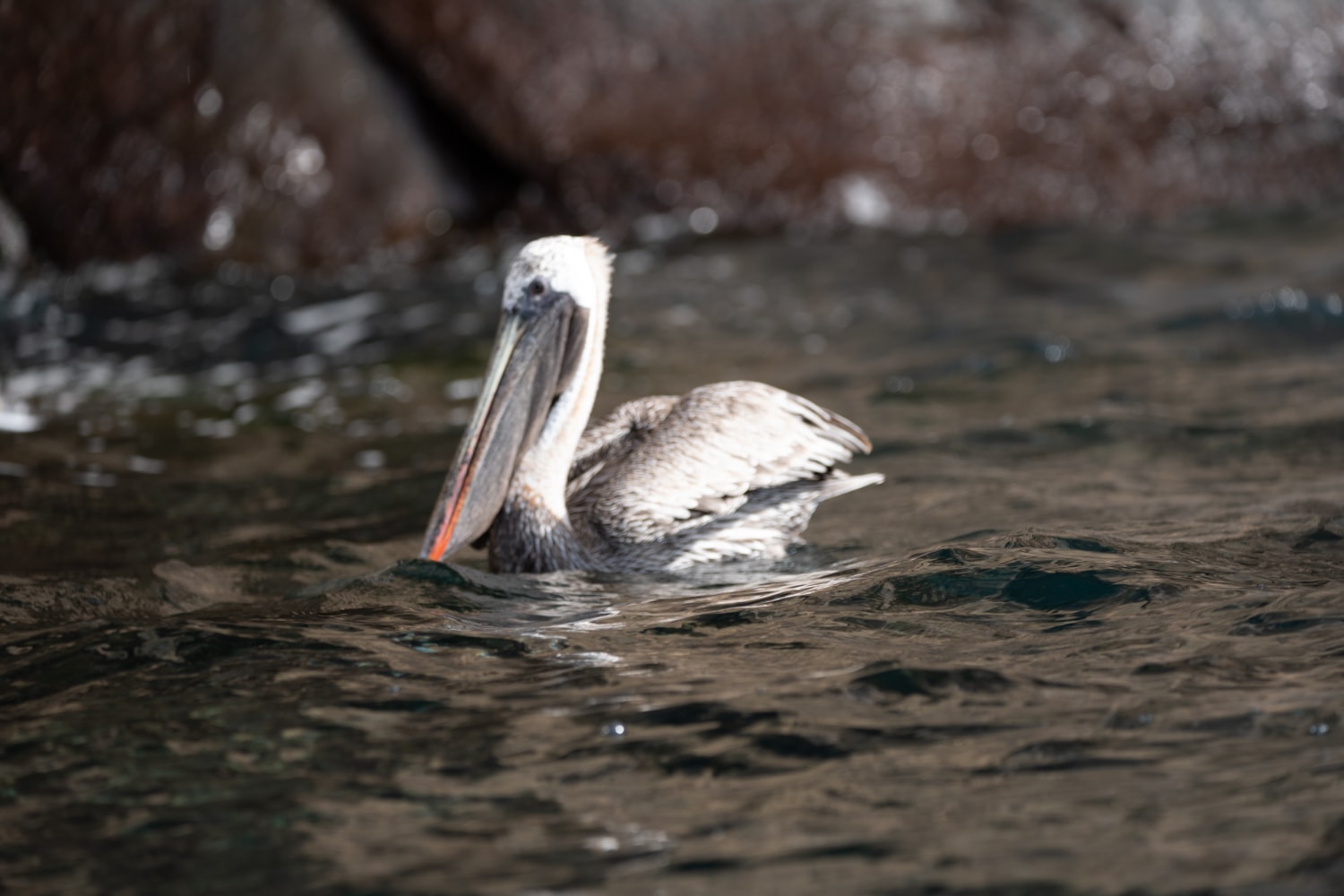
Cerro Brujo Beach
After an hour of boating around the stunning cliffs, we landed on playa Cerro Brujo – which ended up being my favorite beach we visited. The white sand beach was completely deserted except for groups of sea lions lounging on the sand. We had free time to walk along the beach and explore; however, I decided to honor Darwin and just sit and observe.
You can always walk on a beach – but you can’t always watch sea lions sleep. It’s really enjoyable to simply observe wildlife for a while. Darwin knew what he was doing!
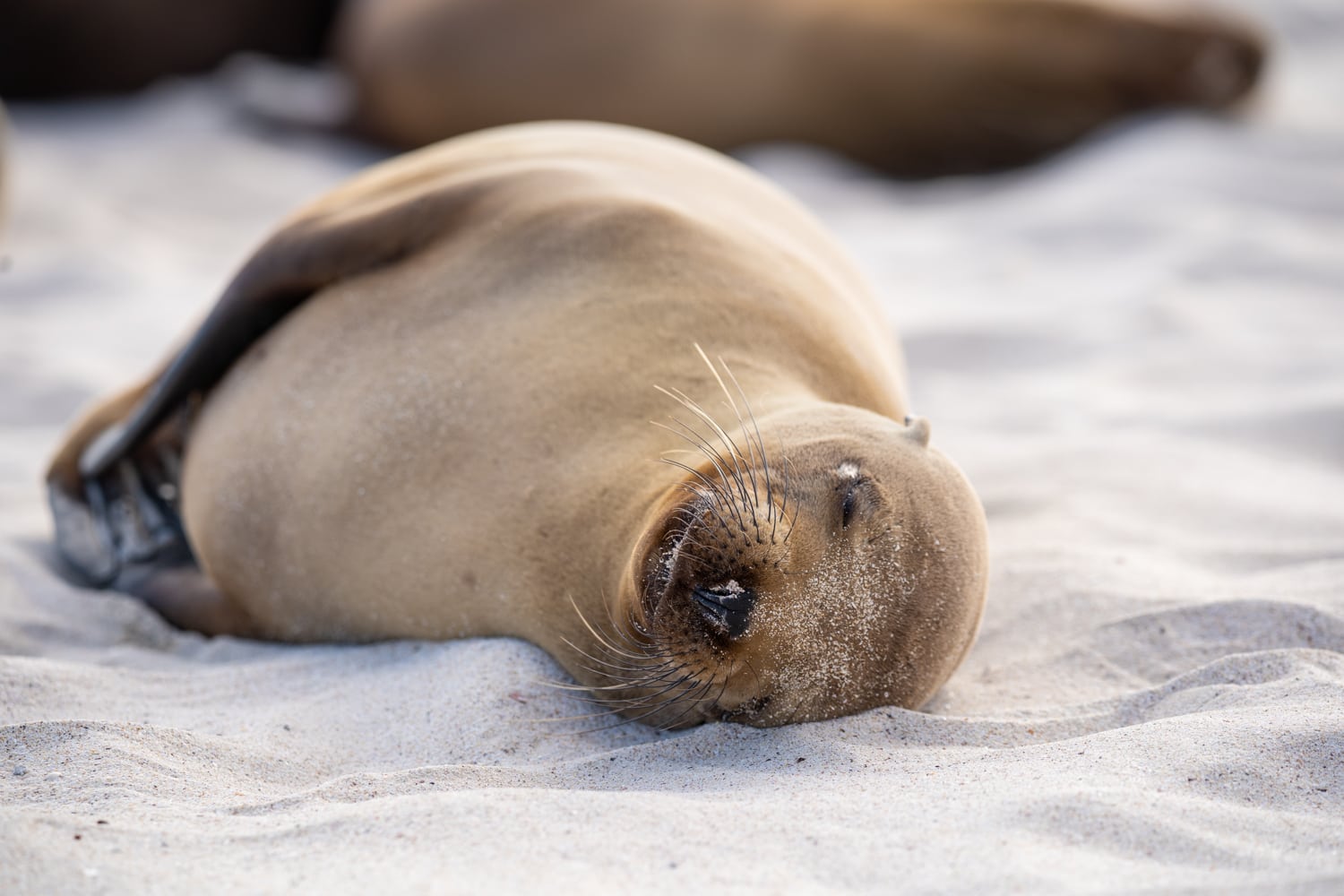
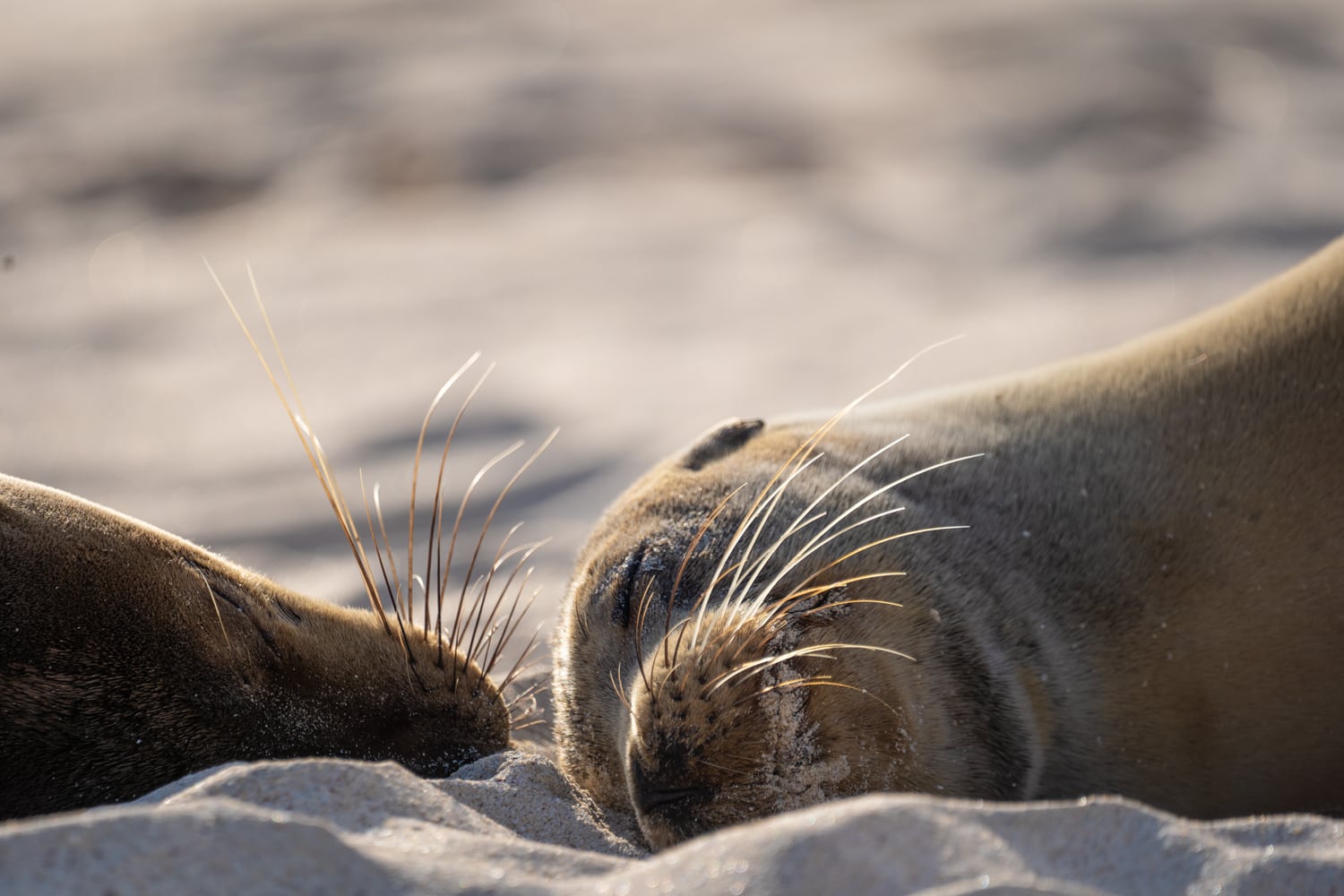
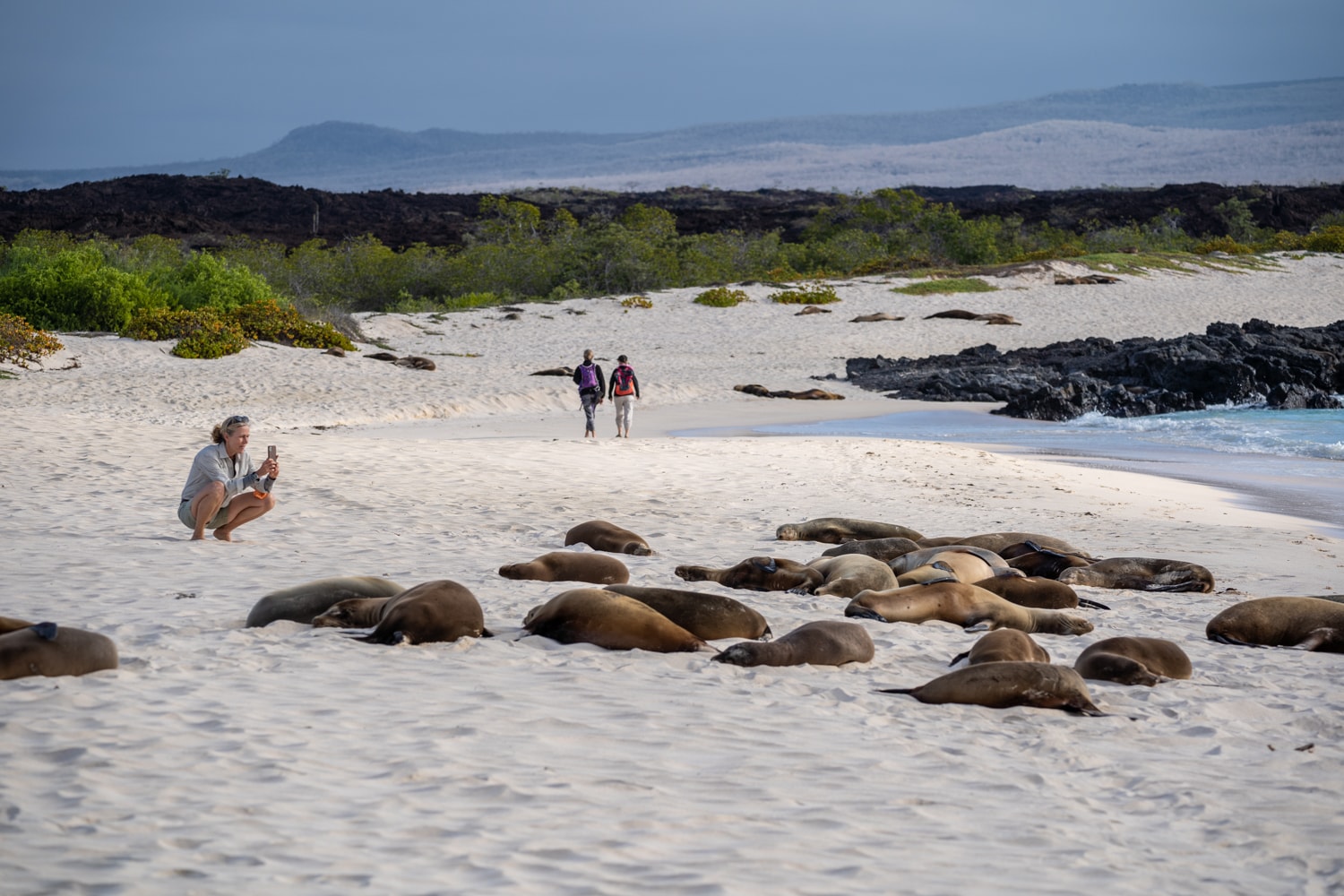
I sat on the beach with a group of sleepy sea lions in front of me and just enjoyed my time. I listened the wind and waves, watched the various sea lions wake up and move around, laughed at their silly fights, and simply slowed down and took it all in.
Kicker Rock
I didn’t think the day could get any better than Boobies in the morning, snorkeling, panga cliff ride, and chillin’ with sea lions on the beach…but it did! As the sun started to get low in the sky we cruised out towards Kicker Rock.
The erosion has given the rock its characteristic shape, which some see as a shoe, hence the name Kicker Rock. Apparently, it is a snorkeling hot spot in the Galapagos – but we just cruised around it at an optimal time as we already had a full day of snorkeling and exploring.
Our captain put us in perfect alignment with the unusual rock formation just as the sun got lower and lower making for some stunning photography opportunities.
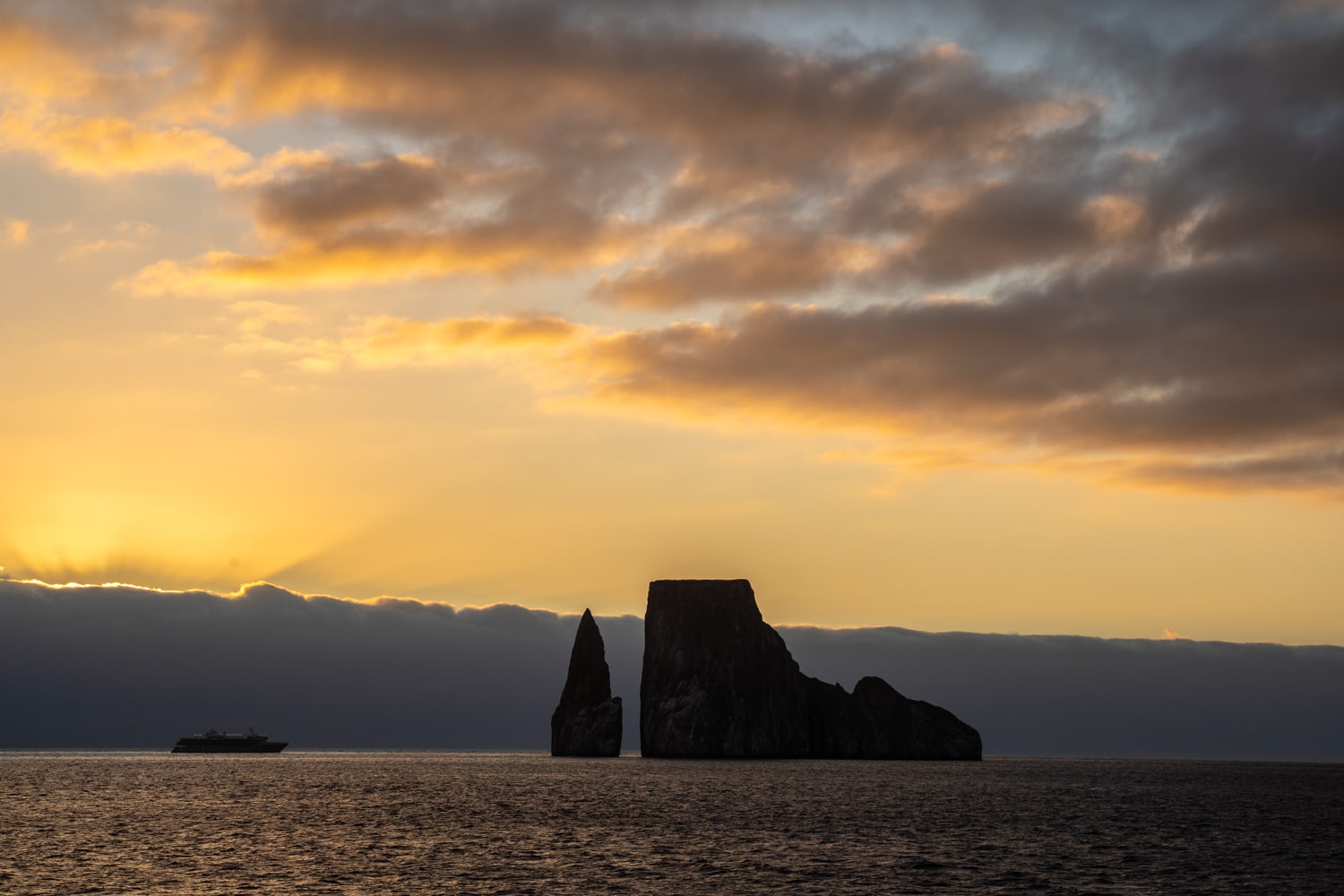
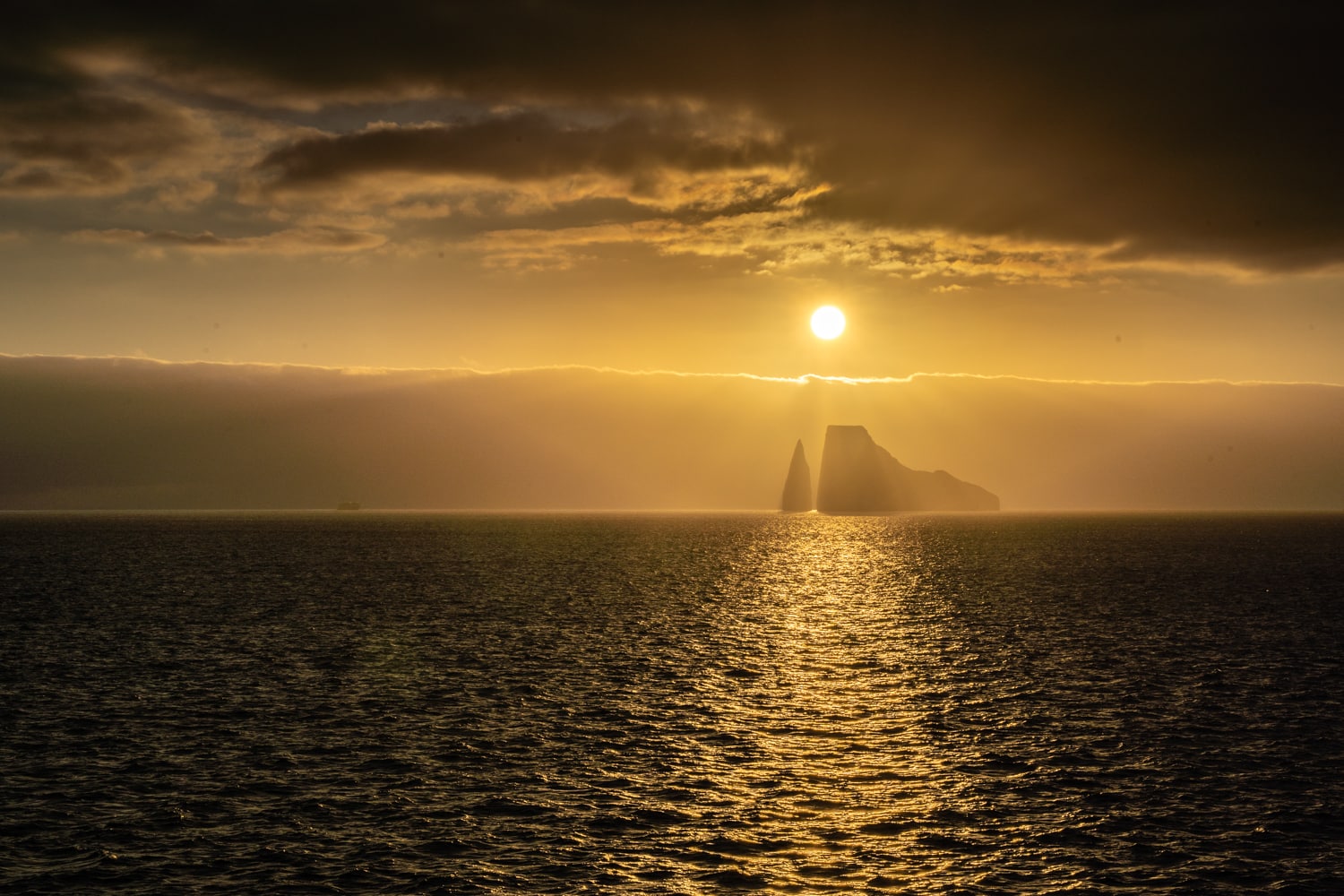
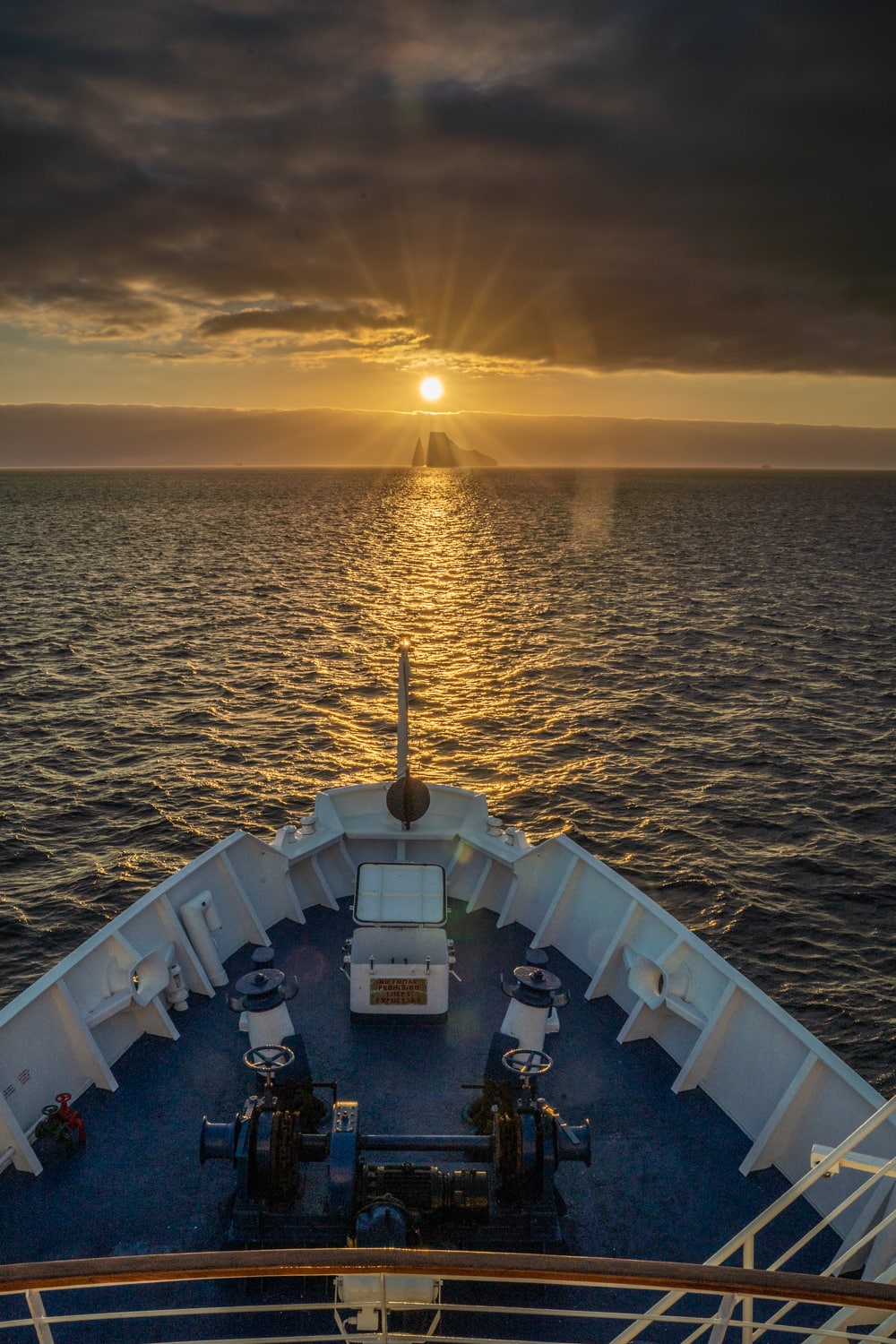
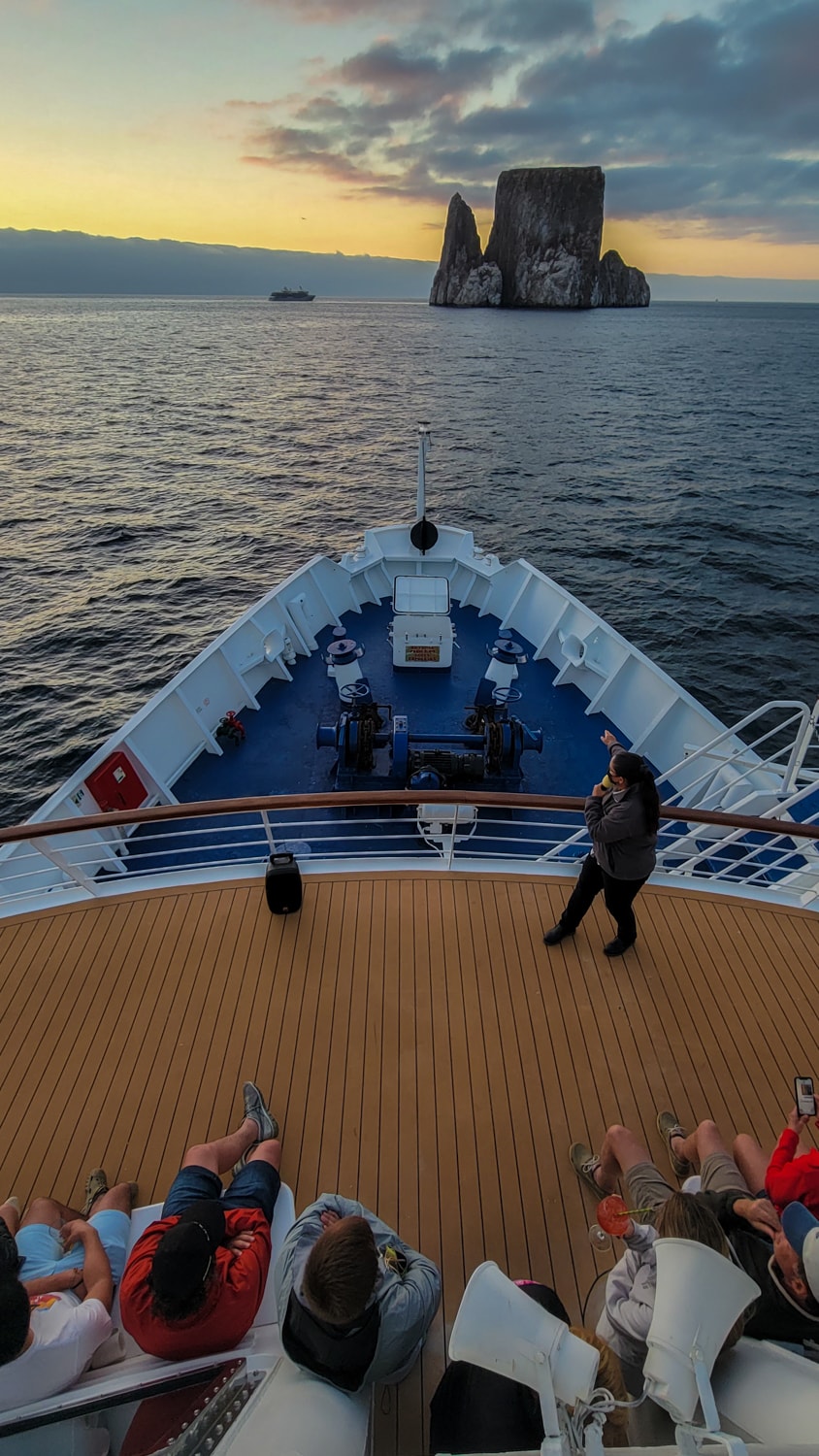
Espanola Island: The Best Place to See Birds on the Galapagos Islands
We landed at Punta Suarez this morning to take a walk to see the Albatross and bird cliffs.
Wave Albatross Mating Dance
Wave Albatross (found in the Galapagos) mate for life – a commitment that always begins with this hilarious courtship display – a dance of love. The dance includes a precise sequence of moves: rapidly circling and bowing, clacking beaks, mouth gaping (my favorite), stop/starting at exactly the same time, and finally raising their beaks skyward whilst letting out a “whoo-ooo” call as a ‘climax’. Once mated, a pair will lay just one egg per year, which they will guard vigilantly for two months.
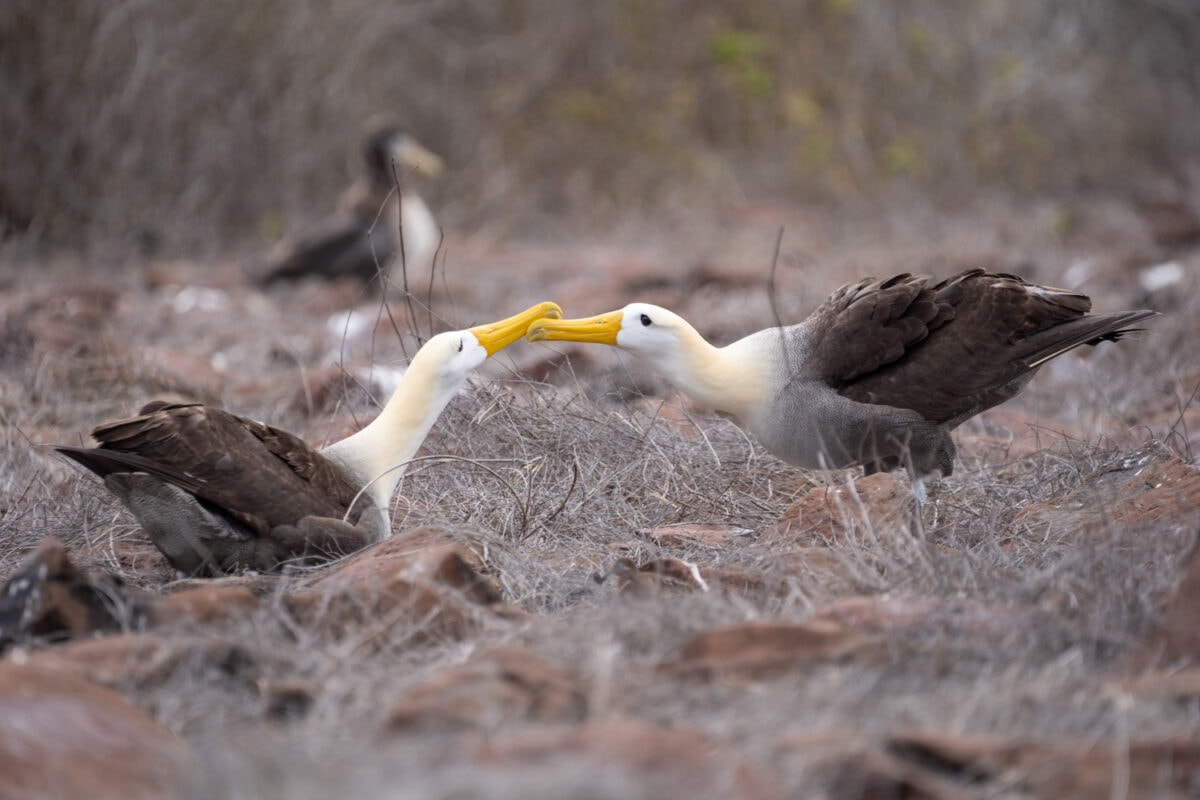
I knew none of this as I got to the clearing and saw the hefty birds; which in a way made it even more of a special experience. I normally don’t research things too heavily before I go on a trip so that I can have that feeling of awe and excitement that travel often brings. This was definitely one of those days. Watching these birds dance was such a treat mainly because I knew nothing about it prior to arriving!
Punta Suarez Bird Cliffs
We continued hiking out to the cliffs where we got the ‘big picture’ of the Galapagos. Waves crashed up against the rocks and birds hovered overhead in the strong winds. At first look it seemed like any other cliffs I might see on Lanai Island Hawaii (LINK). However, if you focused in on a spot, that’s when you could actually see all of the sea lions, iguanas, crabs, and other birds on the rocks and cliffs. The landscape was full of life!
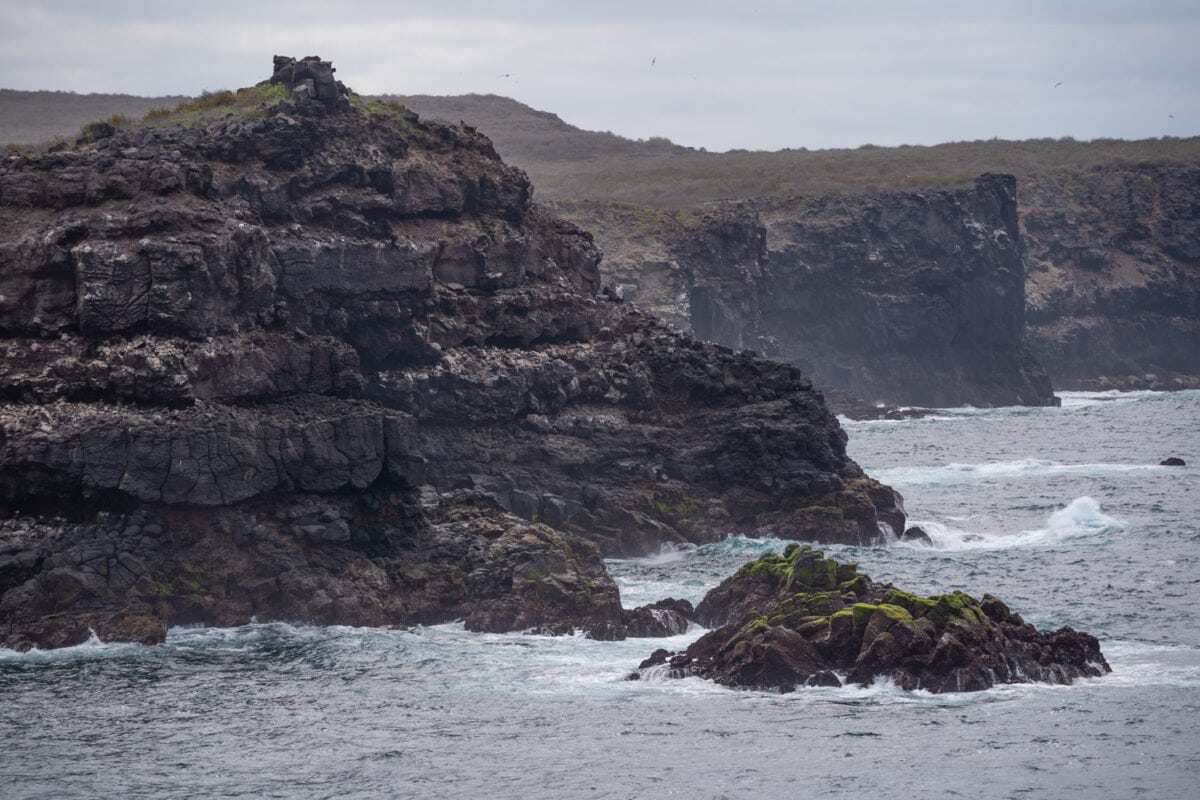
This was our chance to see the wildlife in really rough conditions – the waves crashed up on the cliffs and you could see the various animals in the sea trying to come ashore – it was fascinating! I’ve seen iguanas before – but I never saw one that could swim. I watched as the large lizard swam through the angry sea and ‘land’ up on a rock along the cliff. These marine iguanas have adapted to swimming – something completely unique to the Galapagos.
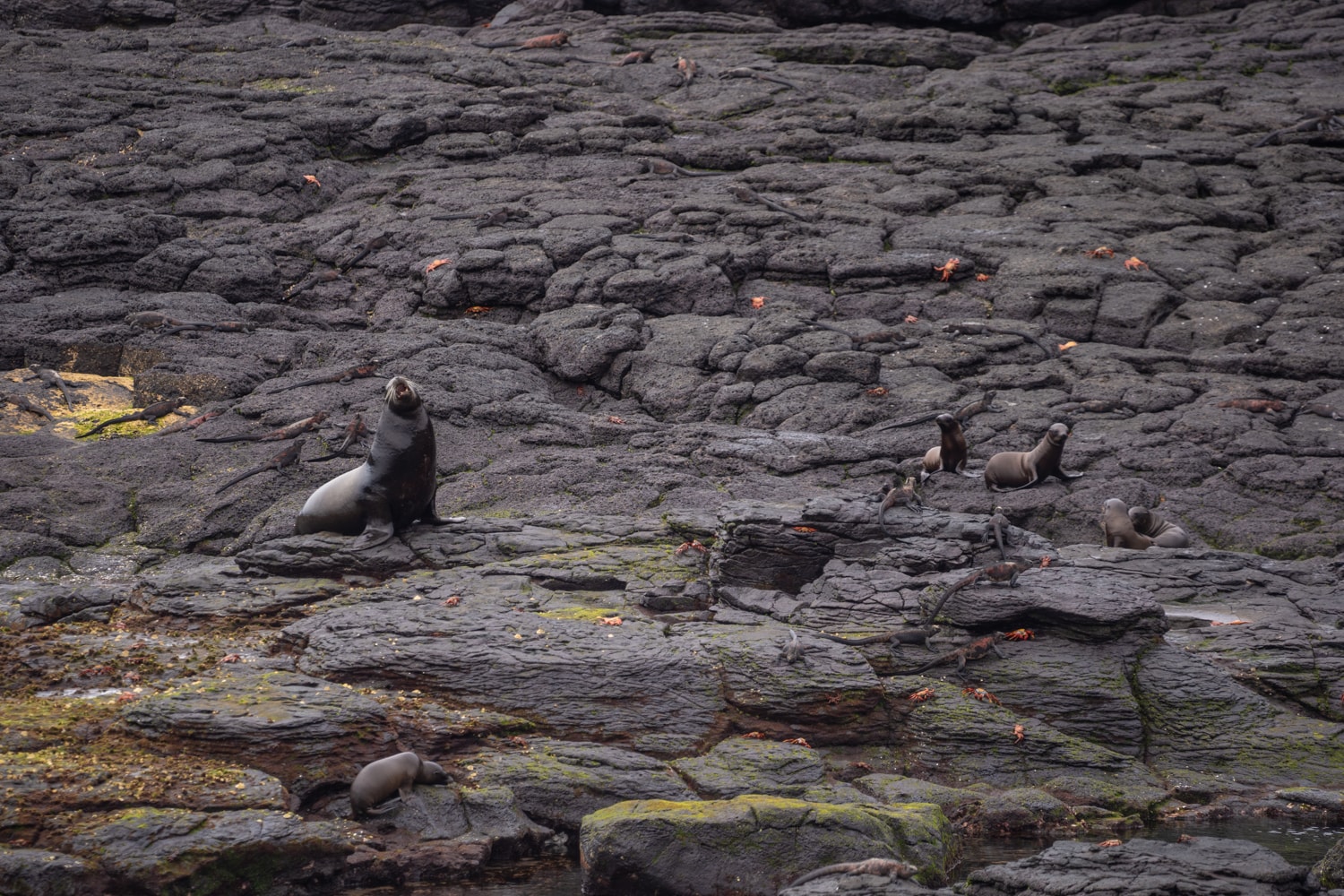
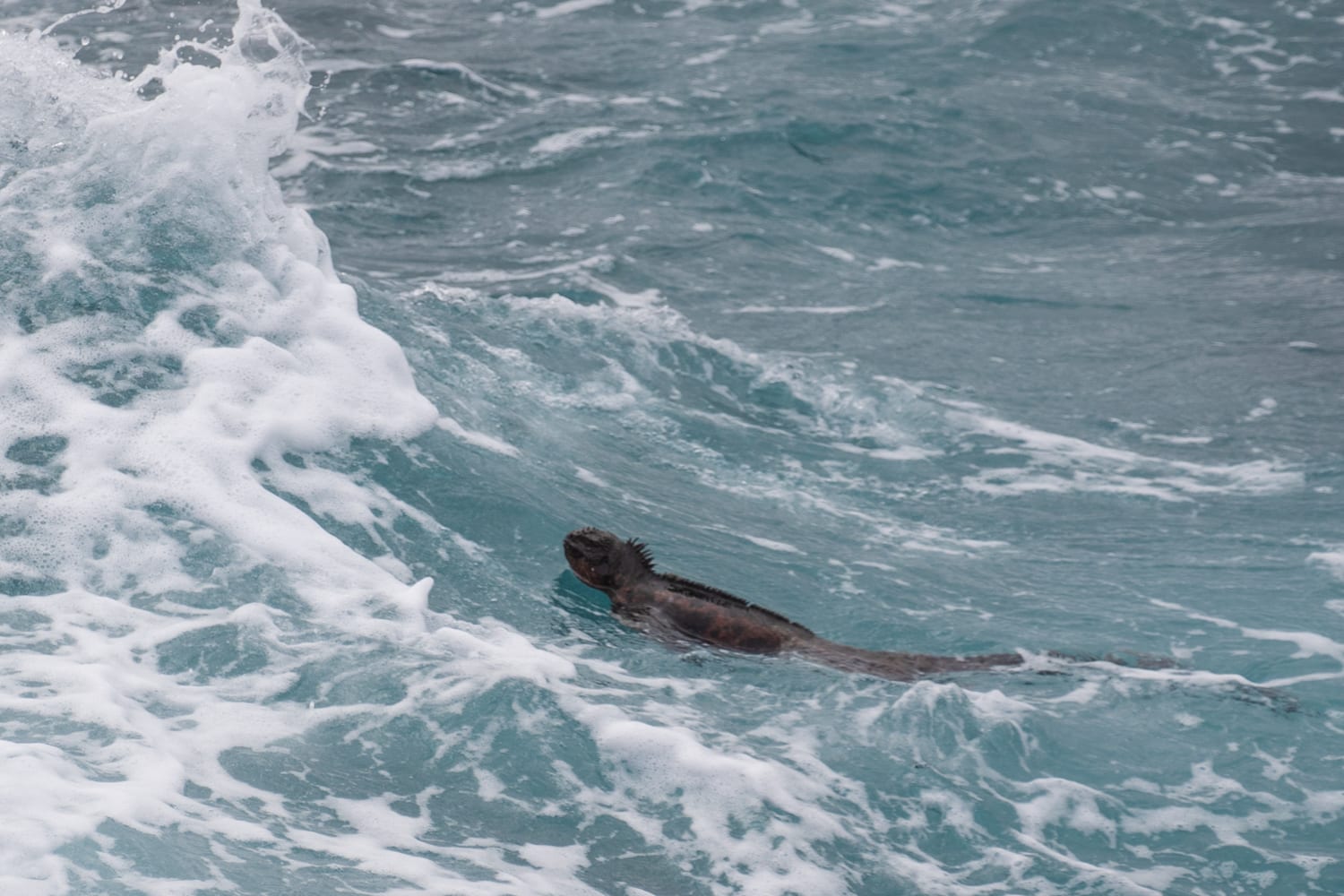
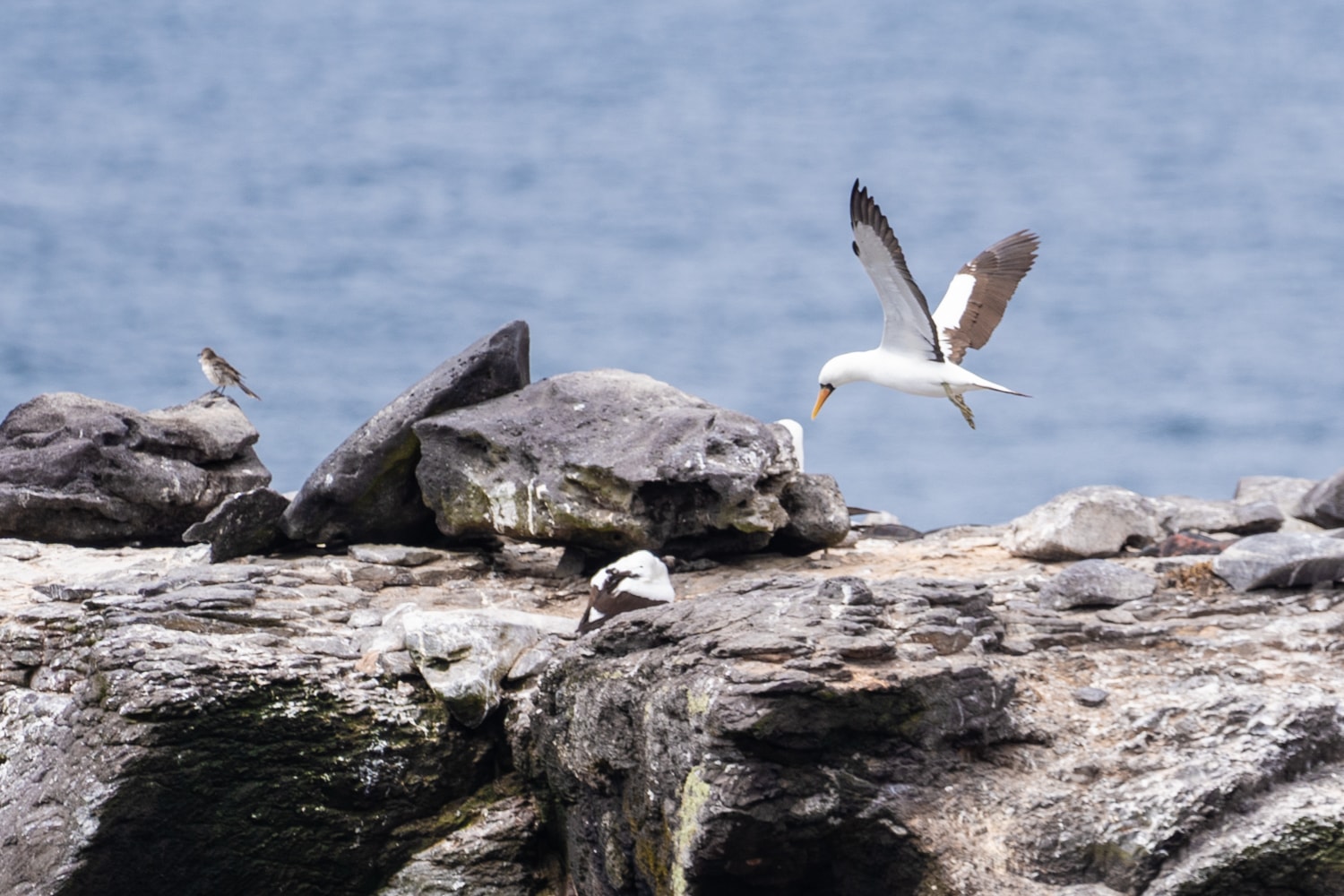
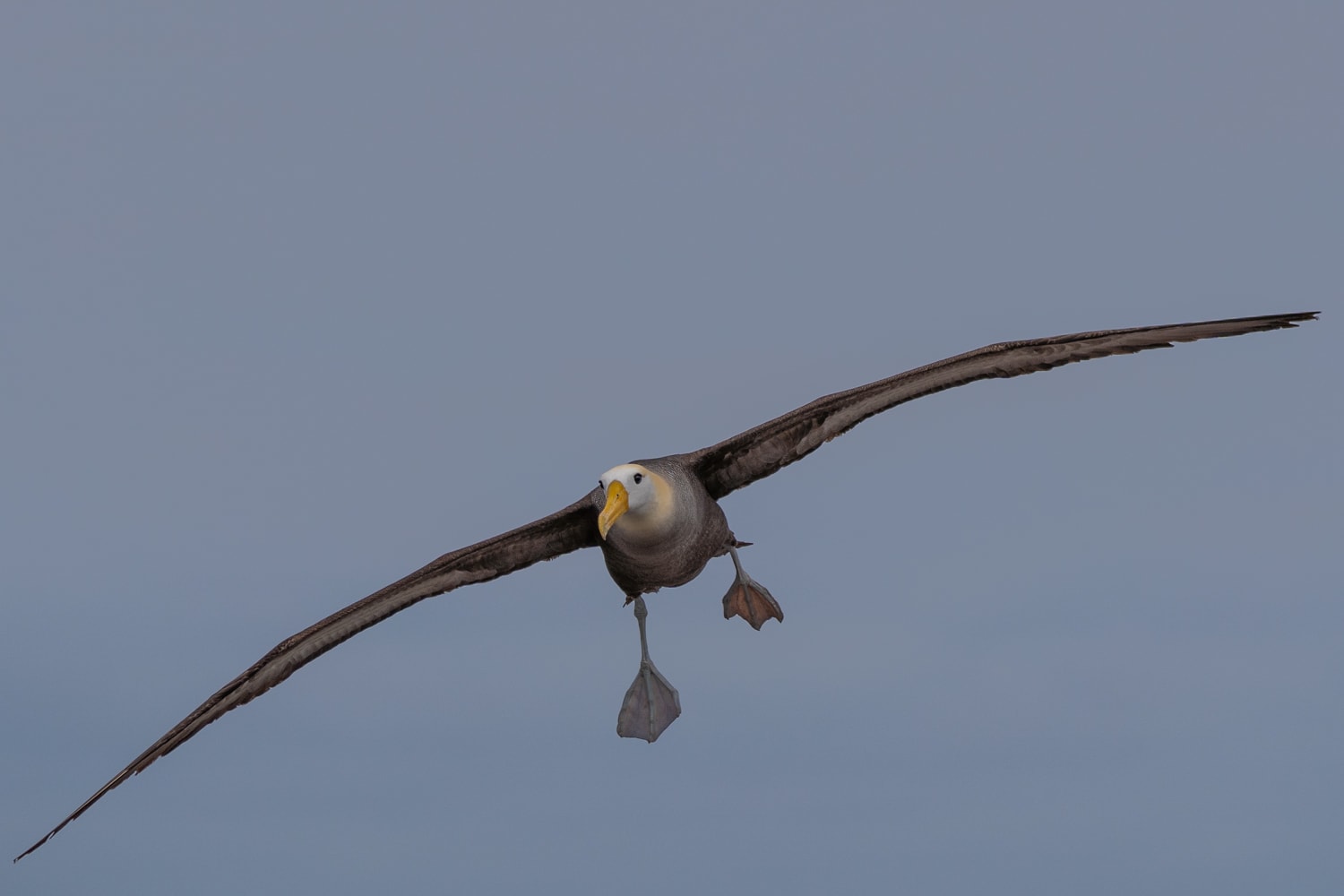
We saw all of the species of Boobies again, plus a Galapagos Hawk. But my favorite birds to watch were the Wave Albatross practicing their cliff landings in heavy winds. They would circle and circle until they got the ‘right’ condition. They’d put down their landing gear (their feet) and slowing come in for landing – often aborting at the last minute.
Galapagos Wildlife Photography Tips
One of the most stunning things about visiting the Galapagos in Ecuador is that you can get so close to the animals on the islands. They aren’t at all intimidated by humans. I literally would have to walk around sea lions and marine iguanas on the trail. I was consistently amazed by how calm all of the birds we encountered were. This is what makes the Galapagos Islands such a special place to do wildlife photography.
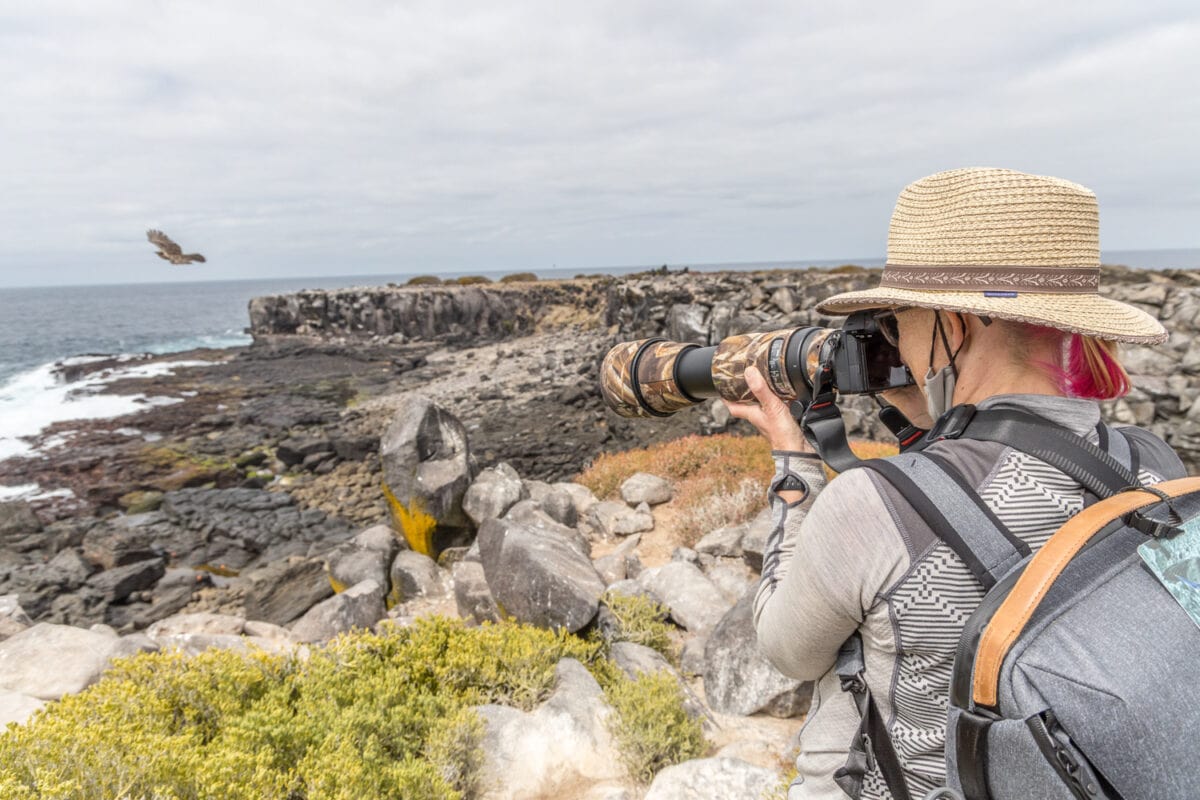
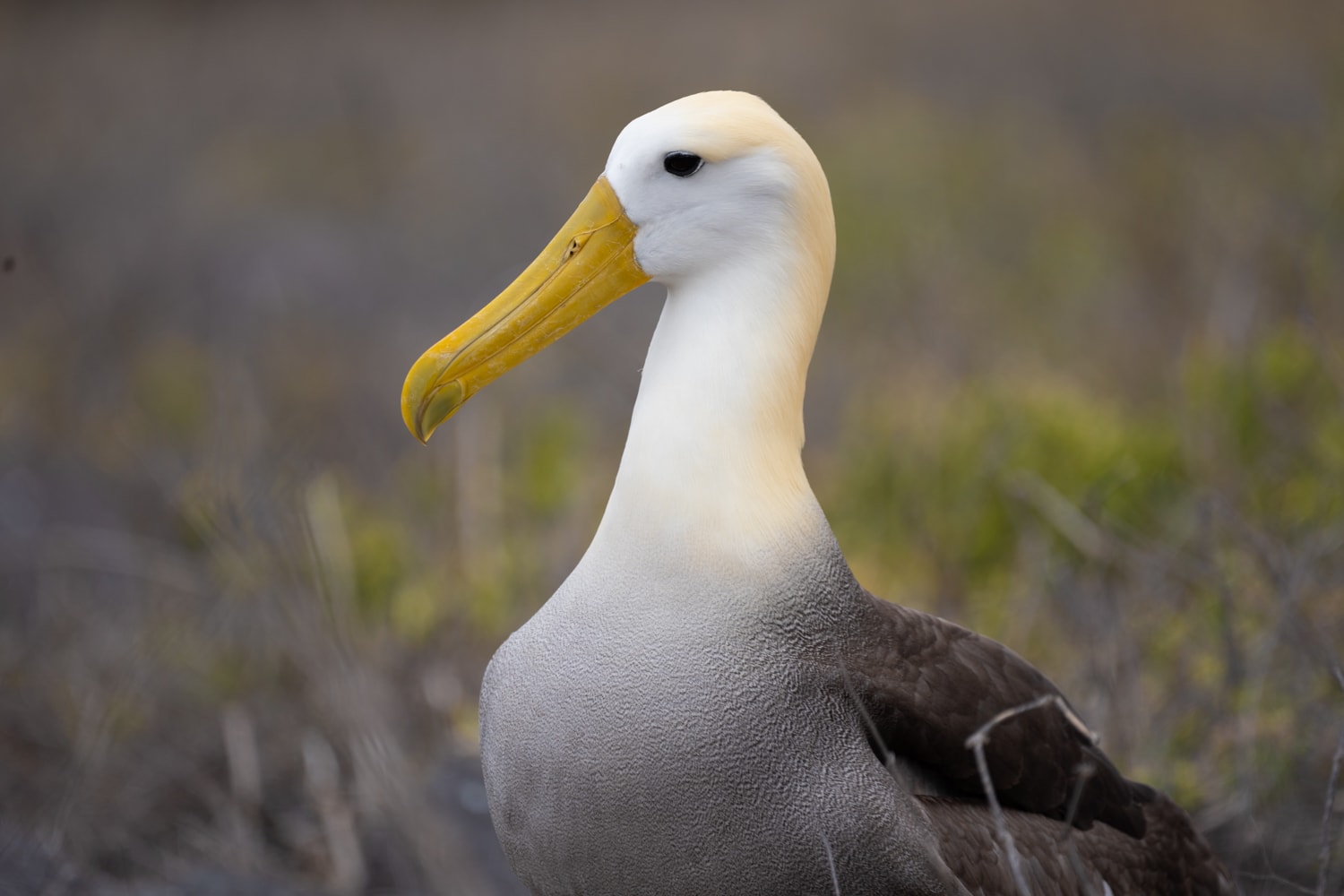
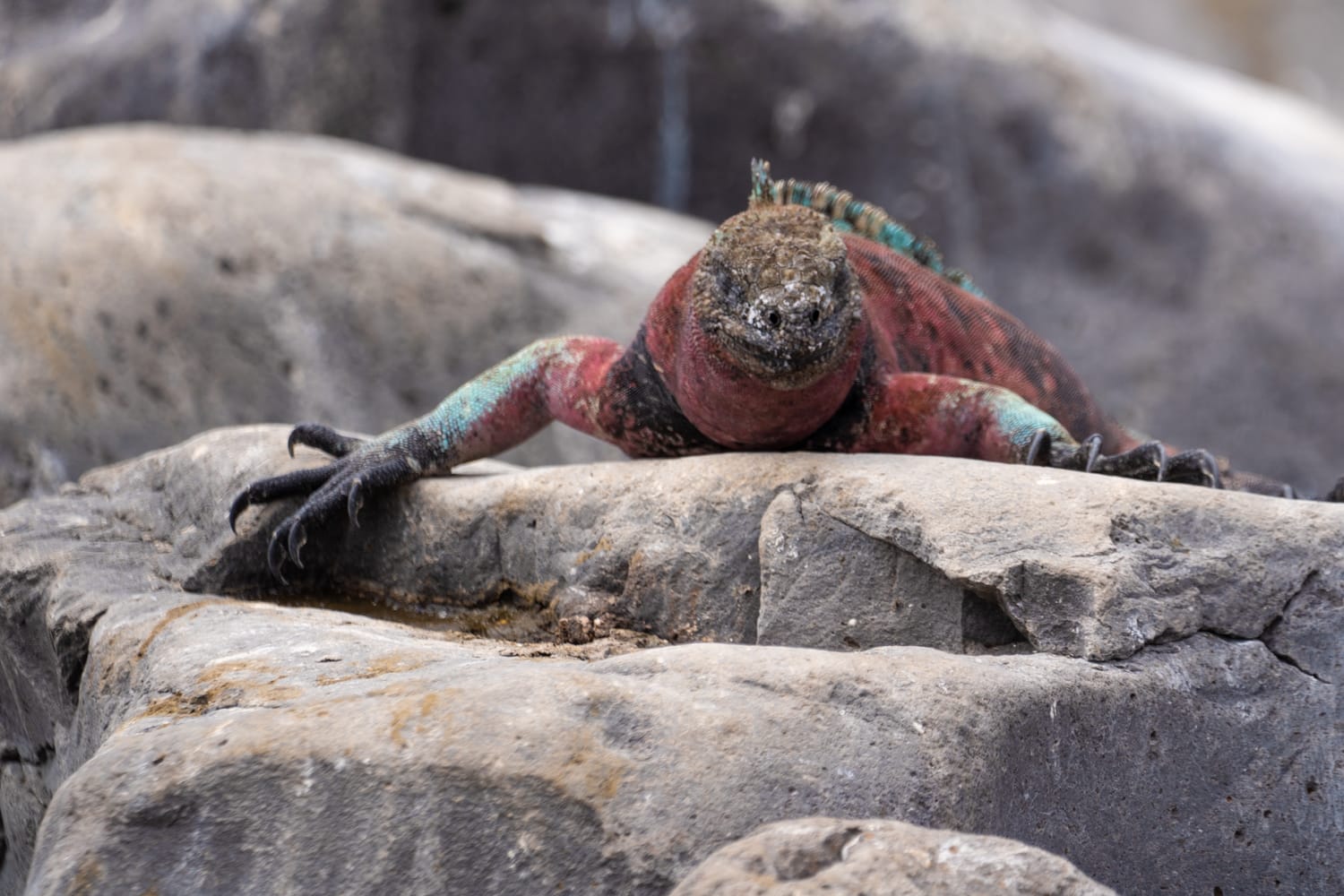
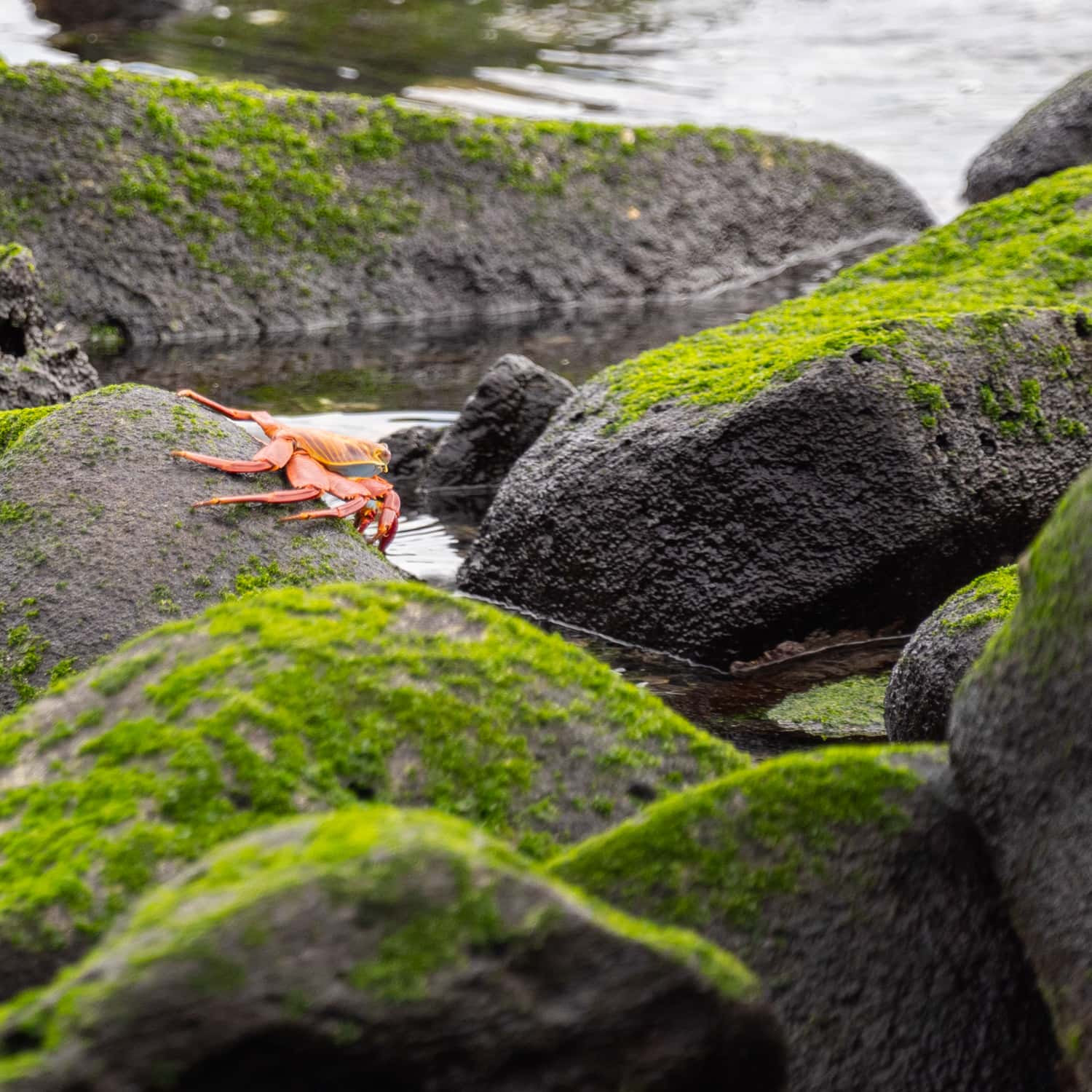
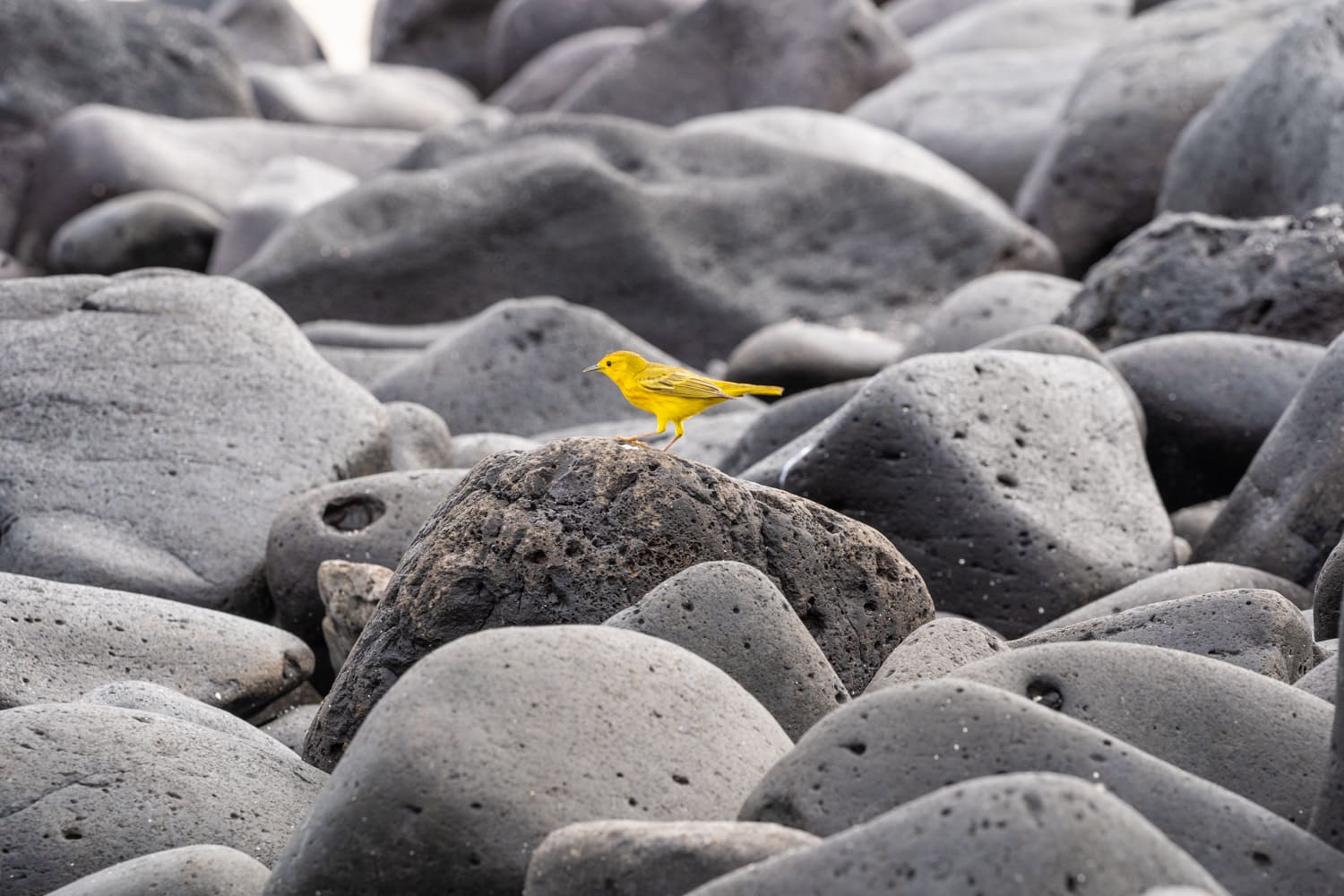
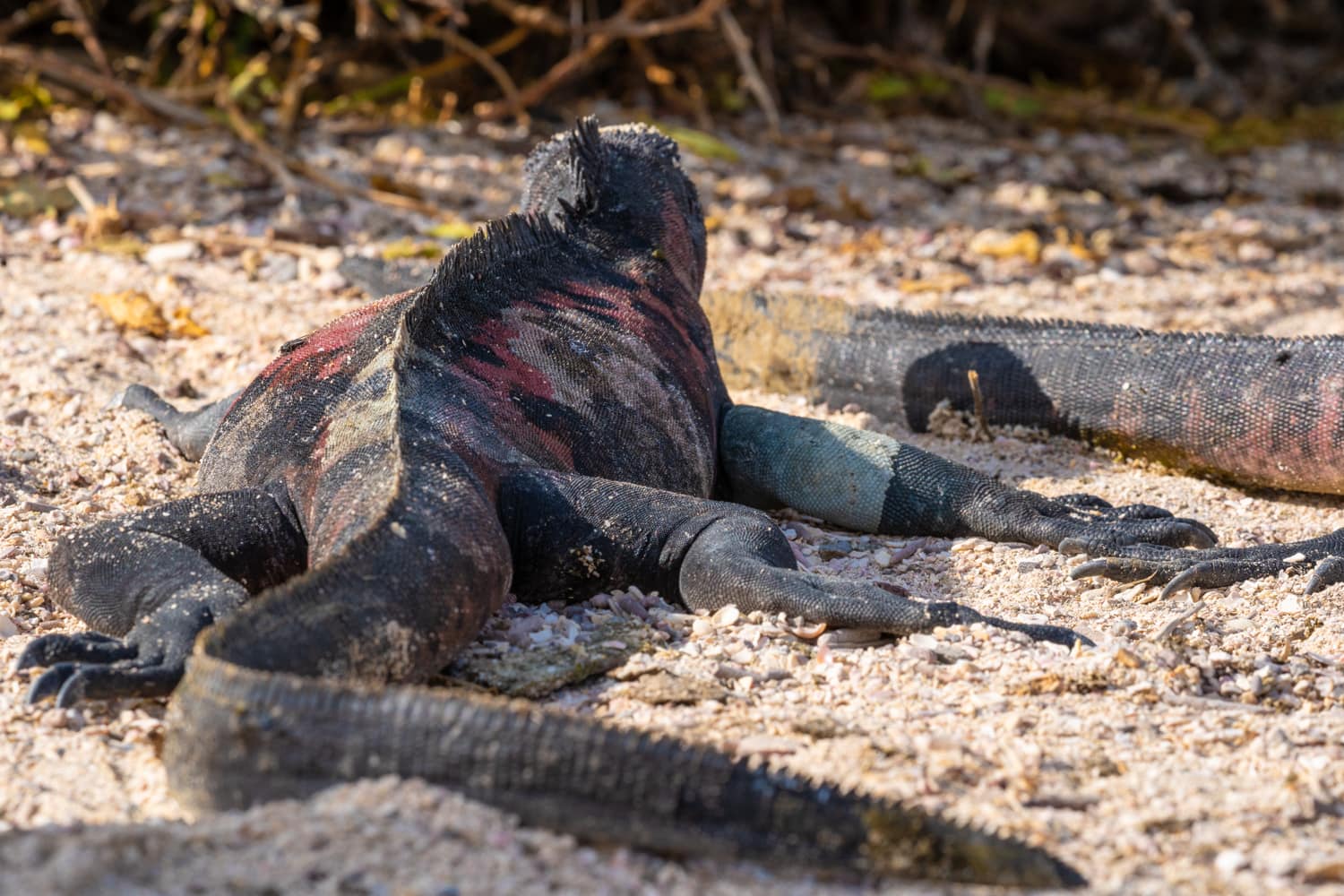
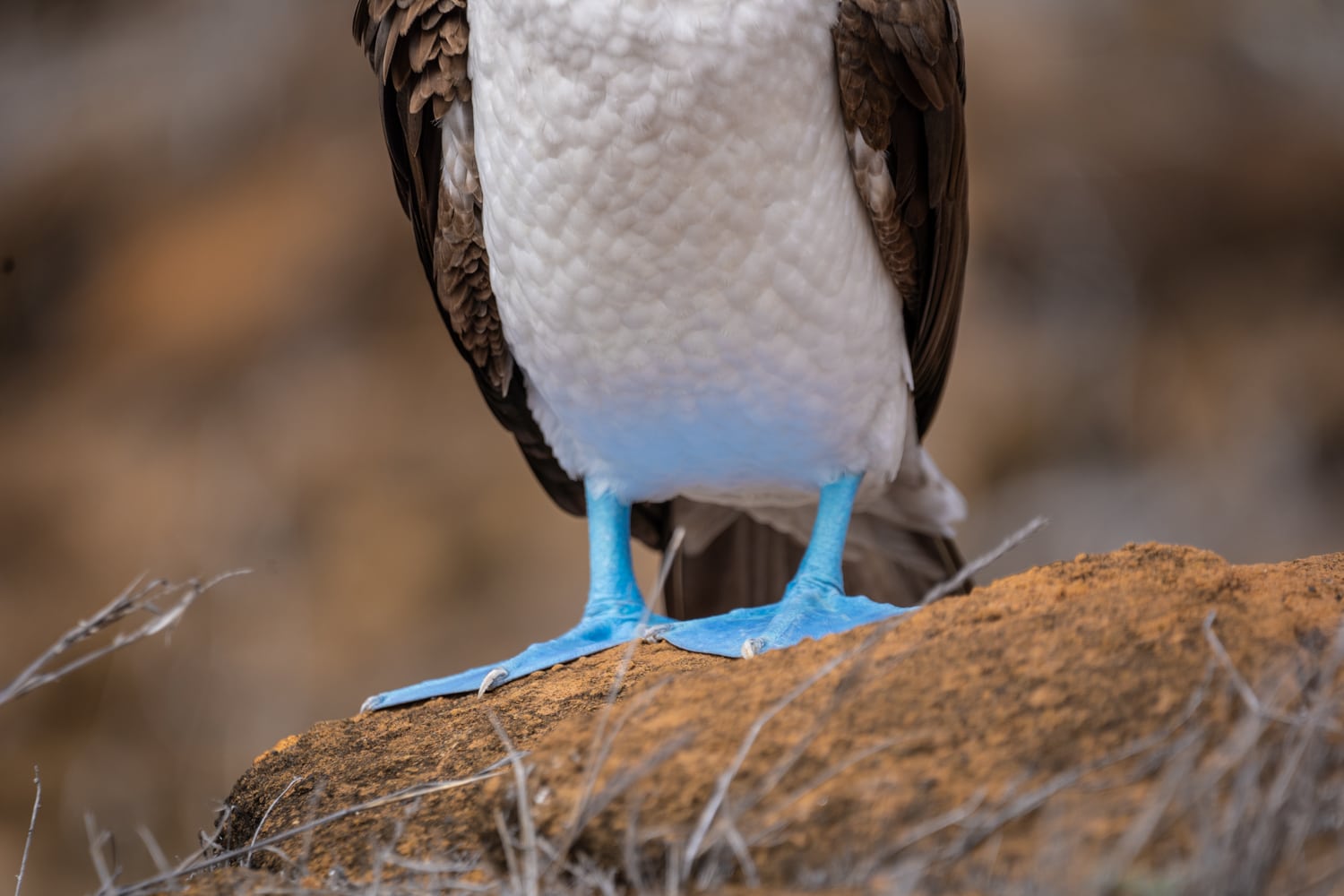
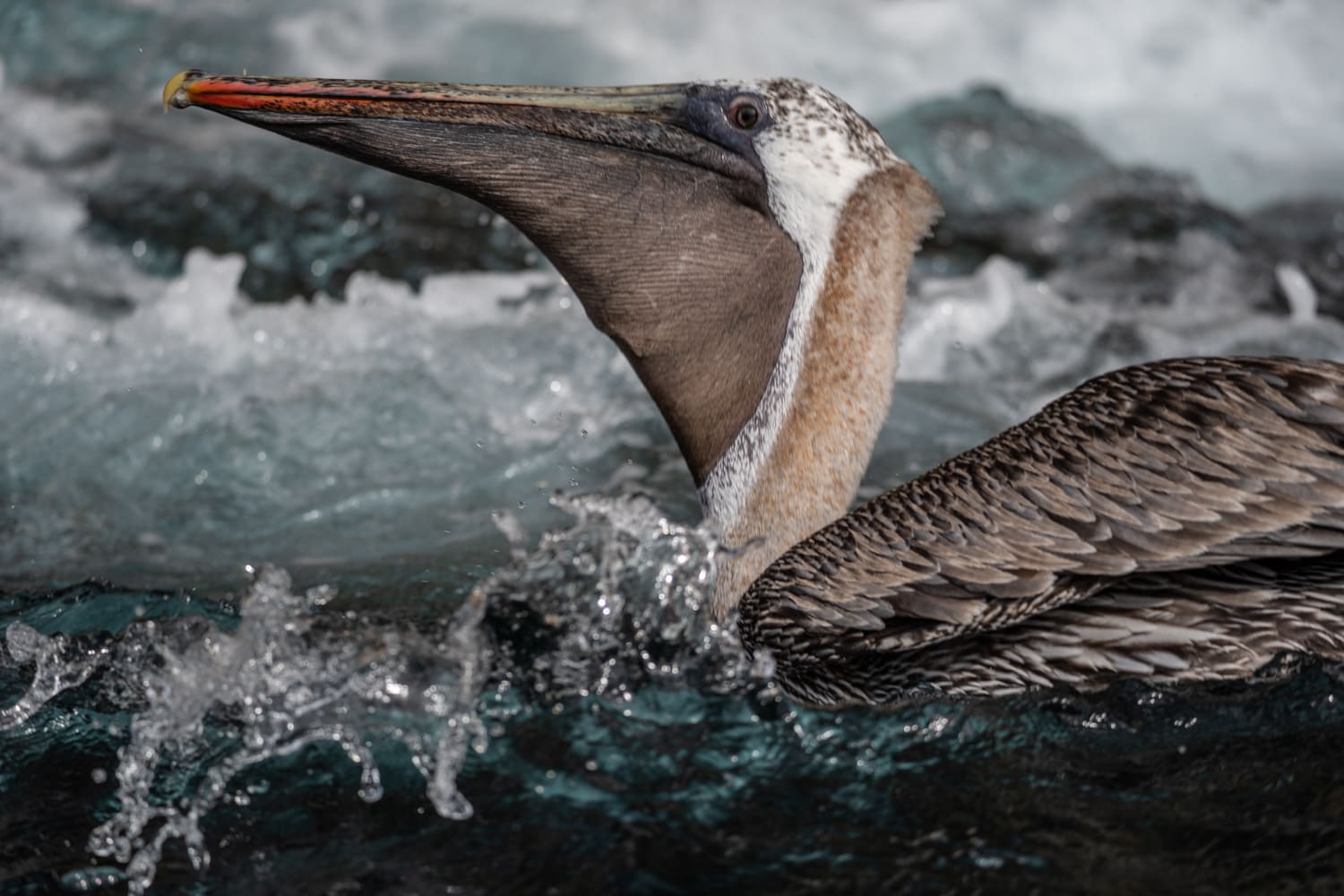
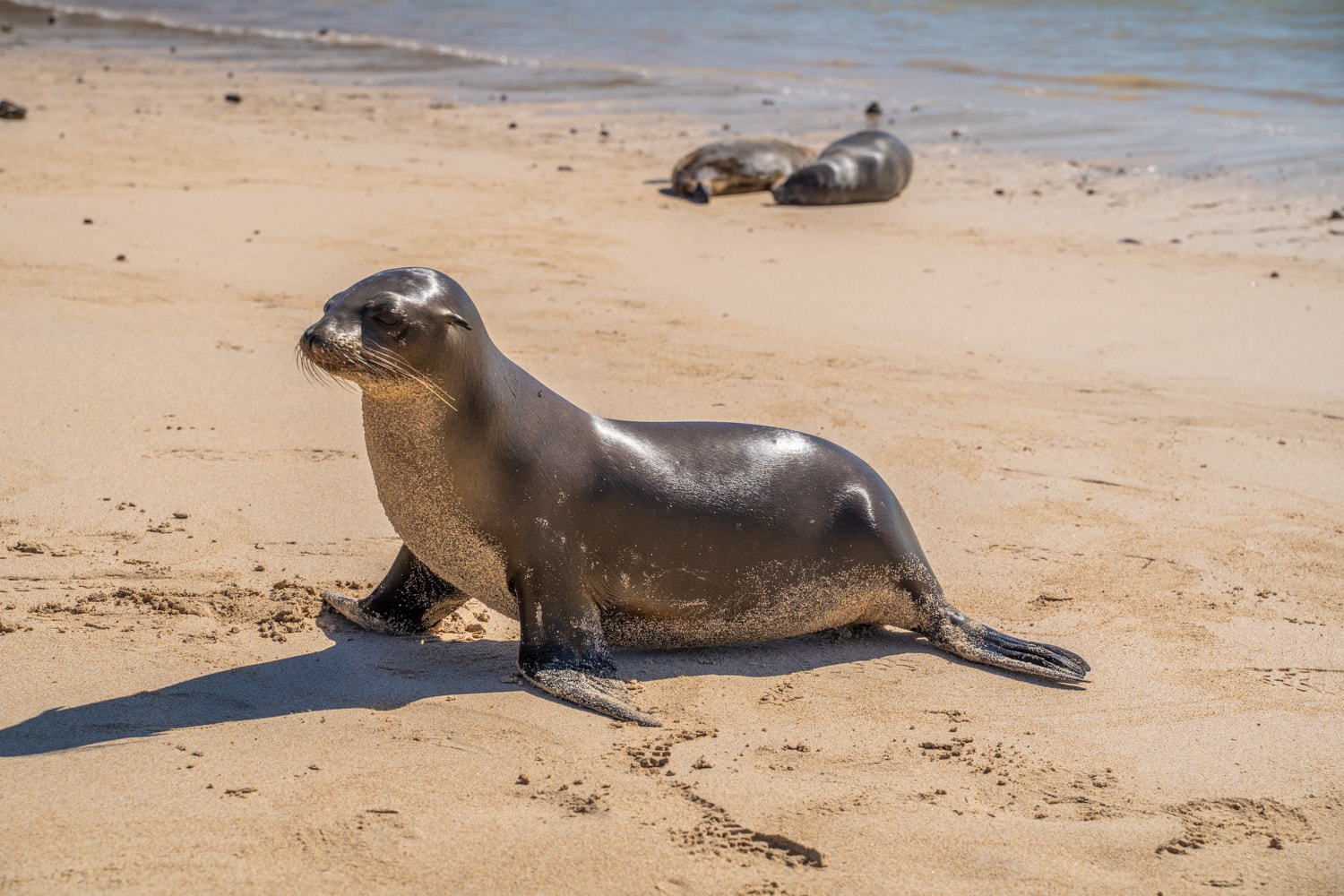
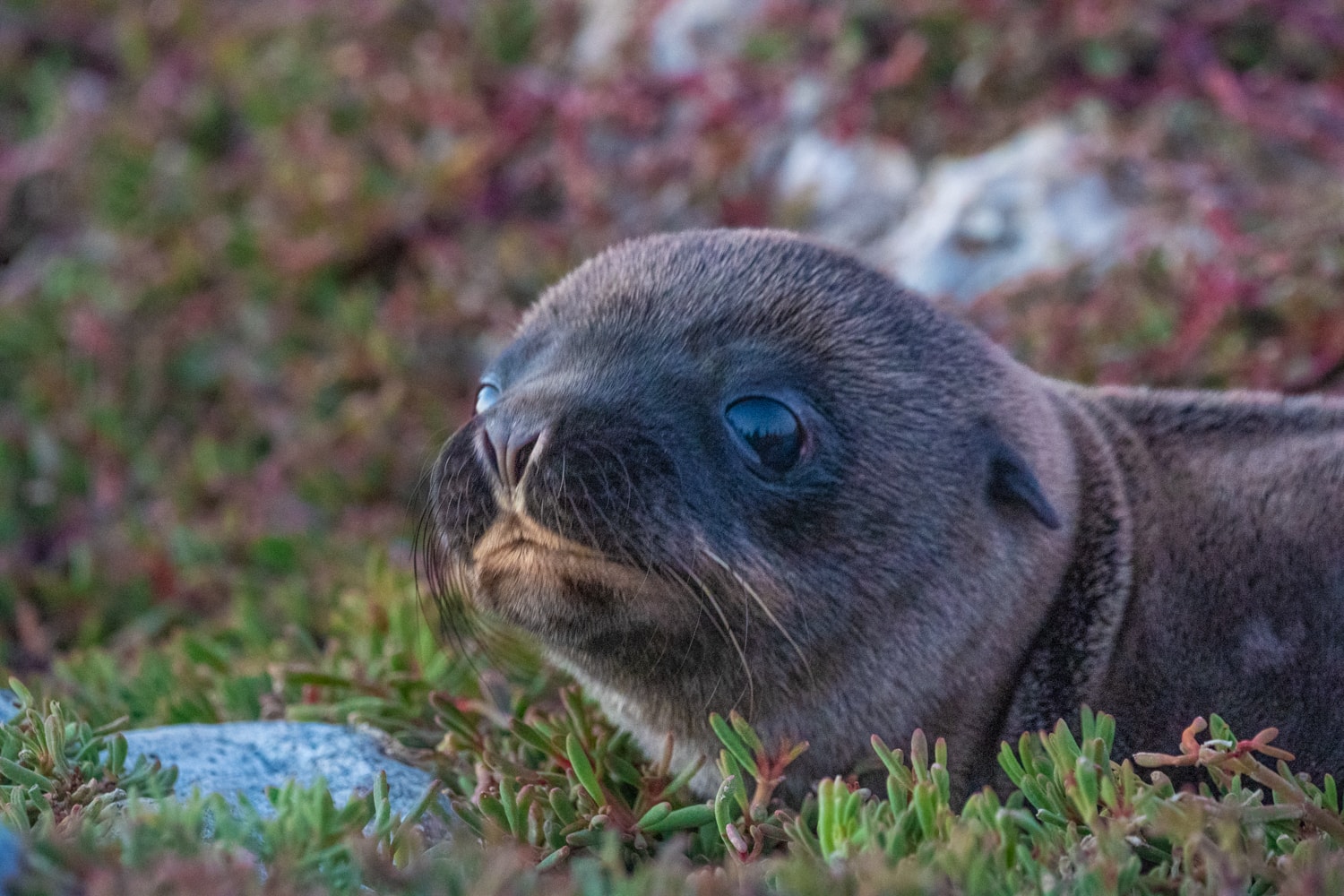
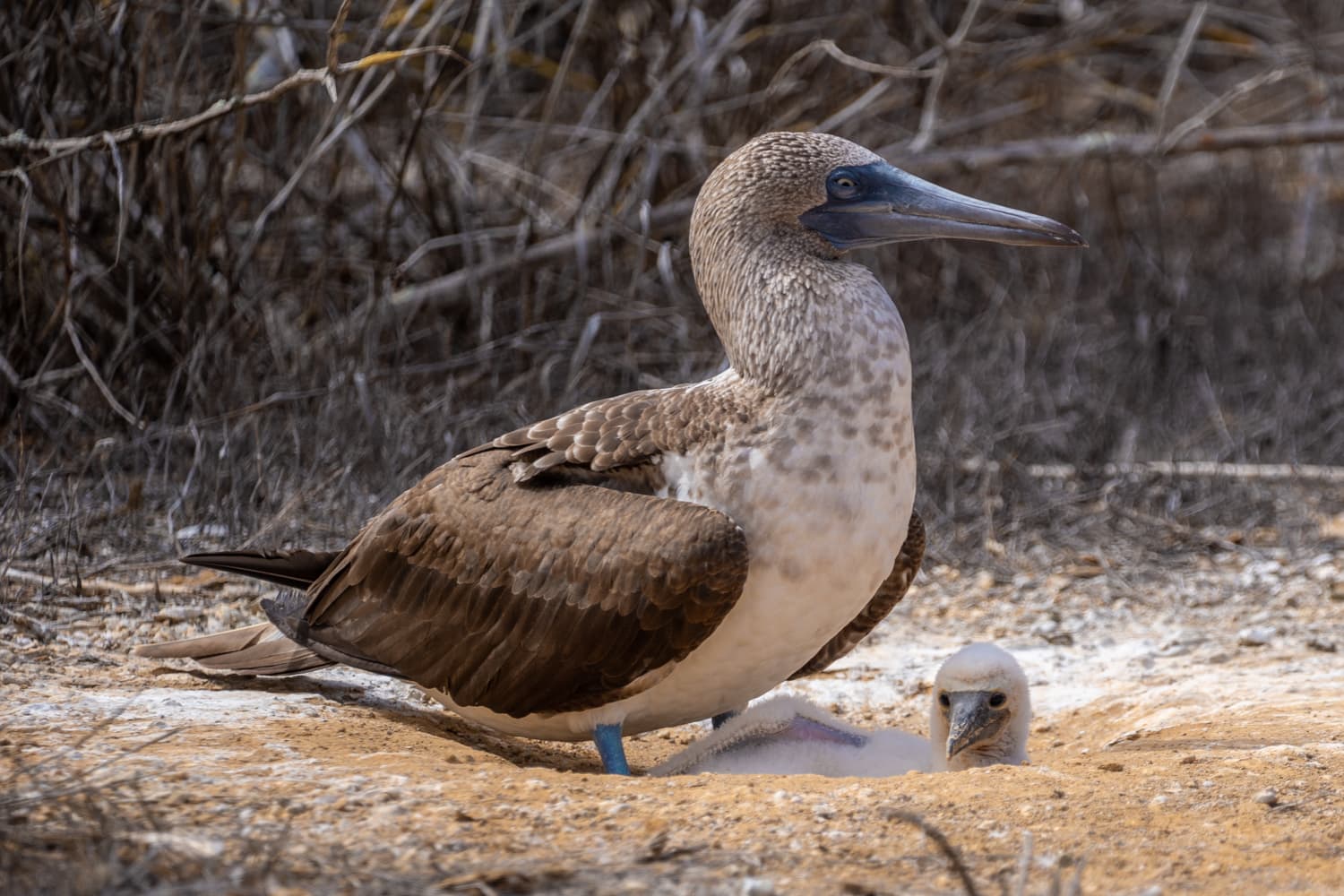
What Photography Gear to Bring to the Galapagos
Telephoto Lens
First and foremost, you will want a long lens. I took my Sigma 150 to 600mm – it’s hefty but I was happy I had it with me. It allowed me to get great closeups of the animals. And this is a pretty affordable telephoto so if you’ve been thinking of investing in one, but not sure about the price tag – this one is doable. And the quality is great as you can see from my Galapagos pictures.
Rent a Lens
If the price tag for a Telephoto lens is just too high for you, don’t worry – you can always rent a telephoto lens! I often use Borrow Lenses when I travel and need a specific lens for a specific trip – but I don’t want to invest in the lens permanently. Borrow Lenses has a really easy process for finding the lens you need and reserving it for your trip. They mail you the lens with all of the paperwork to mail it back. It’s a really simple process and a simple solution to expand your photography gear!
Continuous Focus on Moving Subjects
I also really loved my Sony A7iii and its ability to continuously focus on the flying birds as they soared around us.
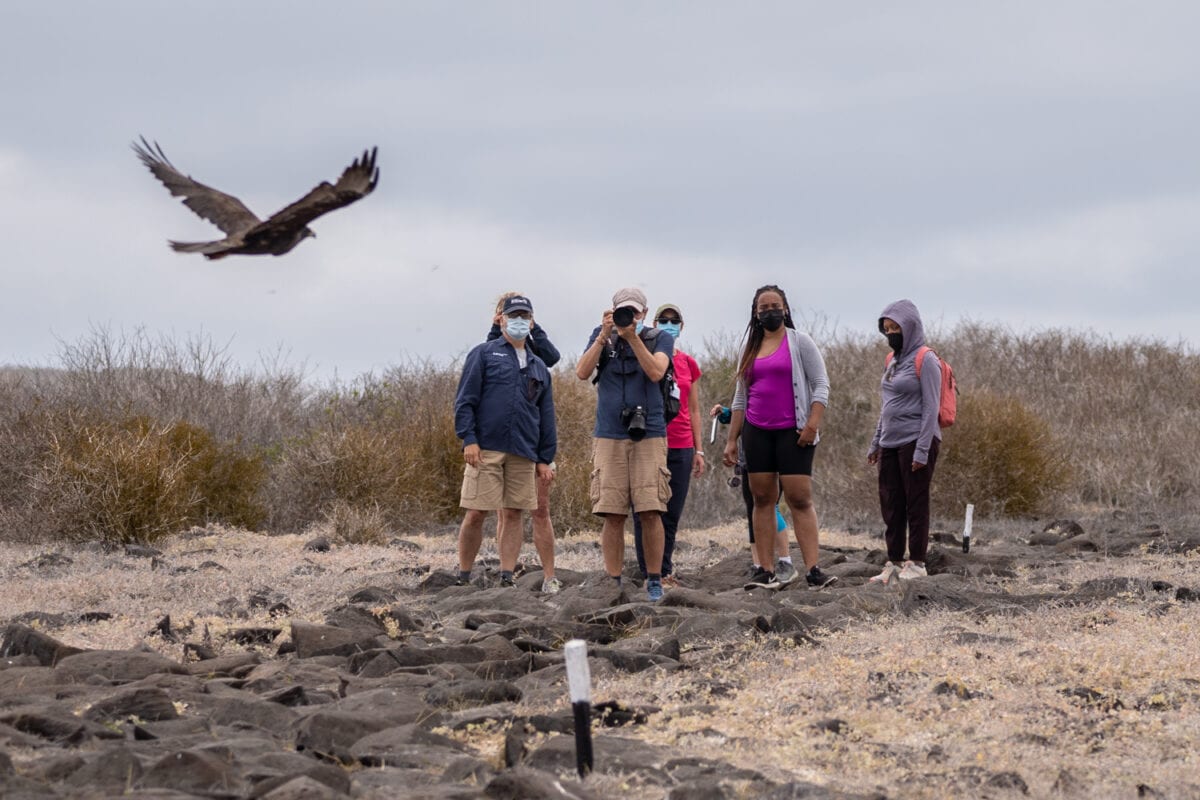
Some good wildlife photography settings to use:
Shutter Speed: 1/1000s
Aperture: On a sunny day F8 is good – adjust based on cloud cover
ISO: I normally set this to auto
Metering: I normally use Multi metering mode. The camera measures brightness on different areas of the image to balance the entire frame.
Focus Mode: Continuous AF
Focus Area: Lock-On/Tracking is ideal. Once you acquire focus on the subject, the camera will track it no matter its position on the frame, so you don’t need to move the focus point manually. Another option is Zone; it allows you to track the bird without worrying about keeping it precisely at the center of the frame. A relatively new setting to also keep in mind and use is the Eye AF. It can help make sure that the eye of the subject is in focus, which is the most important part when taking close-ups of wildlife. This doesn’t work as well for animals in the far distance.
Drive Mode: Continuous
Sony a7 III Full-Frame Mirrorless Camera
Sony a7 III Full-Frame Mirrorless Interchangeable-Lens Camera Optical with 3-Inch LCD, Black
I earn a commission if you click this link and make a purchase, at no additional cost to you.
04/26/2022 12:28 am GMT
Tripod
A tripod is really helpful on the bird cliffs. You can set it up quick and get some great steady shots of birds on the cliffs. I used my Peak Design Travel Tripod for this trip and loved it. It’s SO SMALL and easy to quickly put up.
Peak Design Travel Tripod
A travel tripod that packs down to the diameter of a water bottle—without compromising height, stability, or features. Radically faster to setup and takedown, our tripod features ergonomic adjustment points, built-in mobile compatibility, and thoughtful details at every turn.
I earn a commission if you click this link and make a purchase, at no additional cost to you.
LensCoat Gear Protection
I was also really happy I had my LensCoat Raincoat and Lens Covers with me which helped protect your lens and camera against salty sea spray and possible rain storms (even though I was there in dry season). As with any wildlife photography, I love having the camo designs to help protect from scrapes and bumps, preserving its resale value. But it also helps break up the shape of your lens, making it less noticeable to wildlife.
LensCoat RainCoat Camera Rain/Snow Cover
Don’t let the weather stop your photography! This innovative cover provides protection for your camera and lens from the elements like rain, snow, salt spray, dirt, sand and dust while allowing you easy access to the camera and lens controls.
I earn a commission if you click this link and make a purchase, at no additional cost to you.
LensCoat LensCovers
LensCoat® lens covers offers your valuable equipment some protection from scrapes and bumps, preserving its resale value. It also help break up the shape of your lens, making it less noticeable to wildlife.
I earn a commission if you click this link and make a purchase, at no additional cost to you.
GoPro
This is a must for underwater snorkeling footage! That was really the only time I used it but I was happy I had it with me for all of the sea lion antics!
Peak Design Backpack
I carried all of this stuff in my Peak Design backpack. It is lightweight and durable, and it held up great in the rain showers we had occasionally. I was able to fit in my telephoto lens, wide angle lens, and everyday lens, tripod, Gopro, and various batteries and SD cards without a problem.
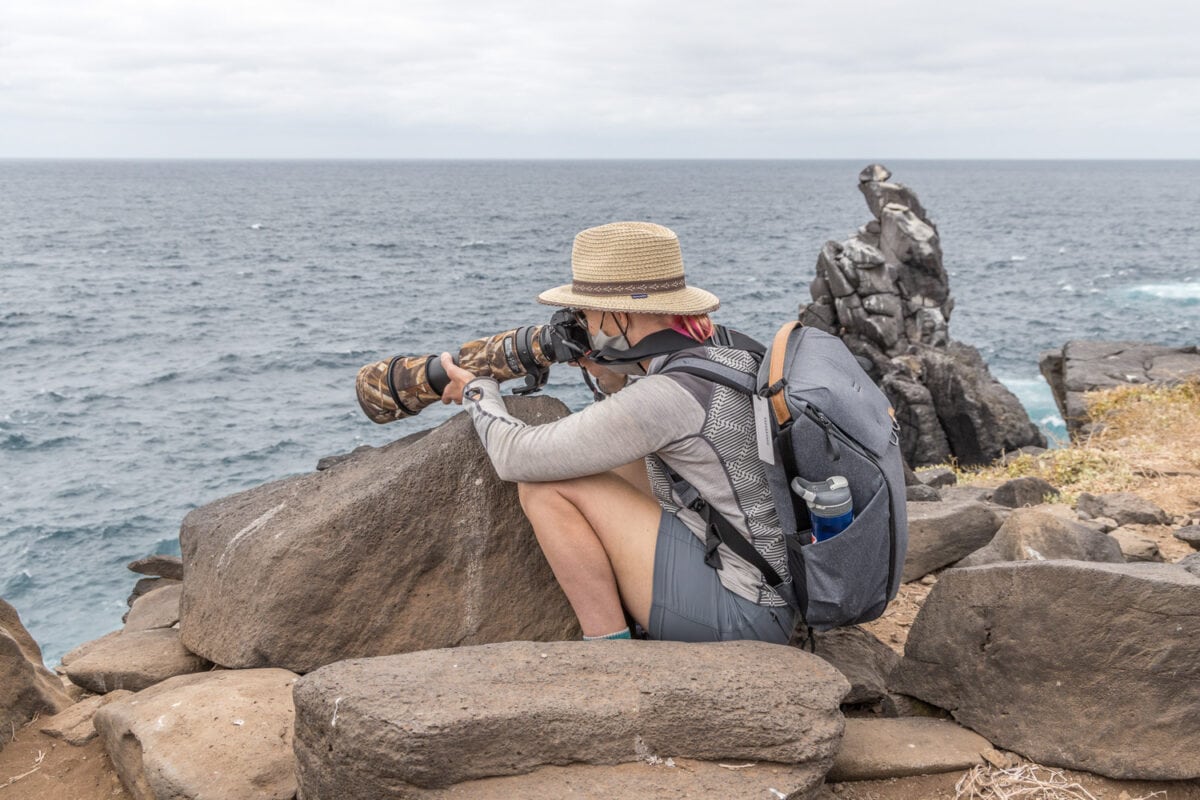
However, I think for this type of wildlife photography heavy trip, I might take something with a bit more padding for the lenses. It wasn’t an issue, but I normally like my Lowepro Whistler bag which is designed more for photography trips rather than backpacking with a little photography.
Peak Design Everyday Backpack
The Everyday Backpack is built around access, organization, expansion, and protection. Unique MagLatch hardware provides lightning fast top access, with dual side access via two weatherproof UltraZips.Inside, 3 configurable FlexFold dividers keep gear organized, protected, and not bunched at the bottom of your bag. Dedicated sleeves for up to 15” laptop, tablet, or documents, plus a variety of internal slip pockets for small items. 100% recycled 400D weatherproof shell keeps everything safe.
I earn a commission if you click this link and make a purchase, at no additional cost to you.
You can see my article on the best camera bags for travel here
Galapagos Cruise on the La Pinta Yacht
As much as I loved being on land viewing the incredible animals in the Galapagos – the time on the La Pinta Yacht wasn’t too bad either! The La Pinta offers an upscale more luxurious experience on board, and that was always nice to come back to after excursions!
The first thing that struck me as I go acquainted with La Pinta was the size and quality of the cabins. I’ve been on a lot of expedition ships, but these rooms were beautiful and had a big floor to ceiling window. I had a queen bed in my cabin plus a really lovely newly designed bathroom with a great shower and plenty of space.
Speaking of space, I even had a desk and a lounge chair in my room.
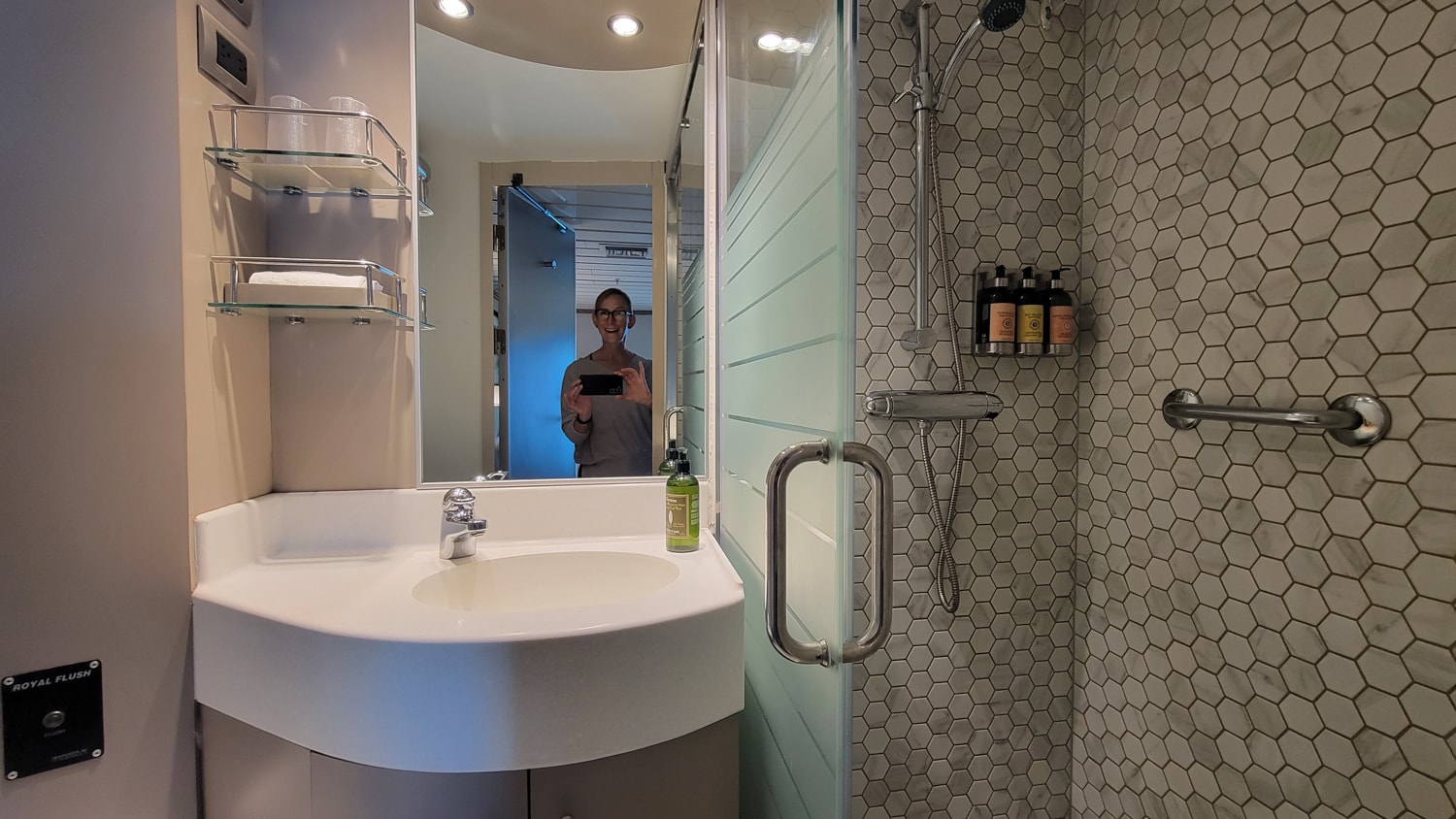
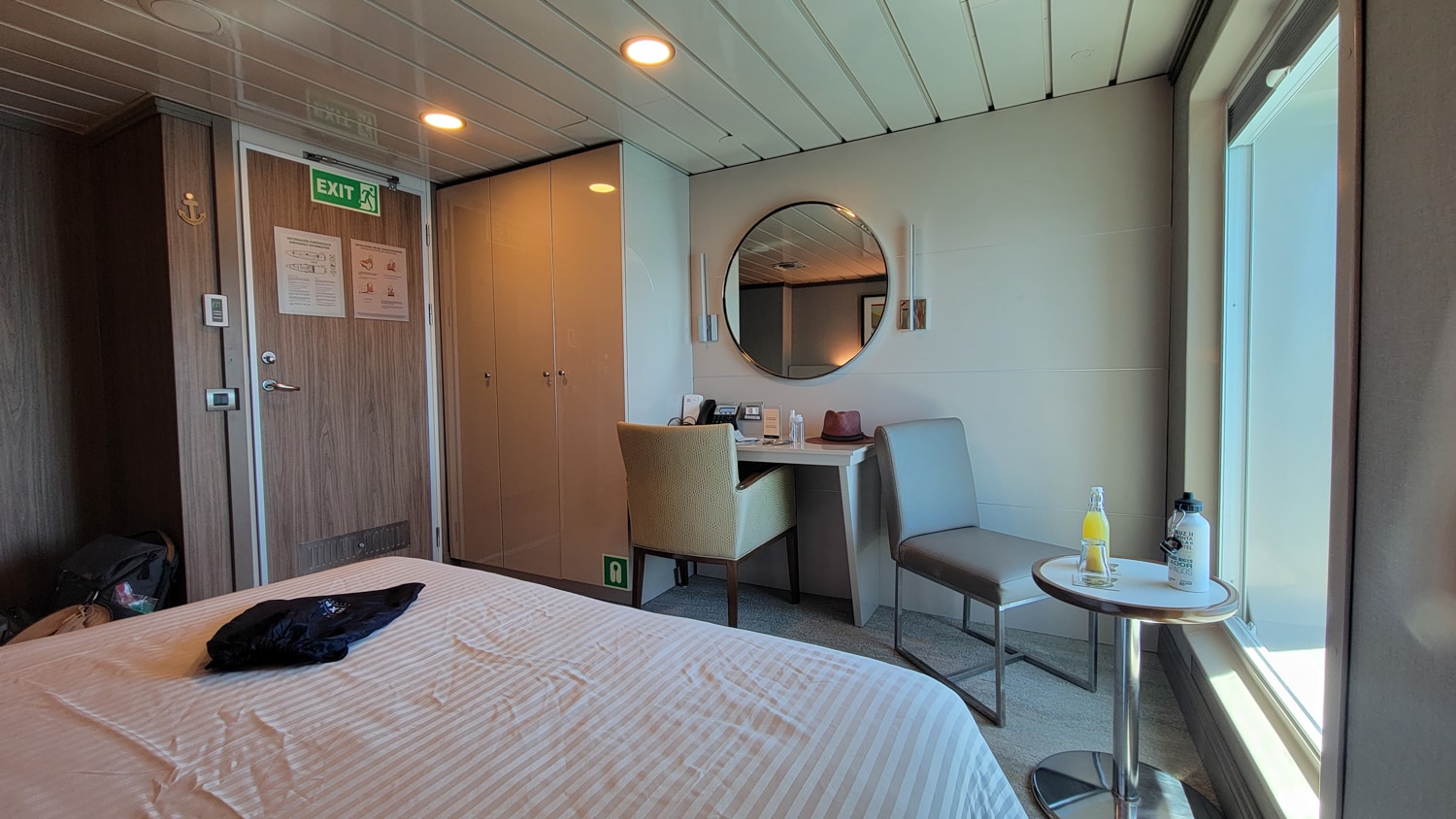
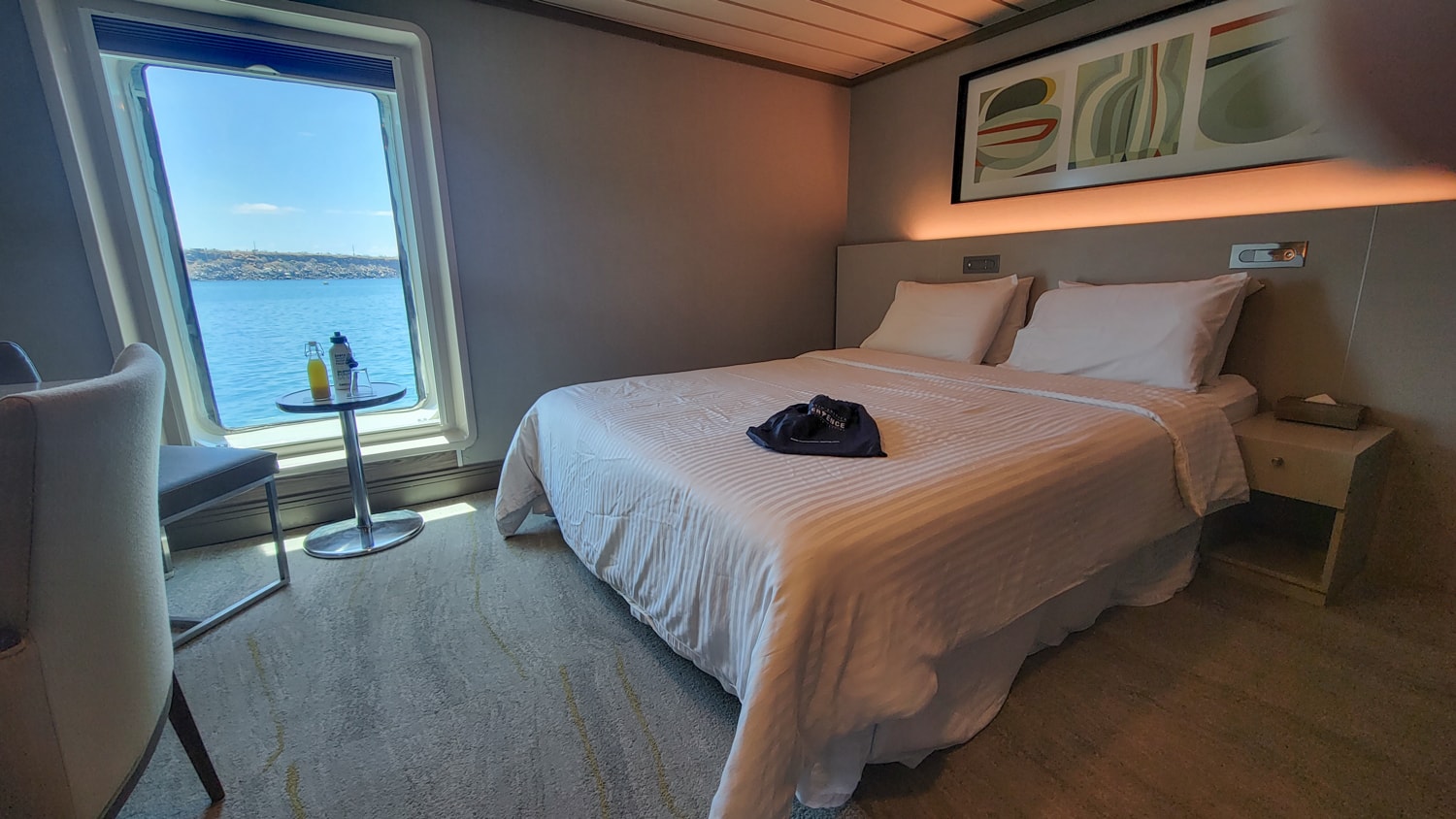
There are a number of social spaces on the ship where you can lounge. At the front of the ship is a big bar and lounge area where we would have our nightly briefings. There was also a library full of books and information about the region. One of my favorite places was the big outdoor terrace out back where they also had special BBQ’s and happy hours every night. Next to that you’ll even find a hot tub which I enjoyed more than a few times!
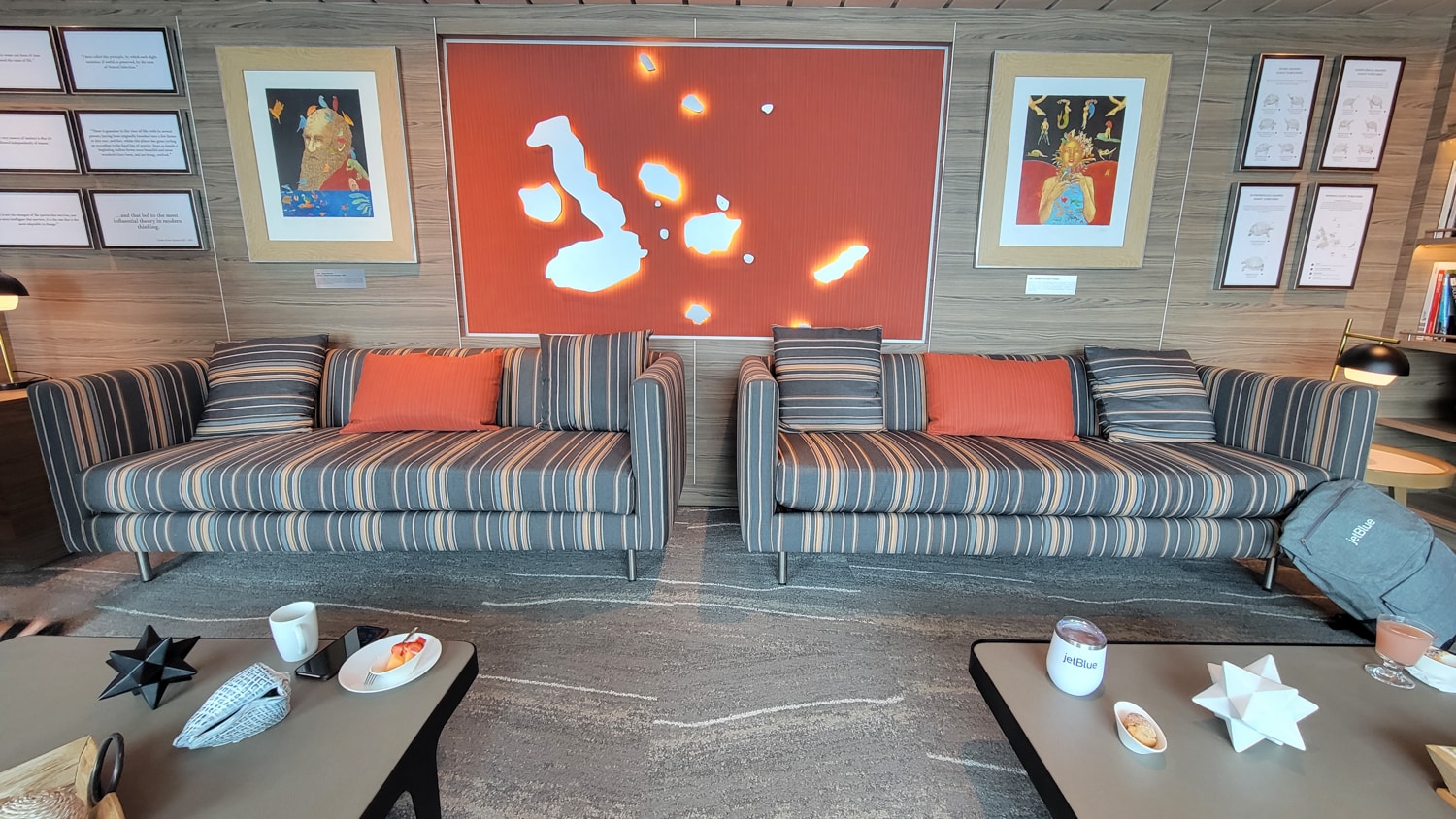
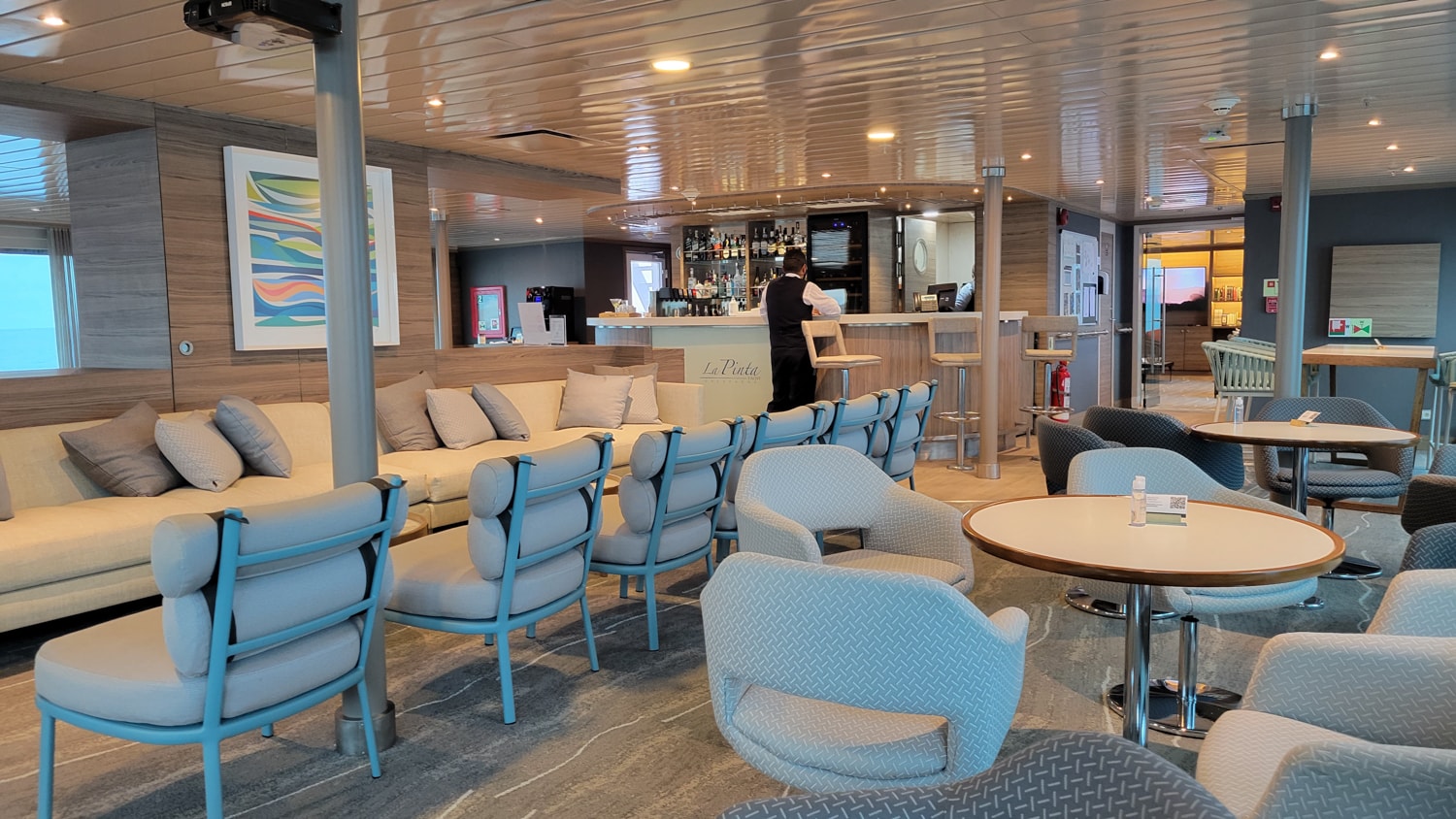
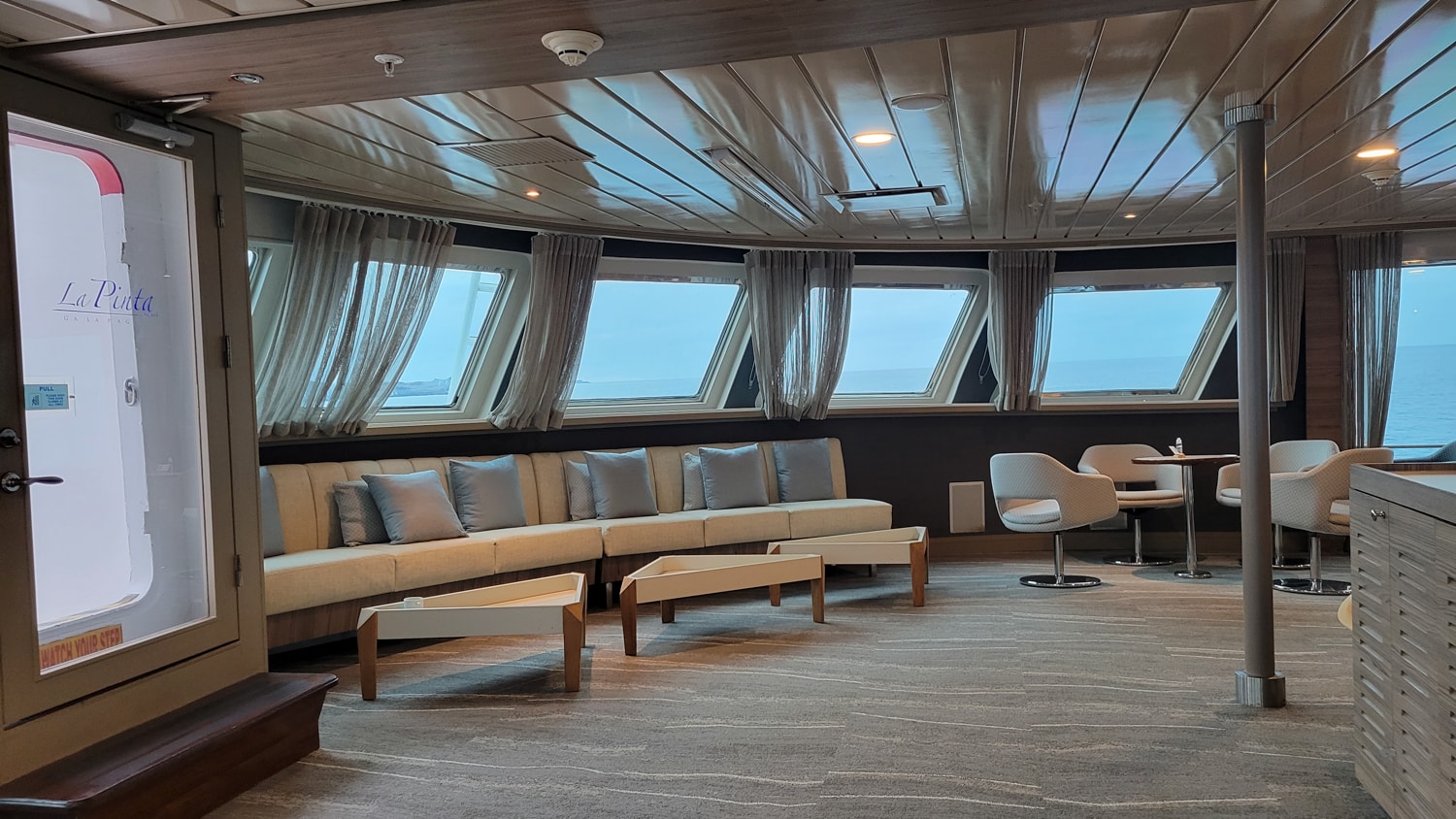
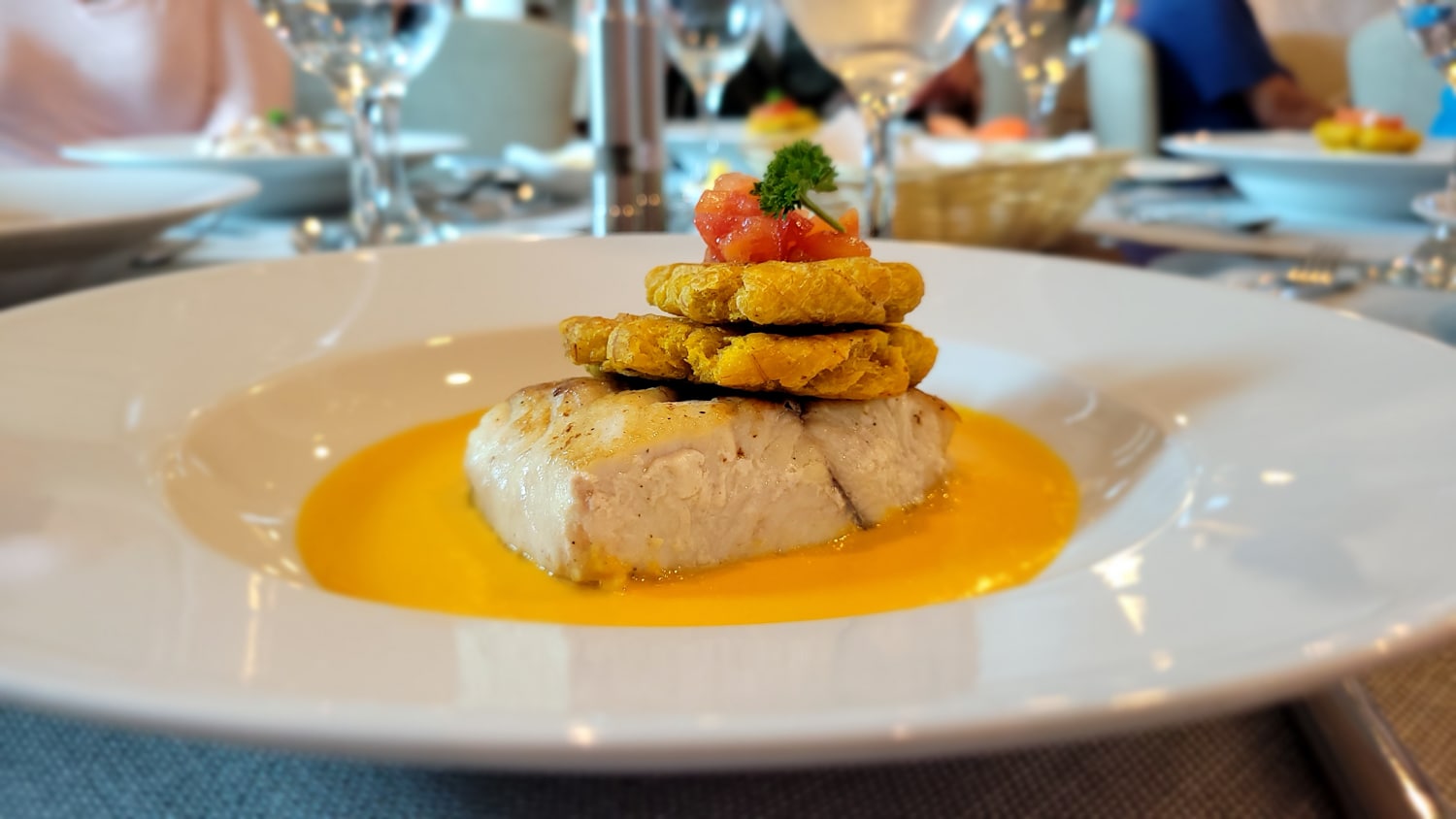
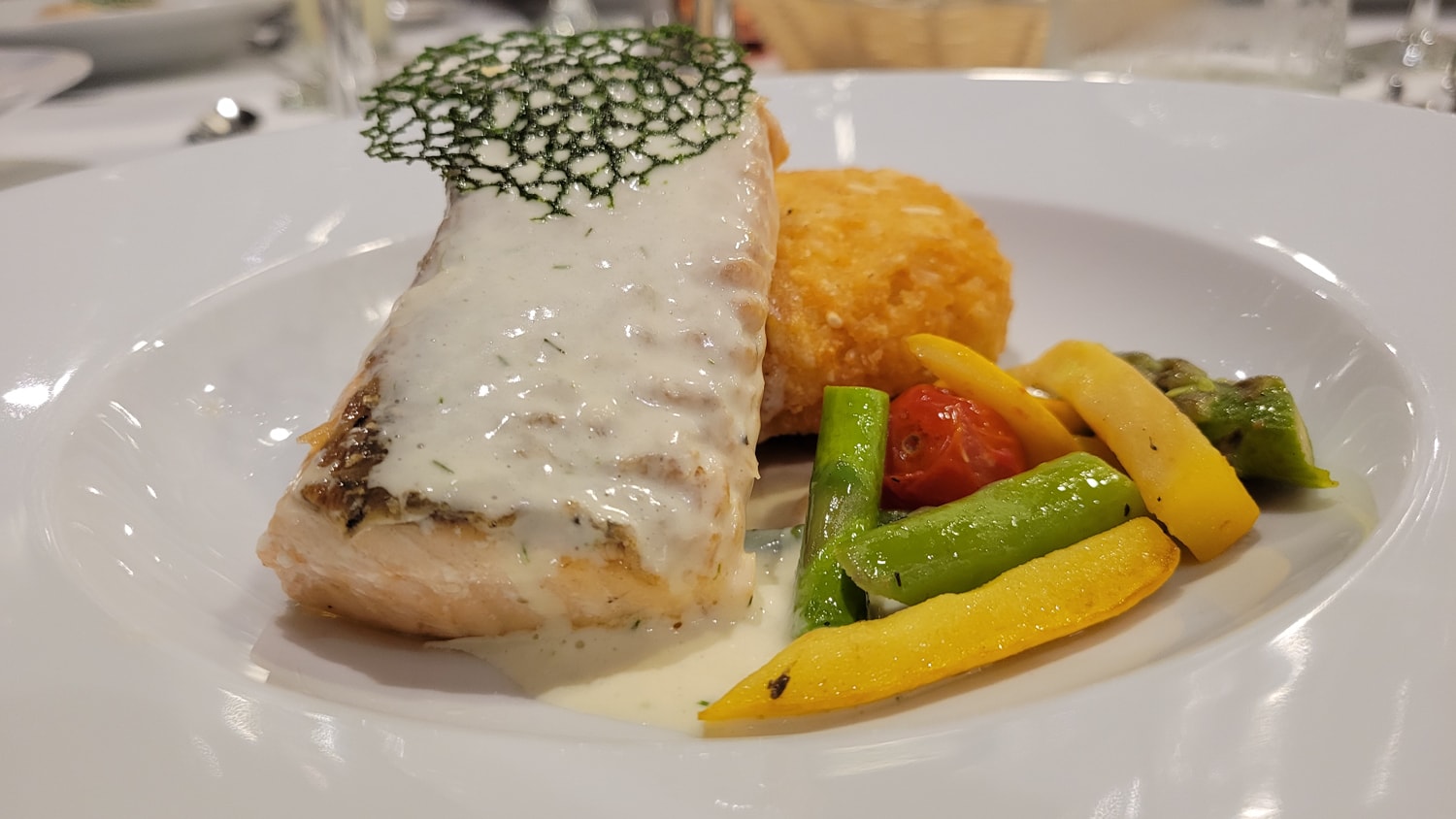
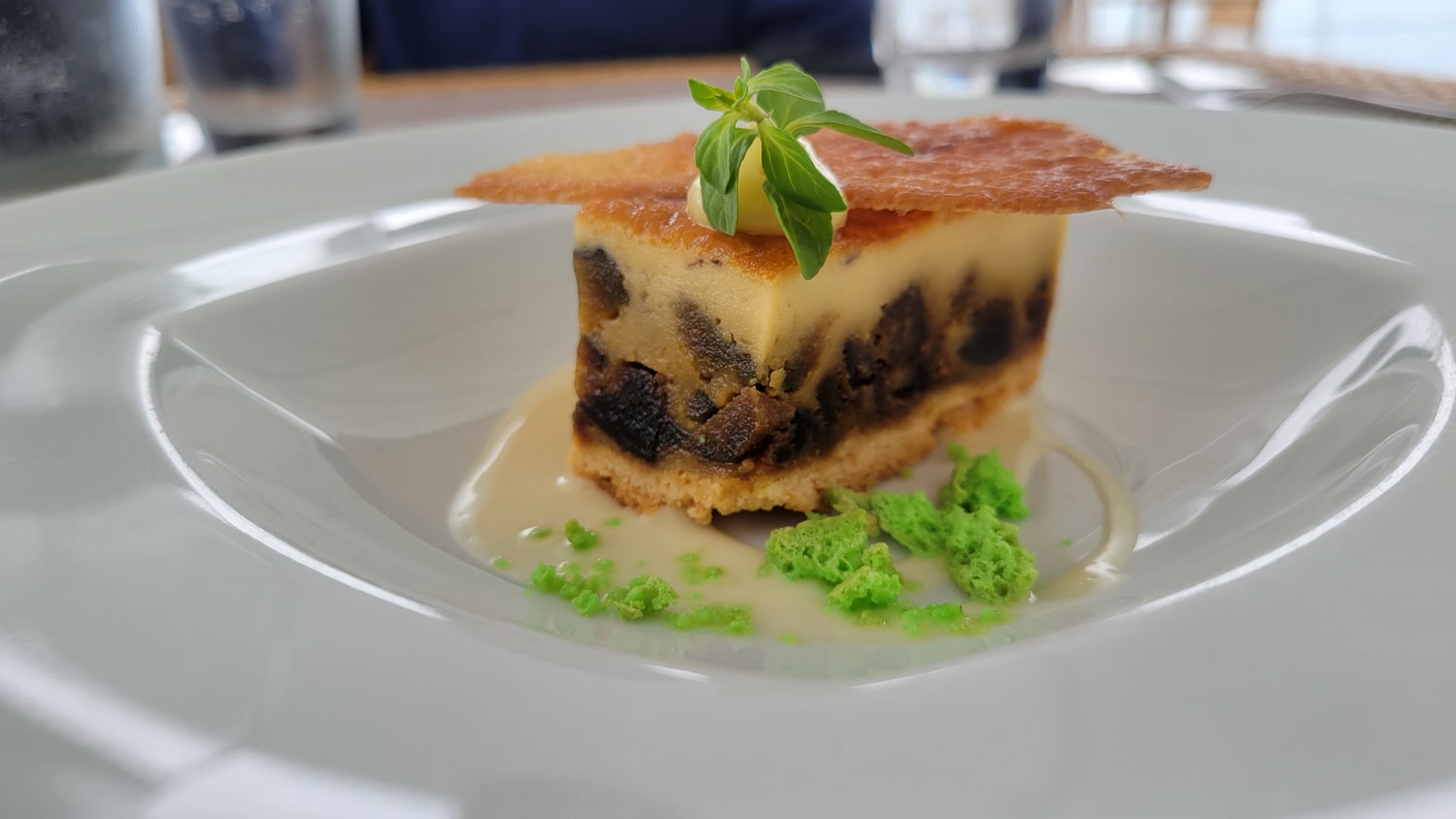
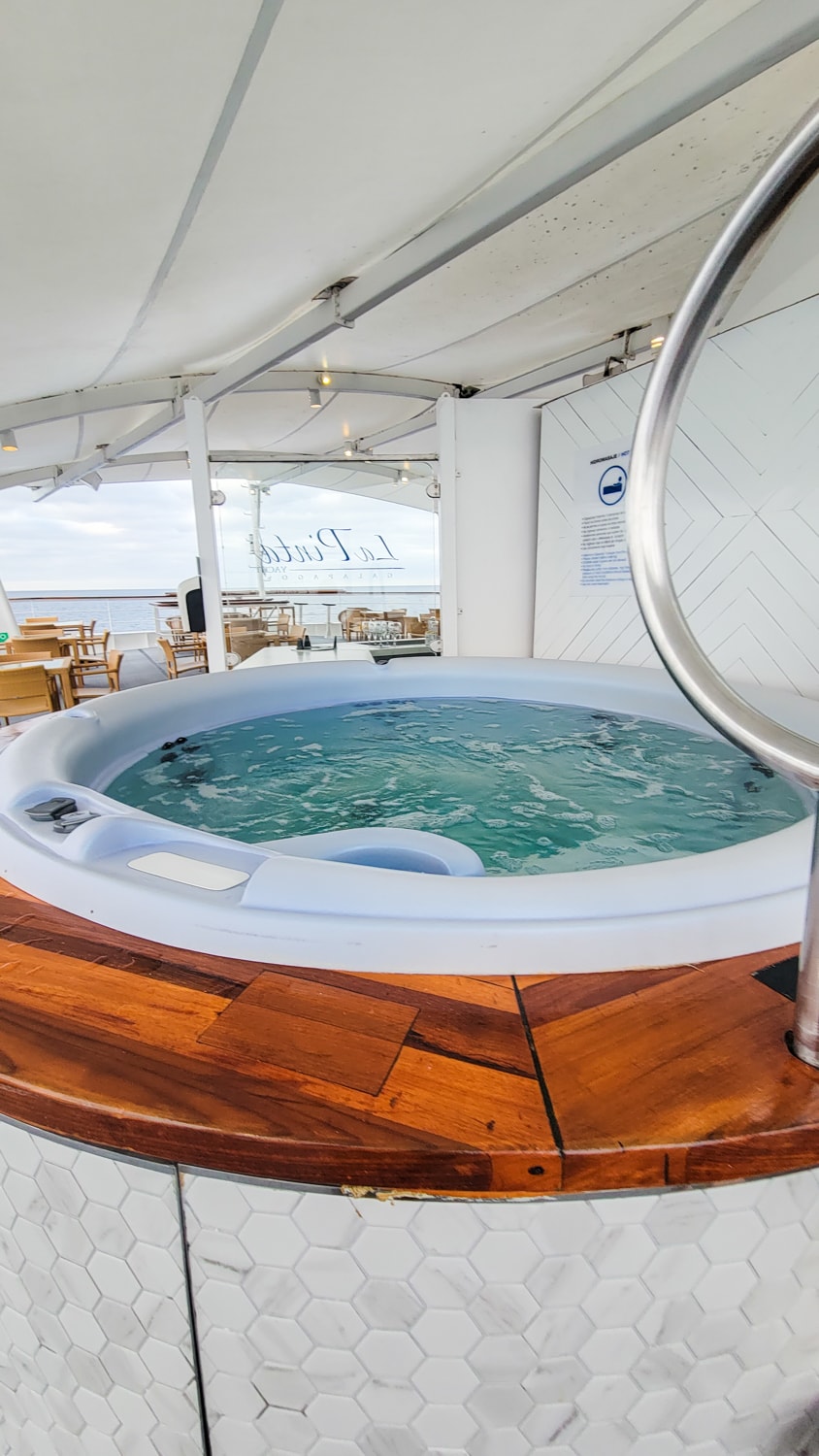
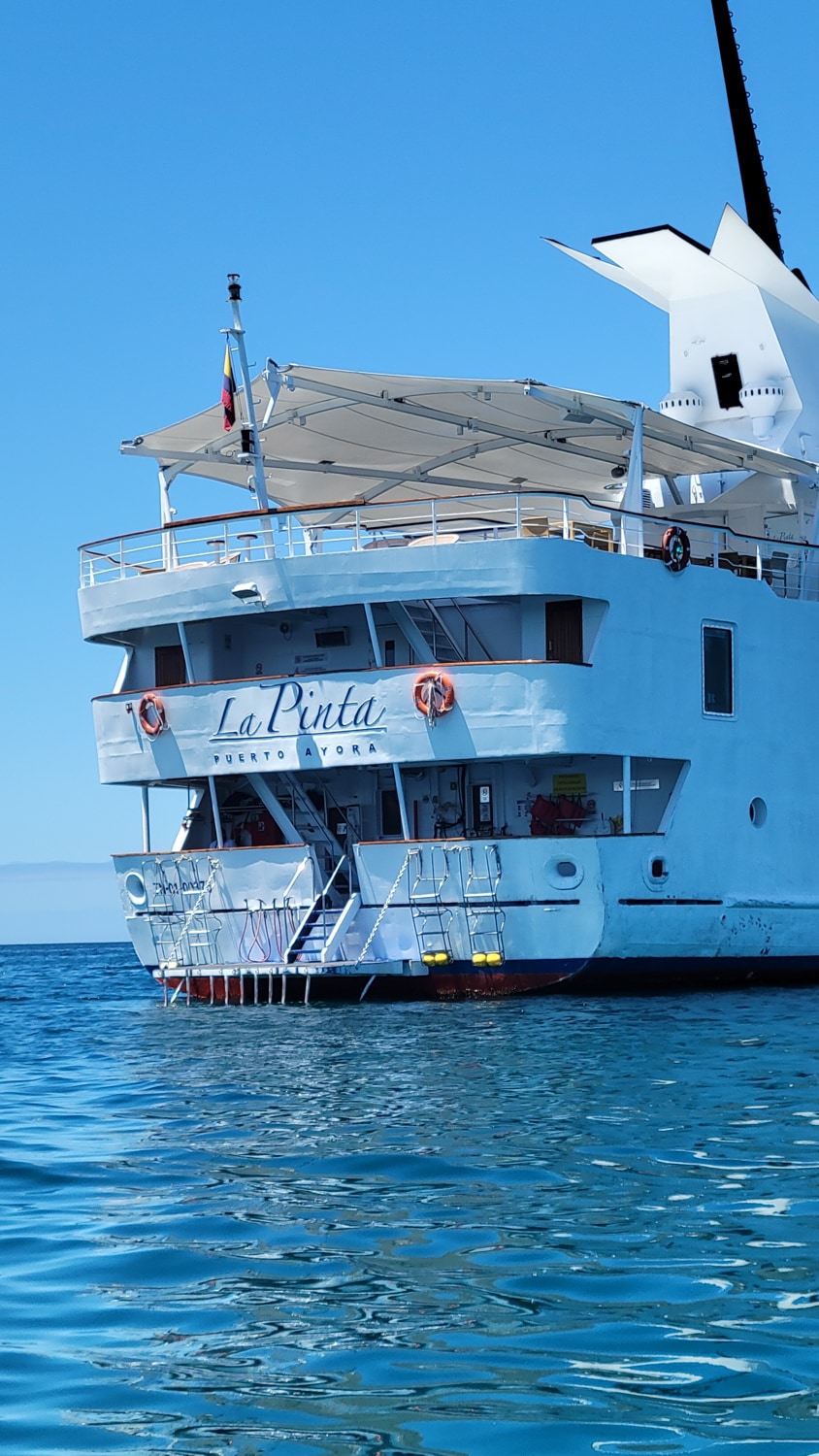
Food
This is really where the luxury experience came into play – the food was incredible. We had delicious choices of meat or fish each night at a sit-down dinner in the dining room.
Guides
All of our guides were locals from Ecuador which I really appreciated. They were knowledgeable and really helpful. You could tell they loved these islands and the wildlife.
One of the advantages of going on a bigger capacity ship is that they have a number of guides which means that you never have more than 12 people in your group when you go ashore. So even though it’s a bigger Galapagos cruise ship, you still get an intimate experience when on shore.
Sustainability and Galapagos Cruising
When traveling aboard the La Pinta, your footprint is minimized and your visit becomes part of conservation efforts thanks to a company-wide commitment to sustainability. The footprint caused by your visit to the Galapagos isn’t just reduced, it is actually offset and canceled via their exemplary Carbon Neutral Program.
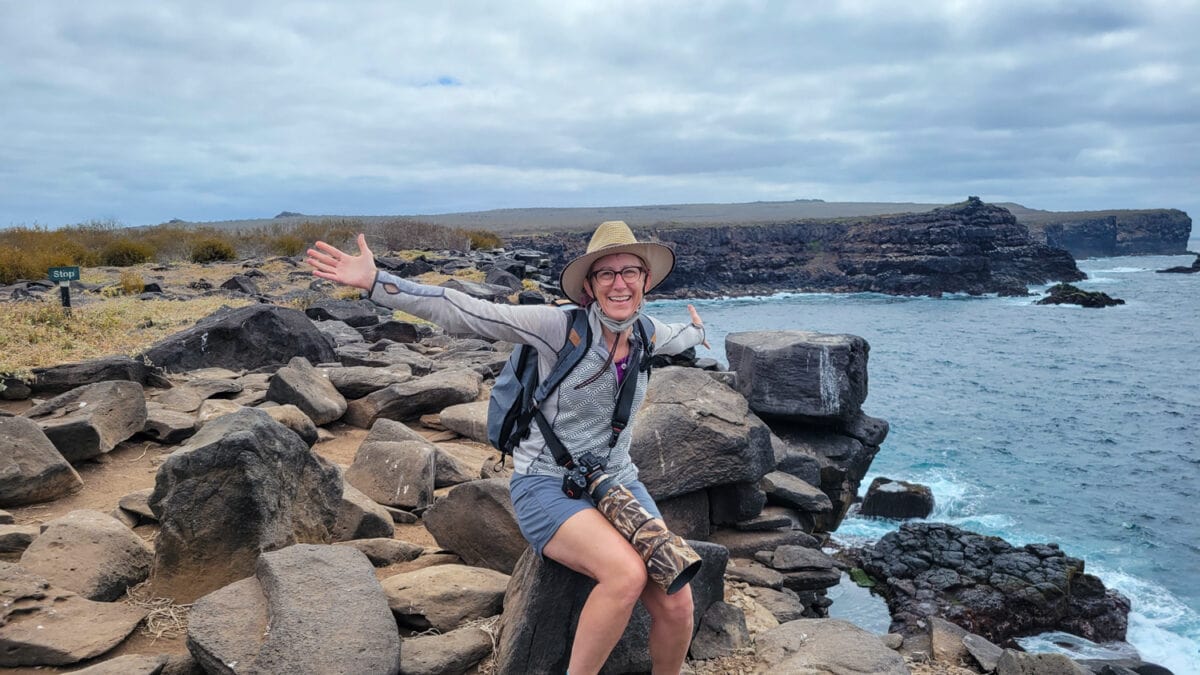
I might have waited a while to go to the Galapagos for the first time – but it was worth the wait. I can see why it’s on many people’s travel bucket list – it deserves to be there. If you are looking for a Galapagos cruise that is right for you, be sure to check out the luxurious La Pinta Yacht and Metropolitan Touring; they will deliver a memorable Galapagos vacation.
Related
There has never been a better time to plan your next trip and make your Dream vacation a reality . Whether you've been dreaming of relaxing on a sun-kissed beach, exploring ancient cities, or embarking on an epic adventure, now is the perfect moment to make it happen.


